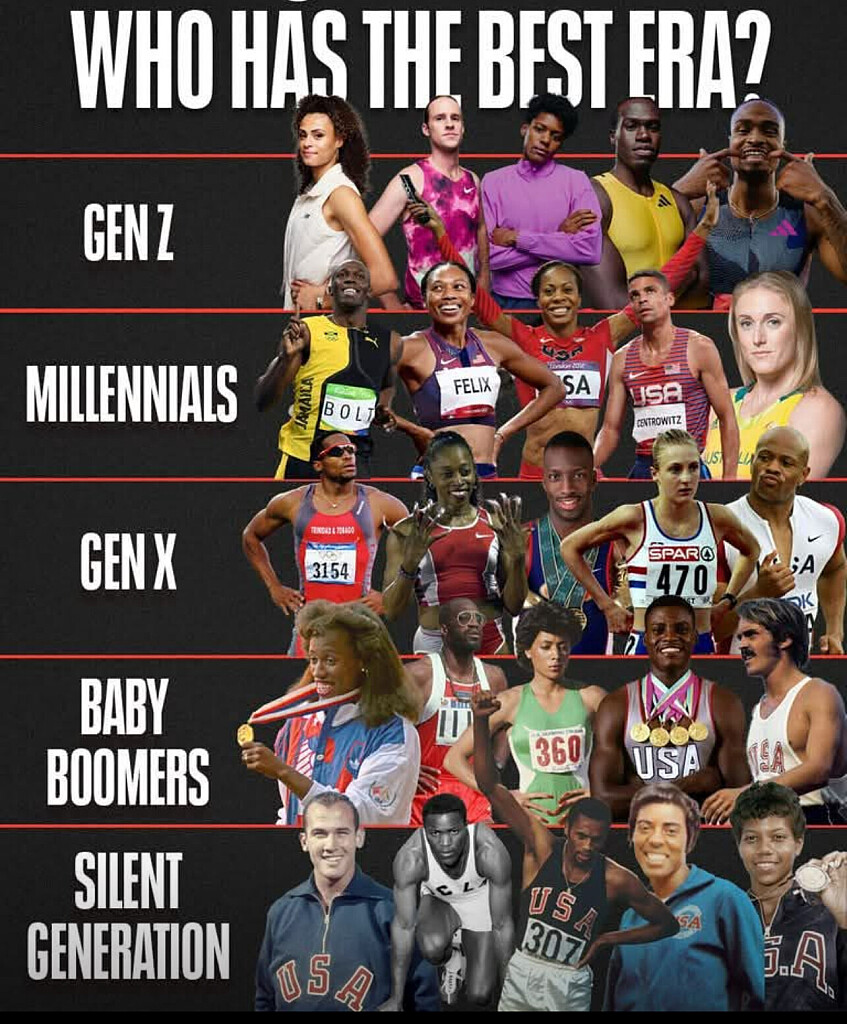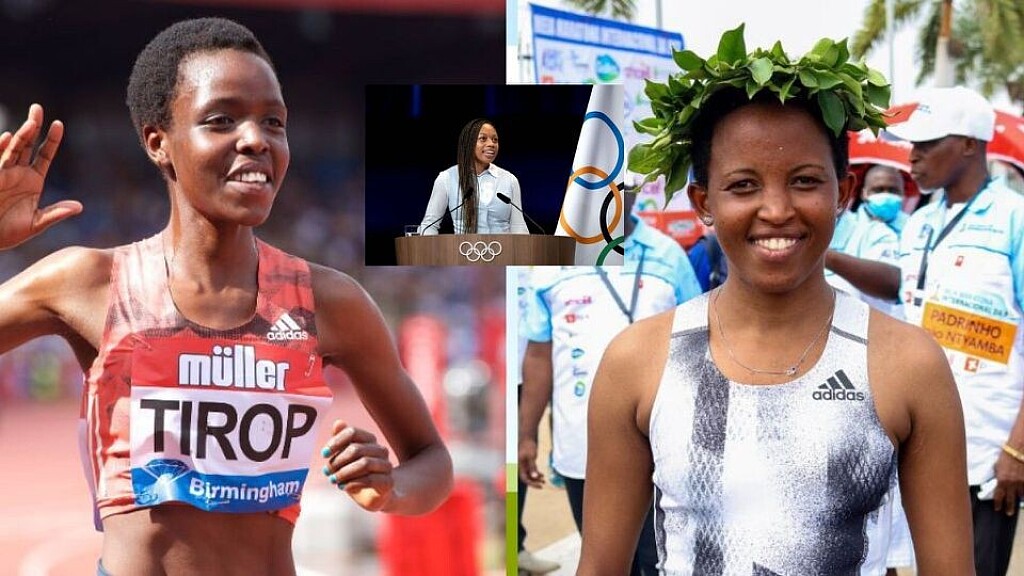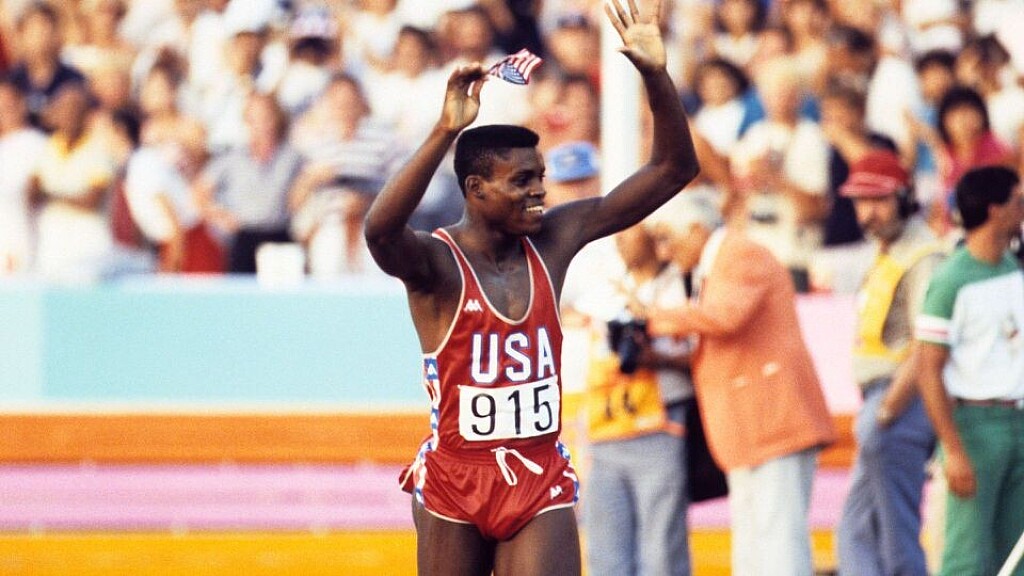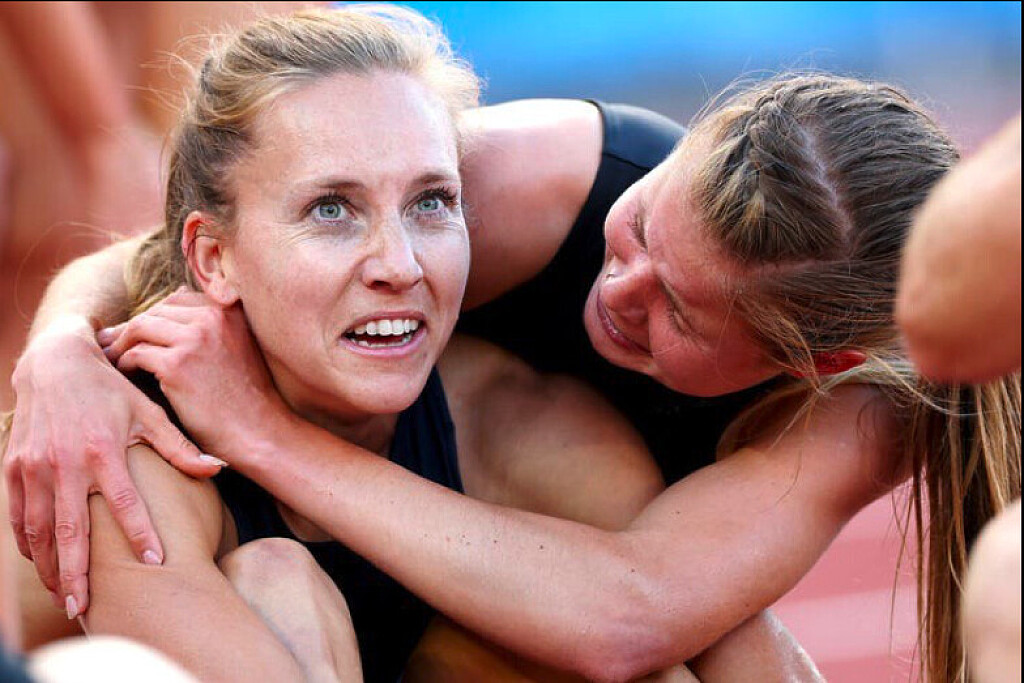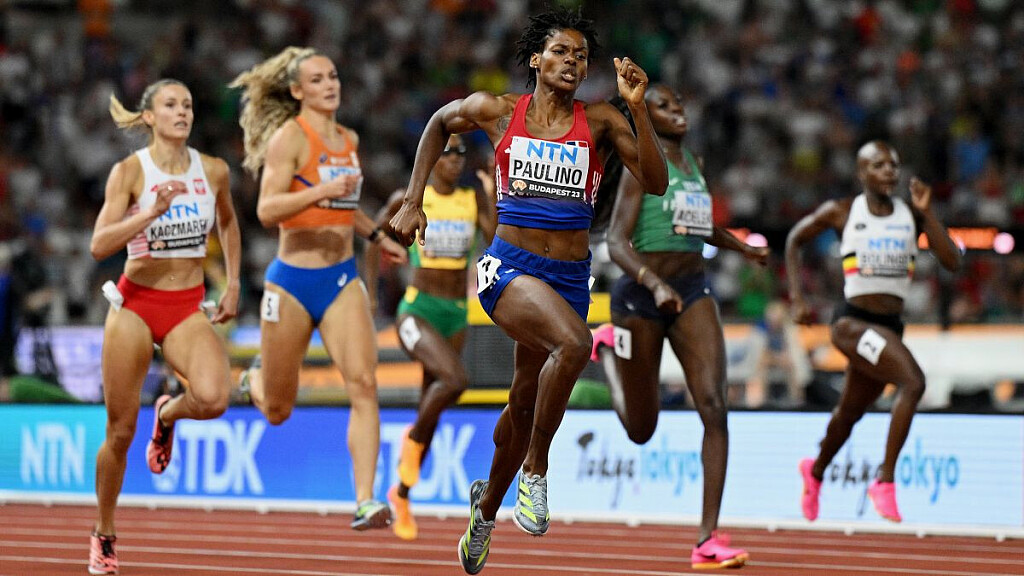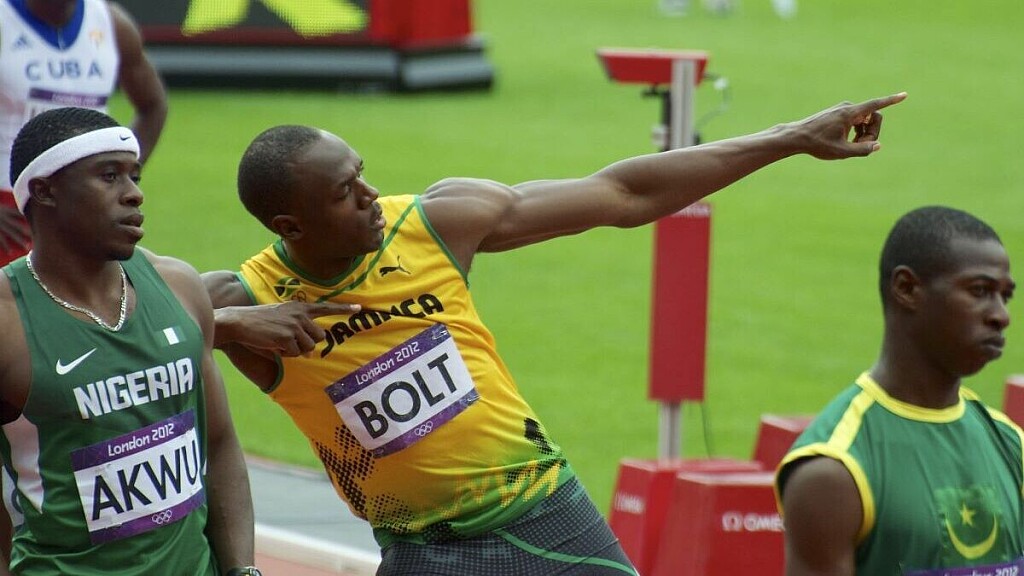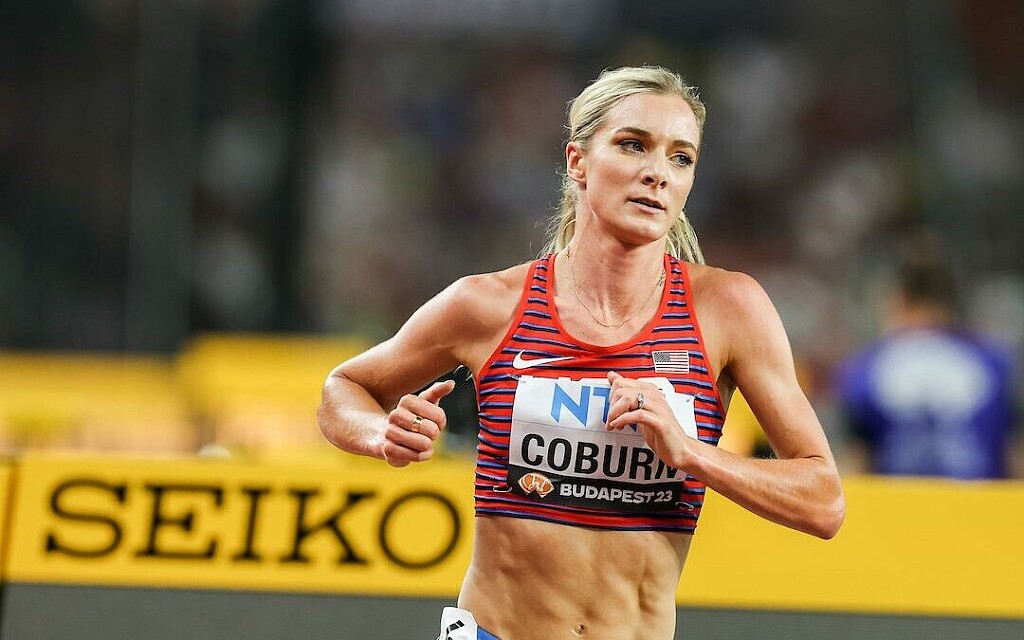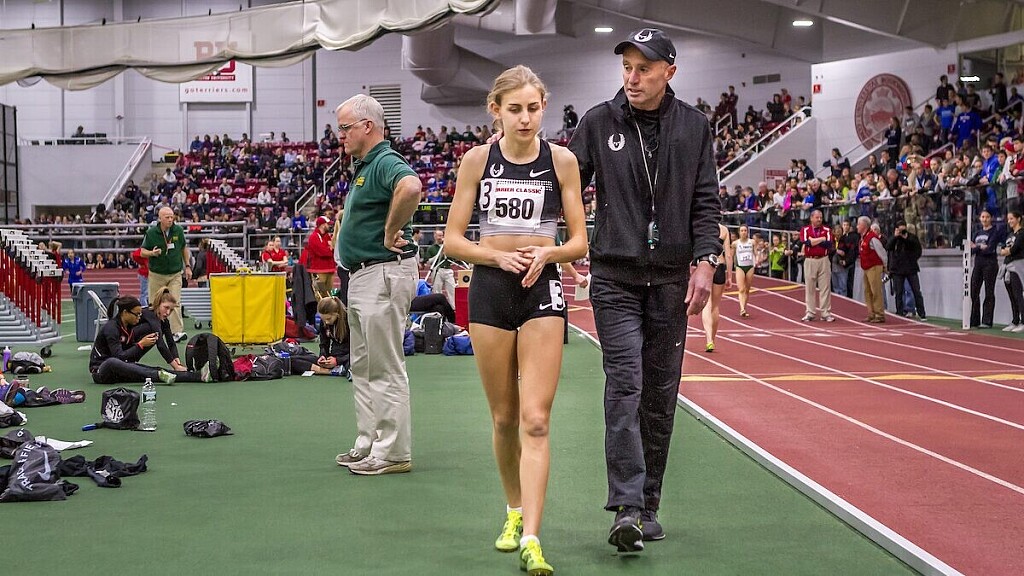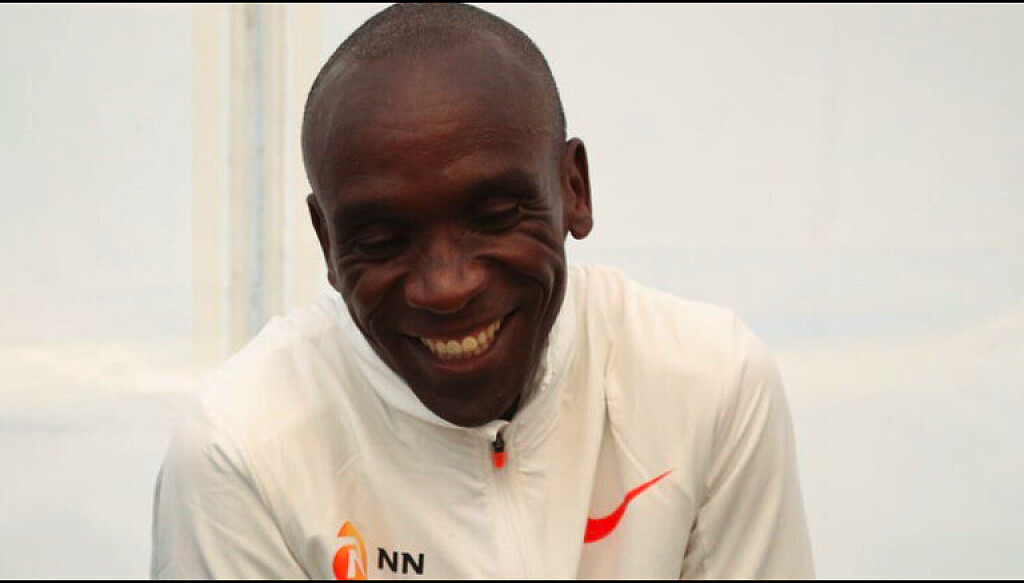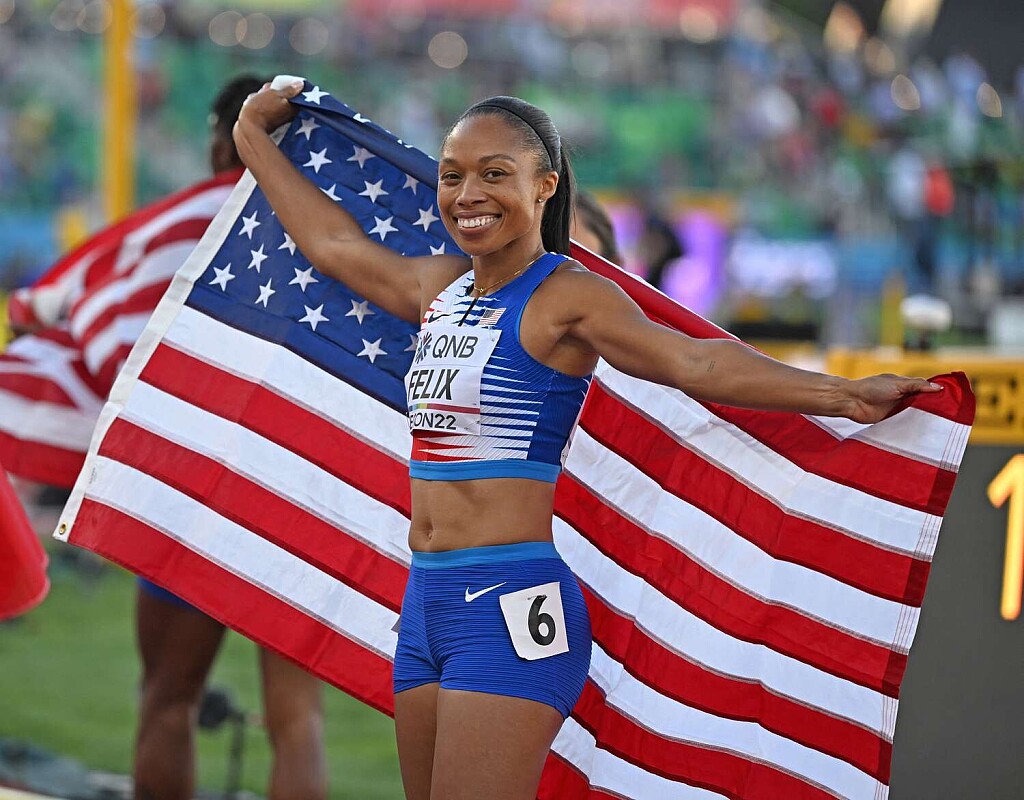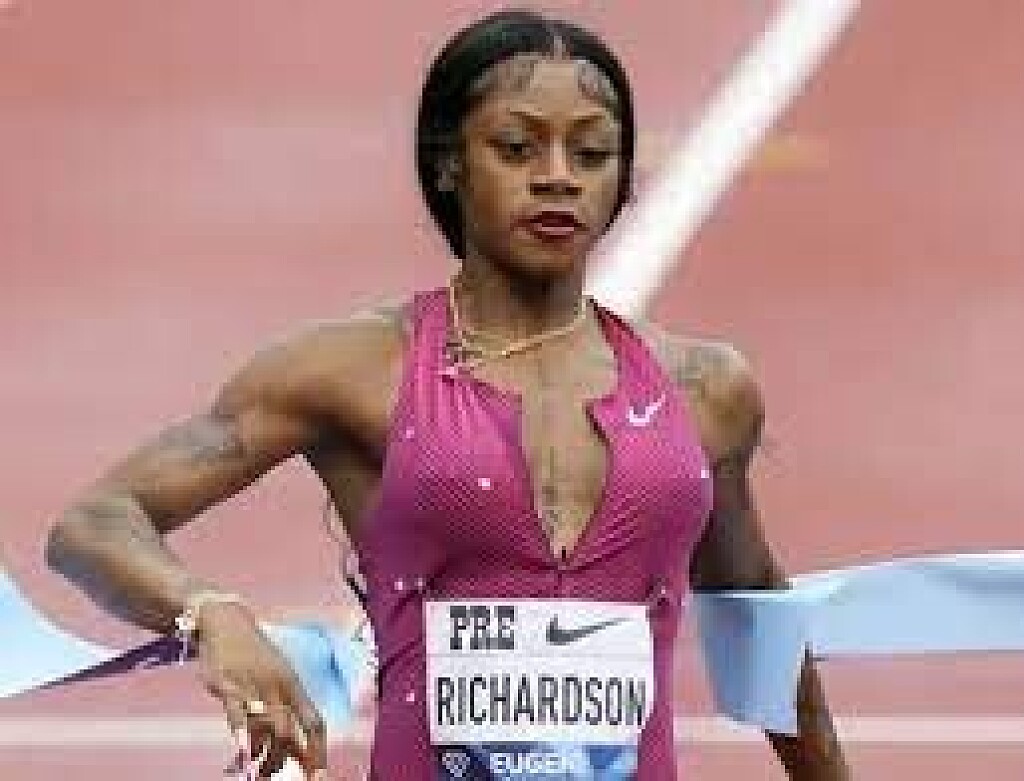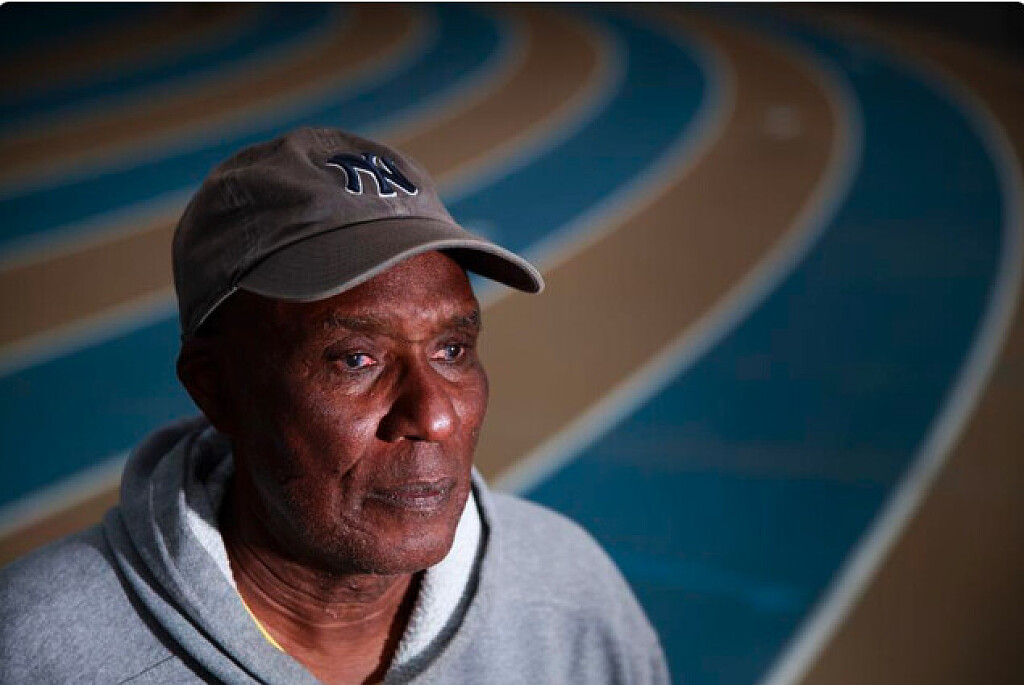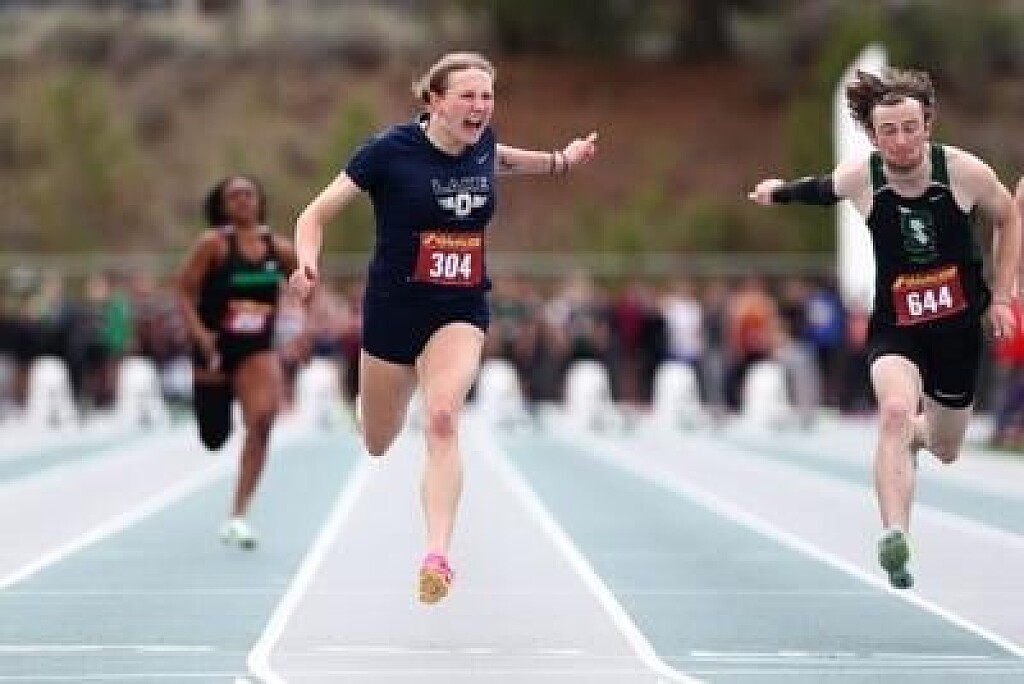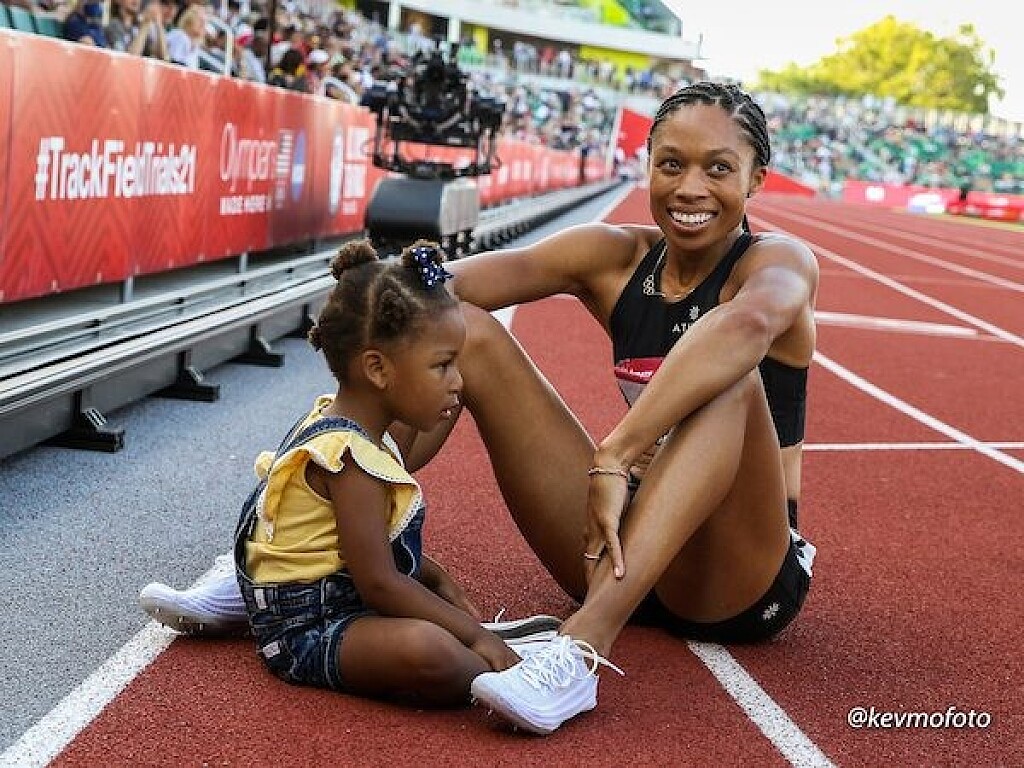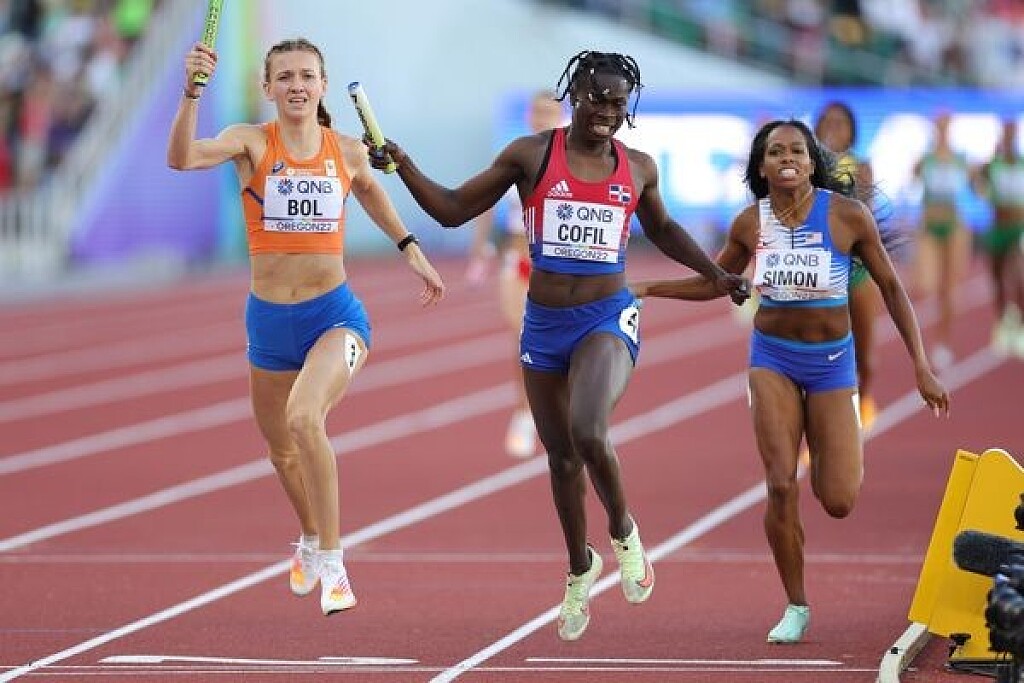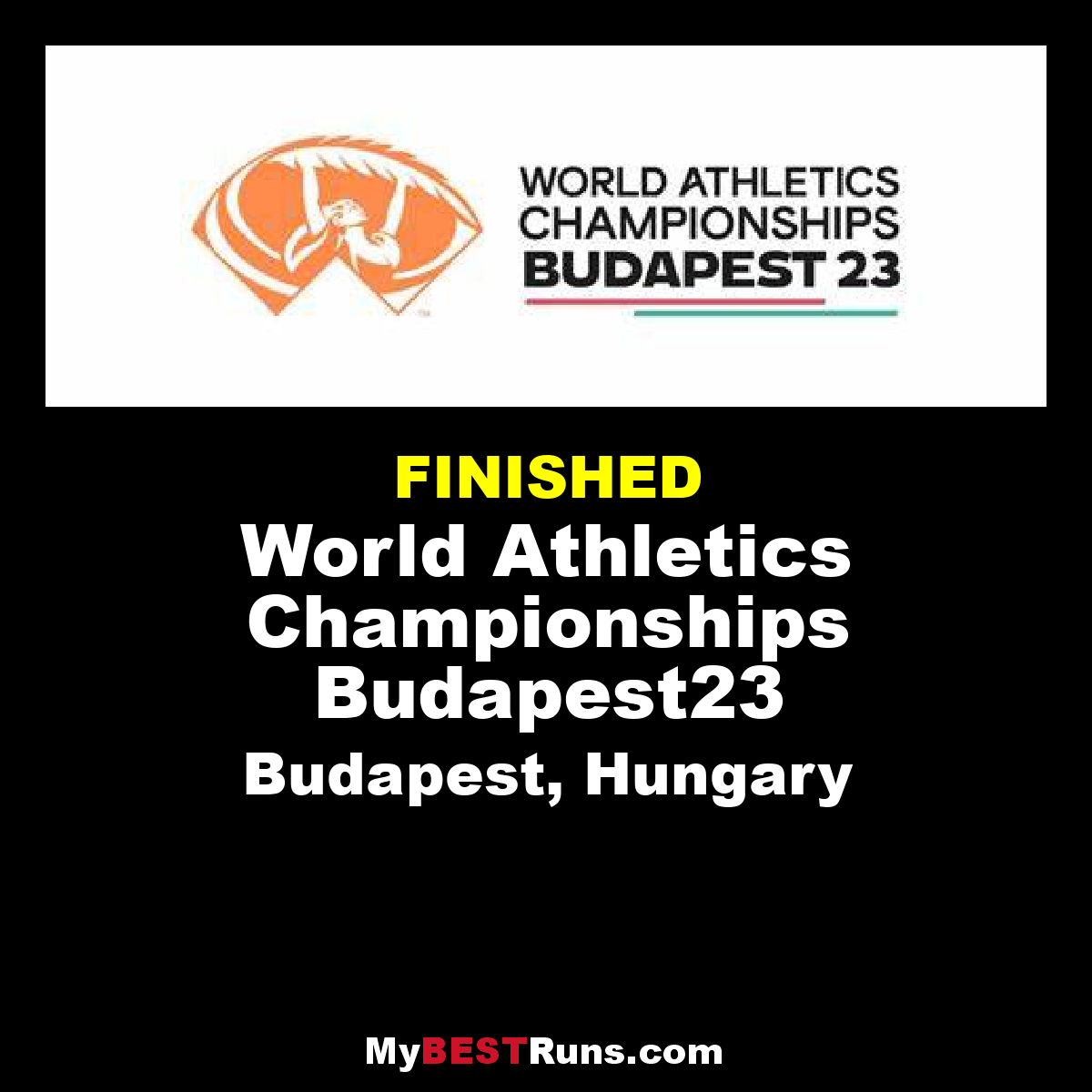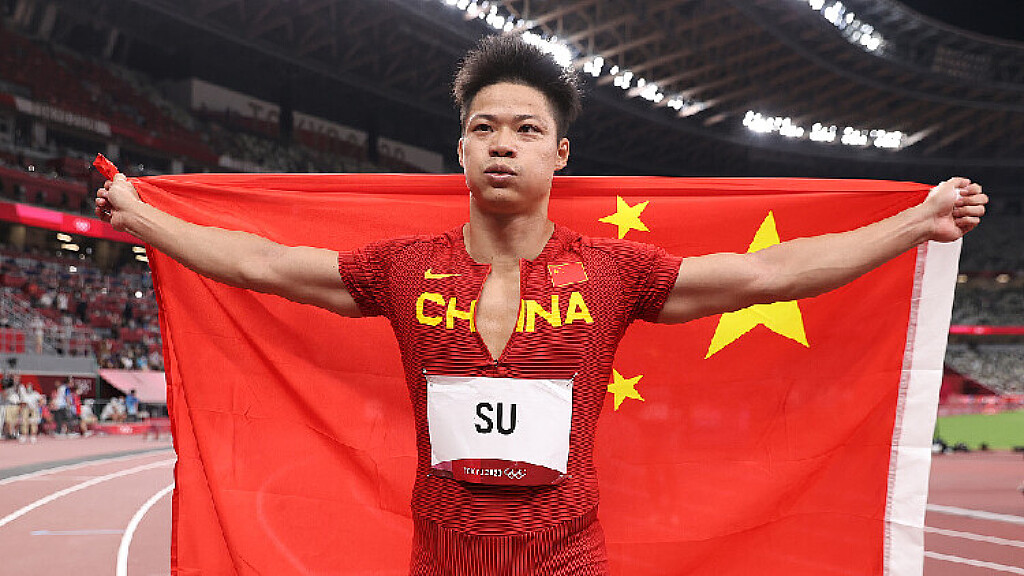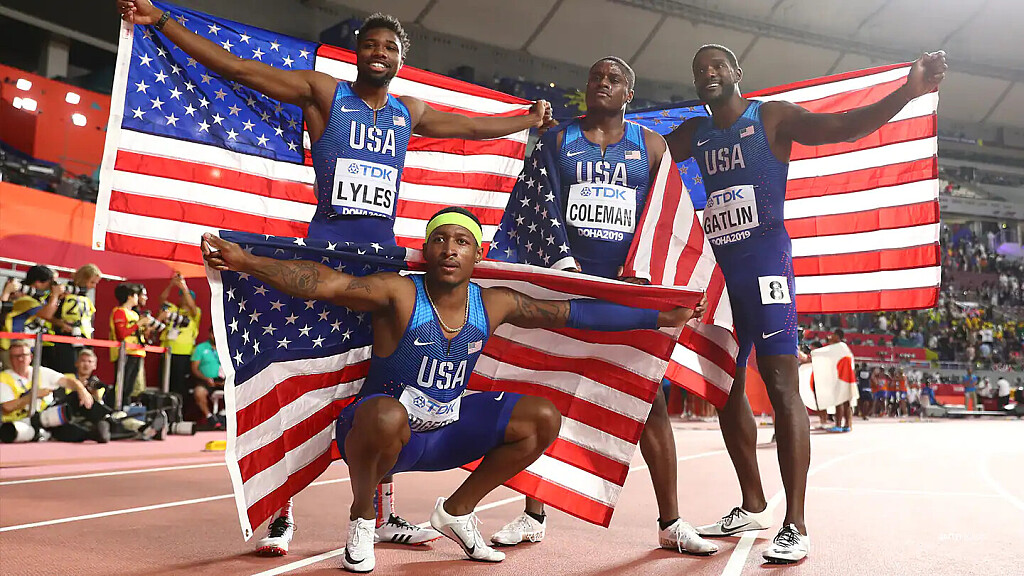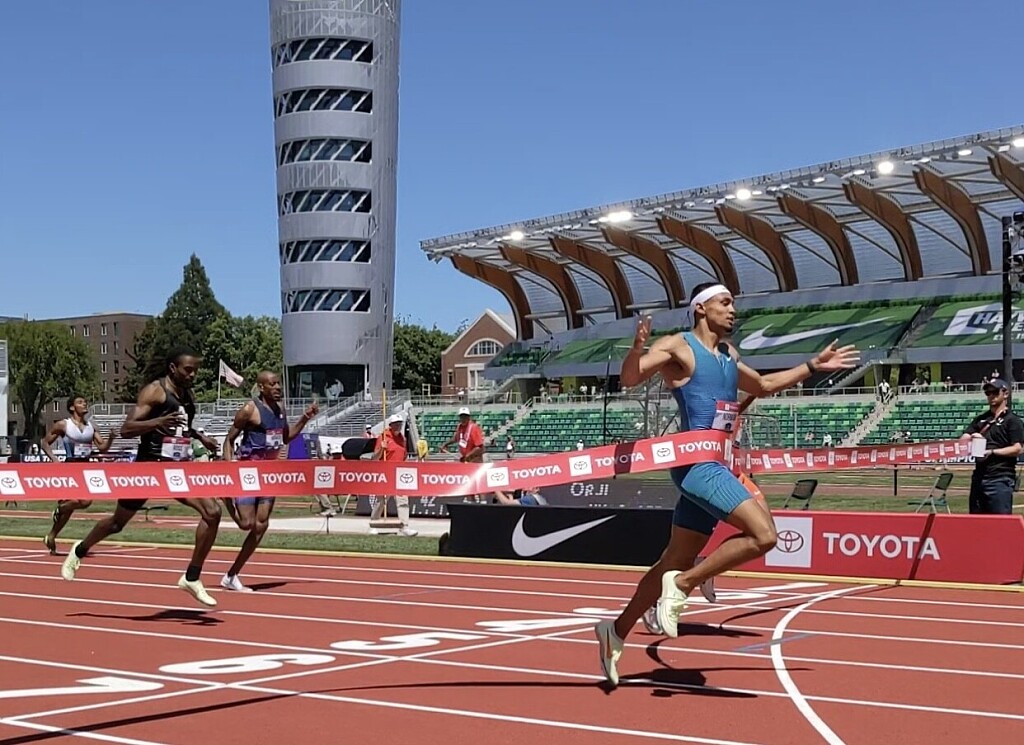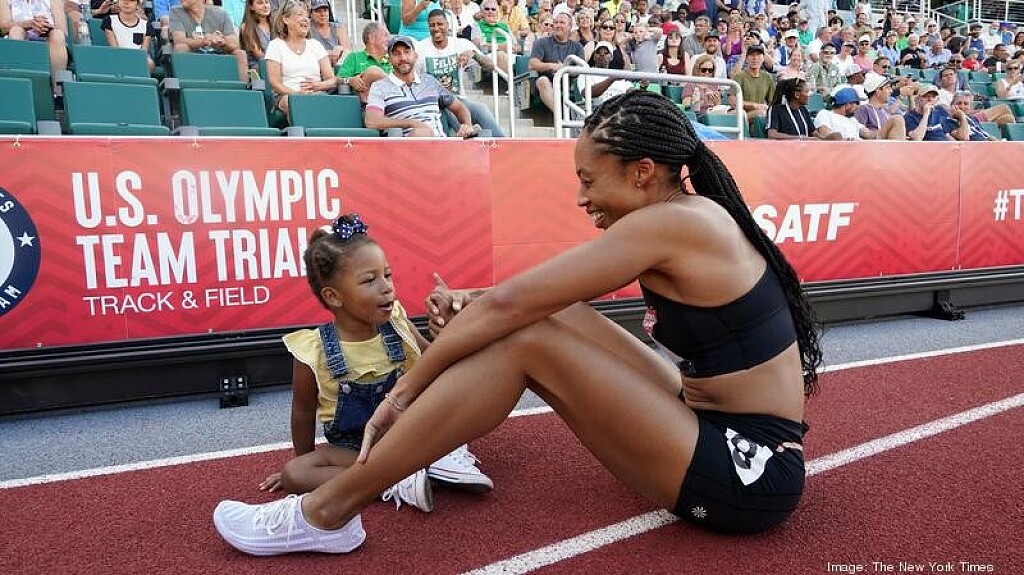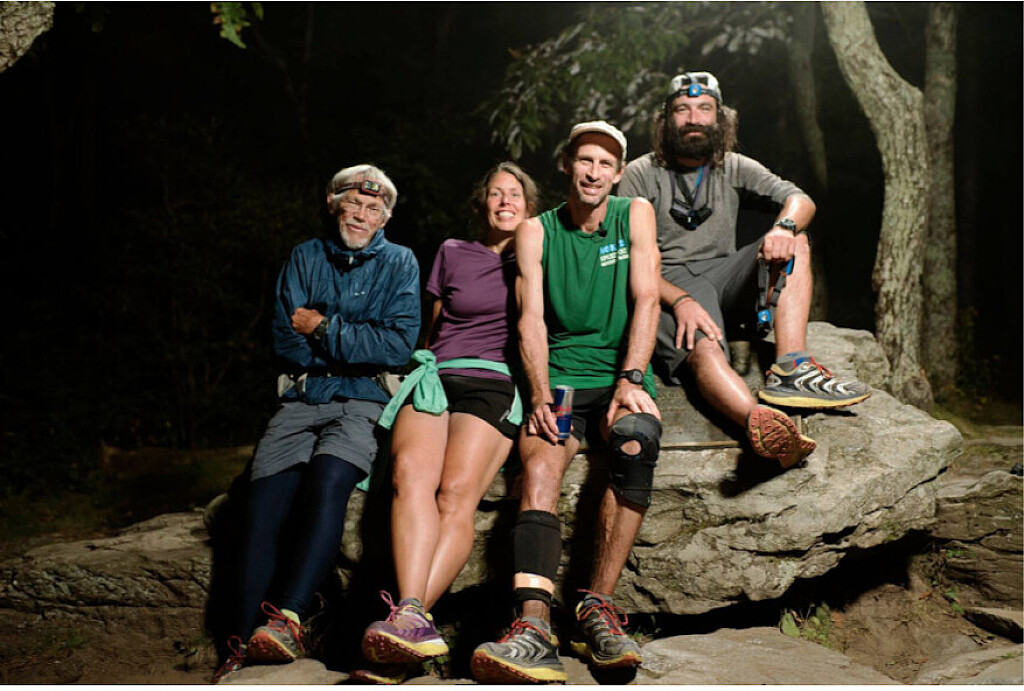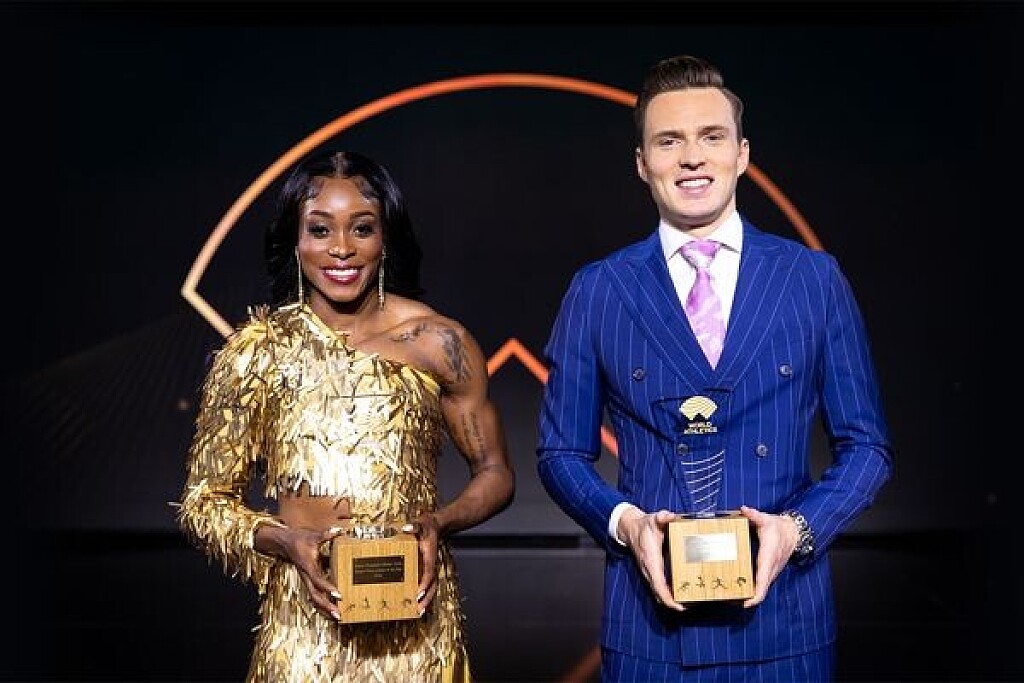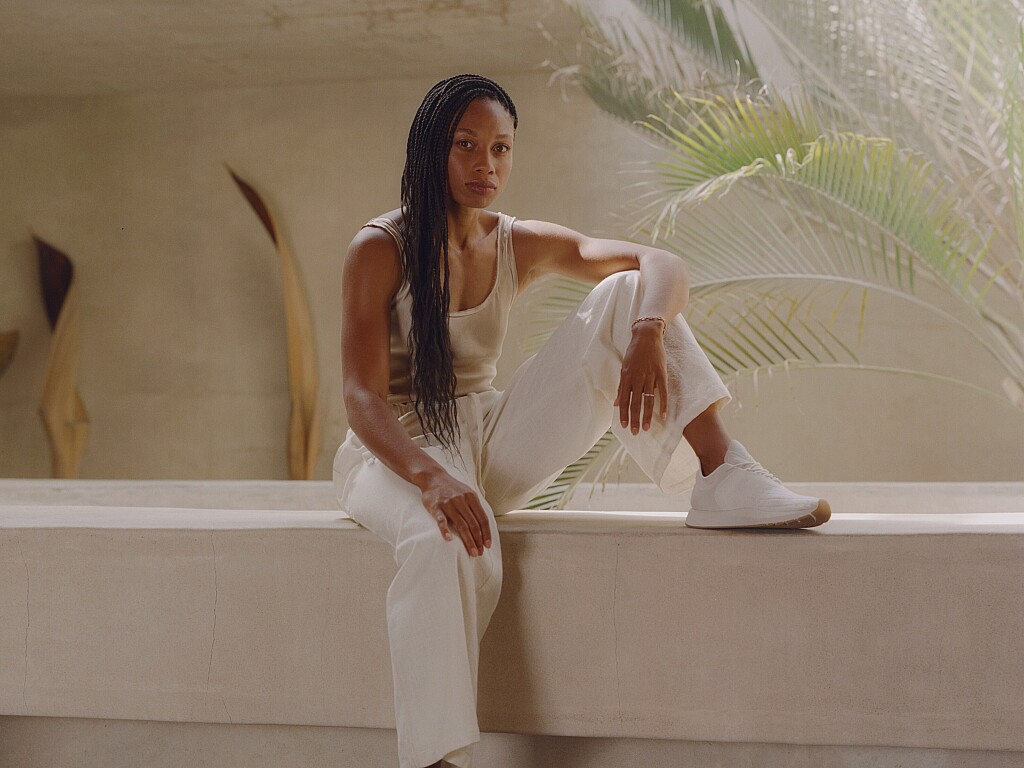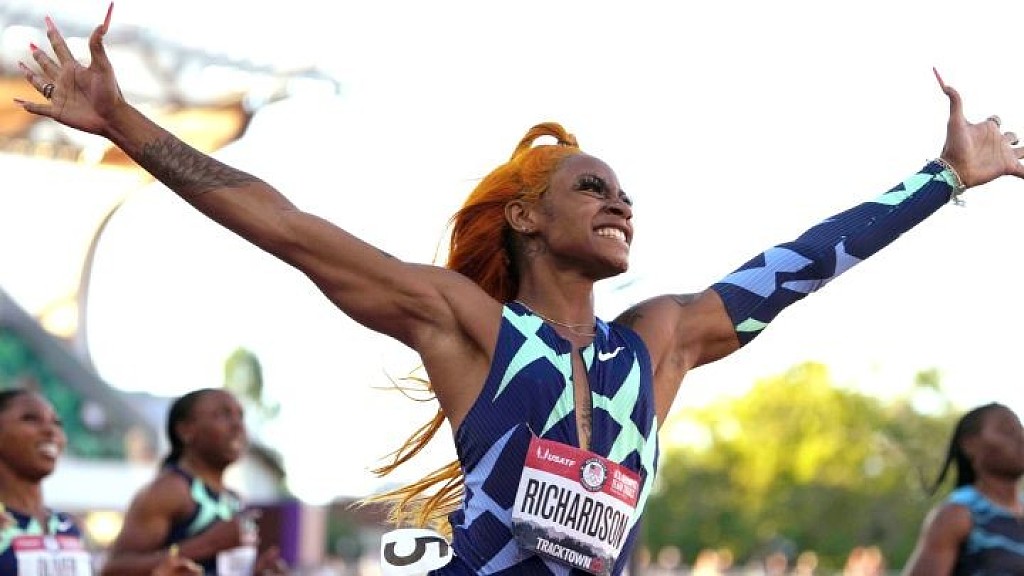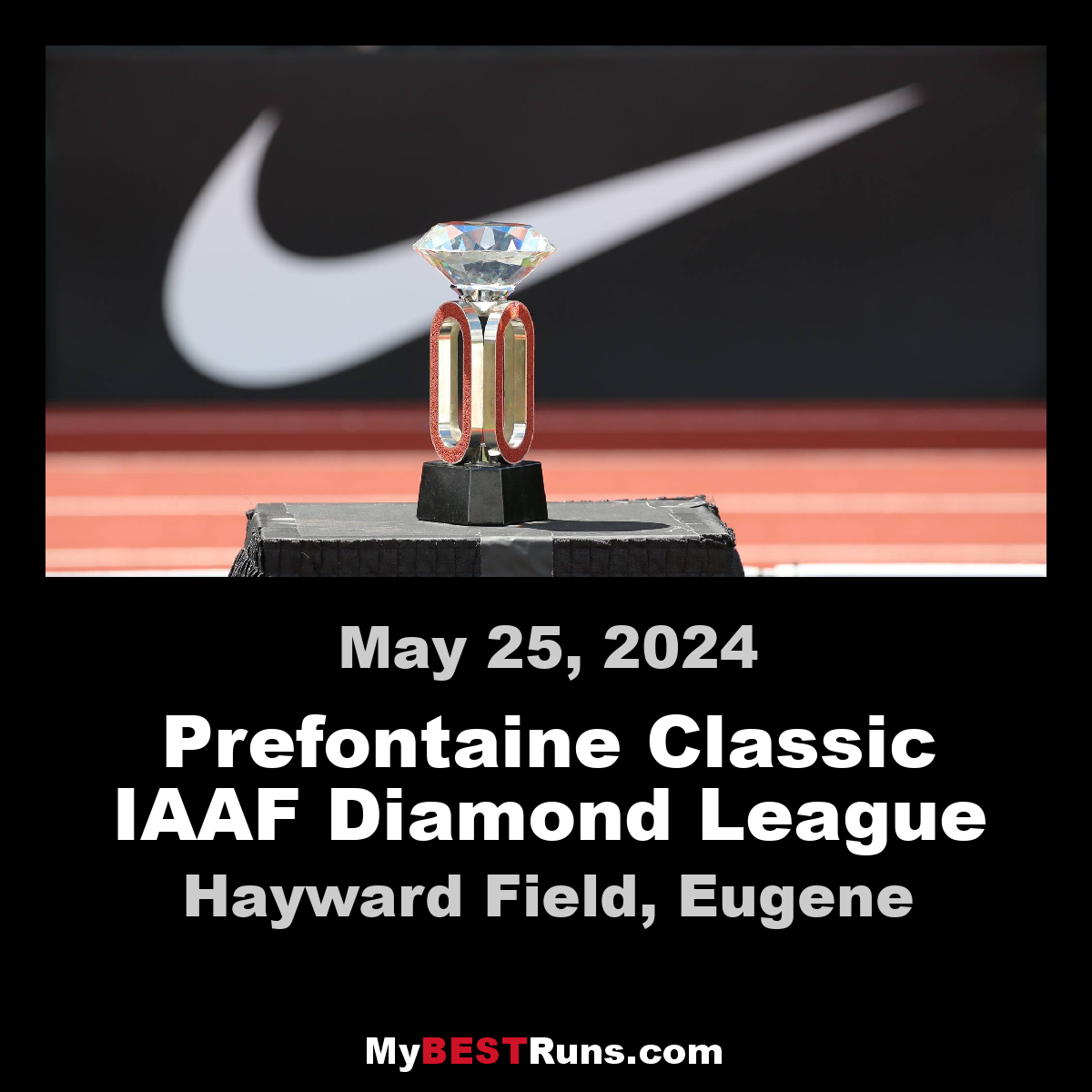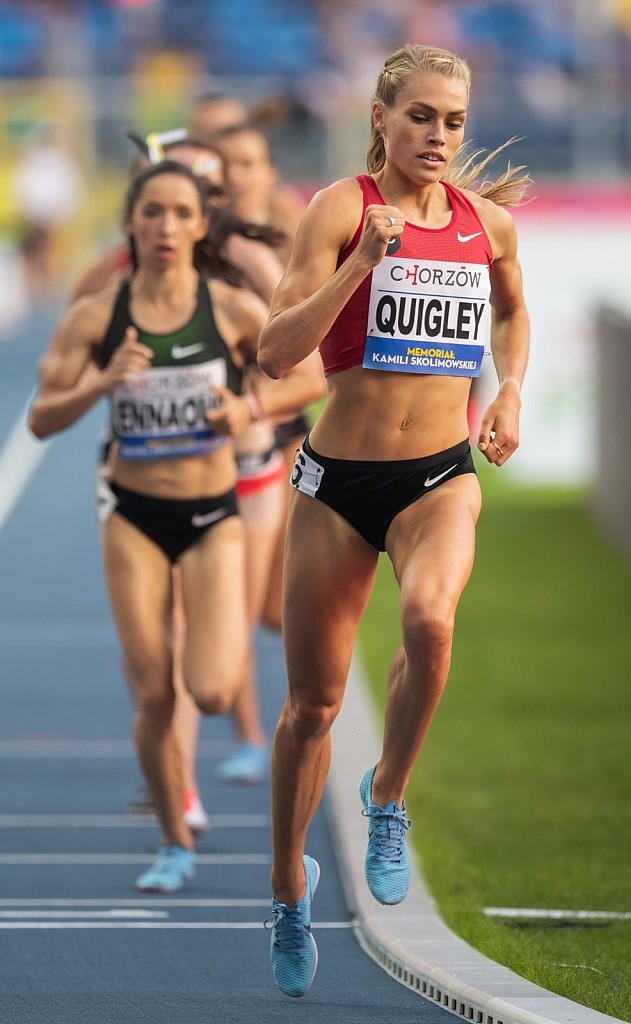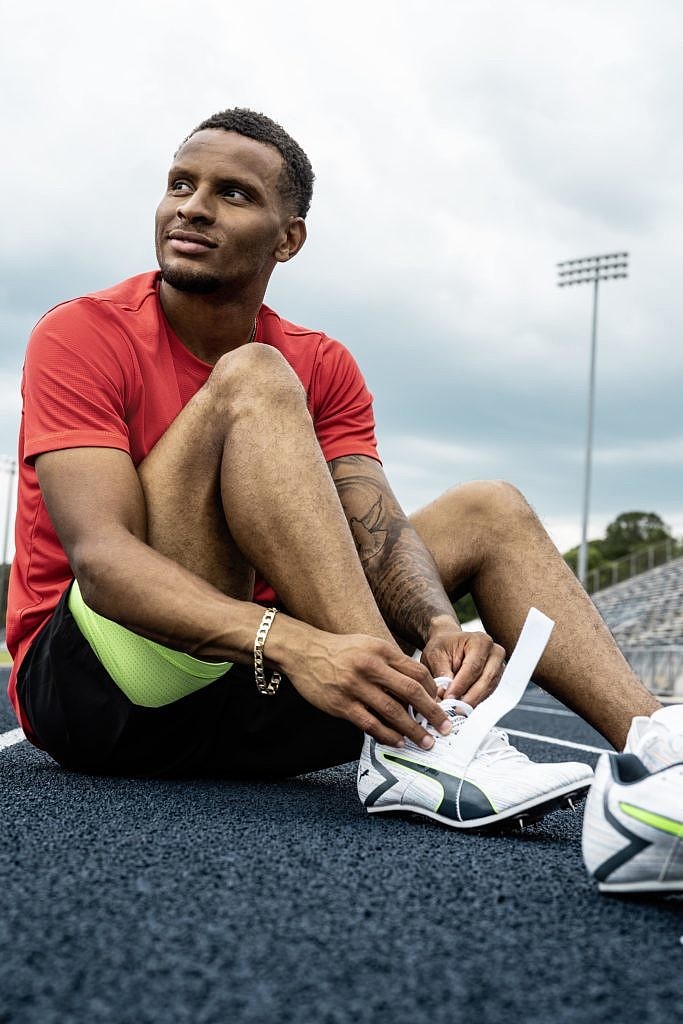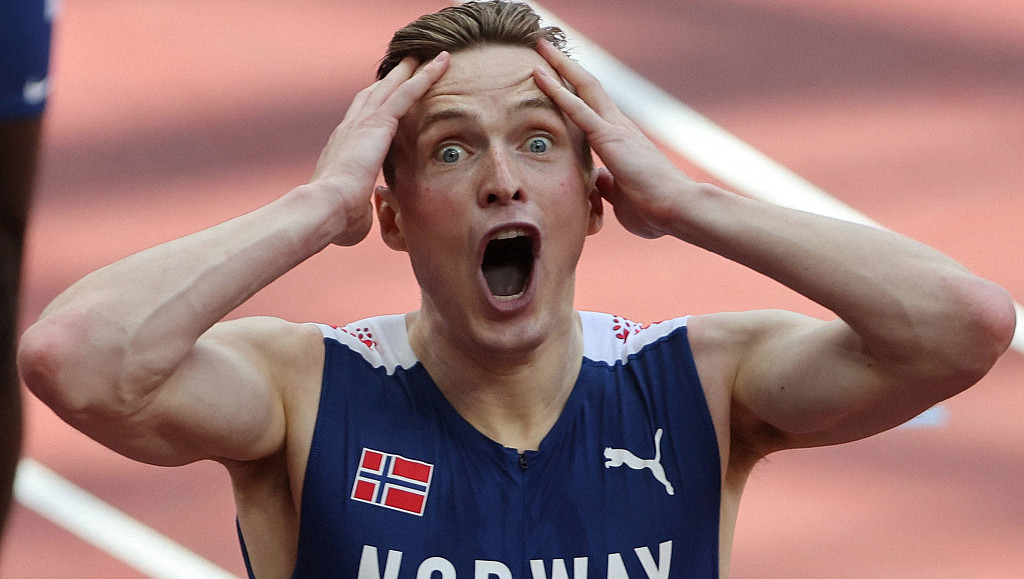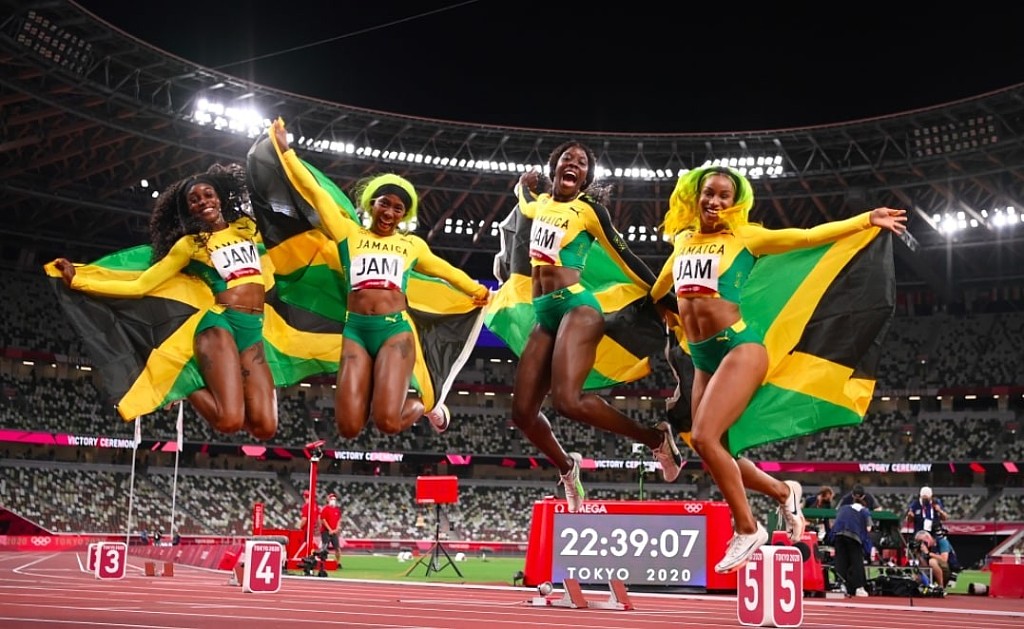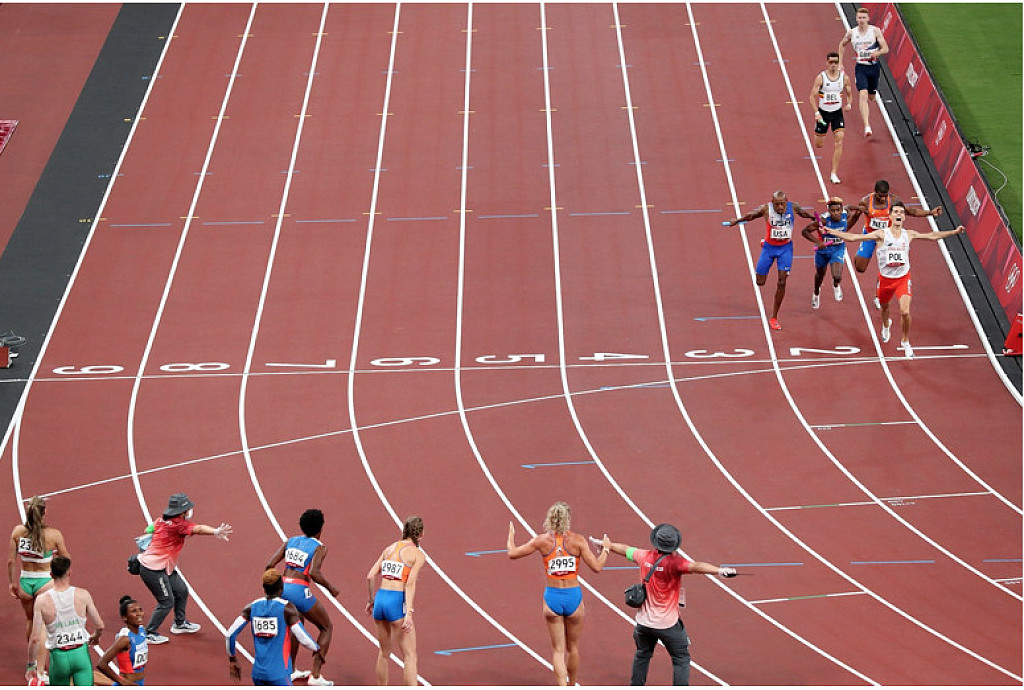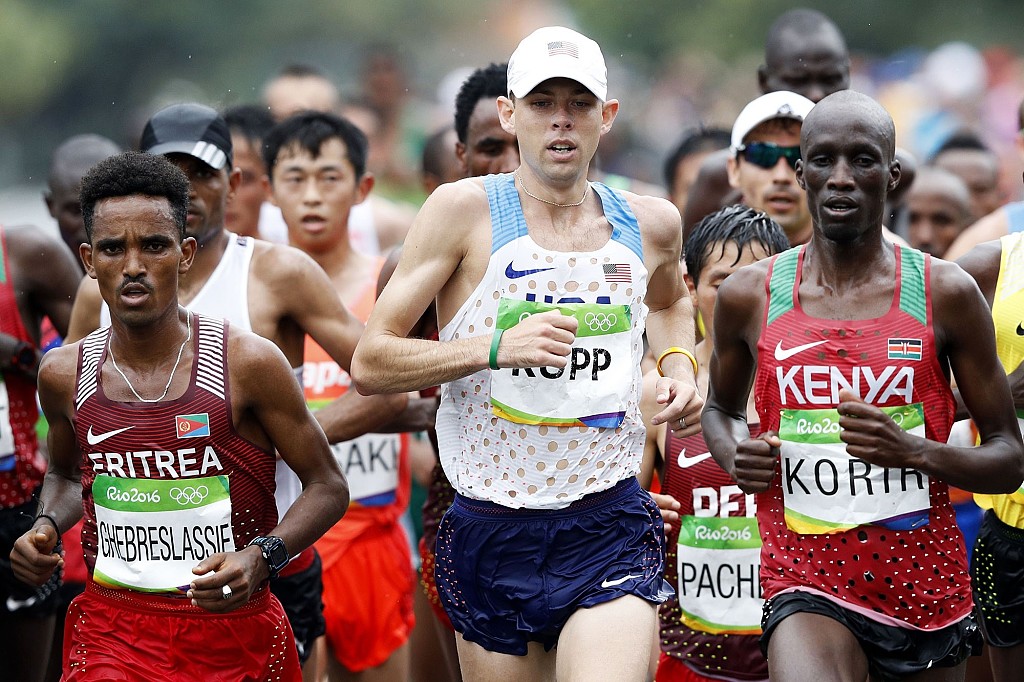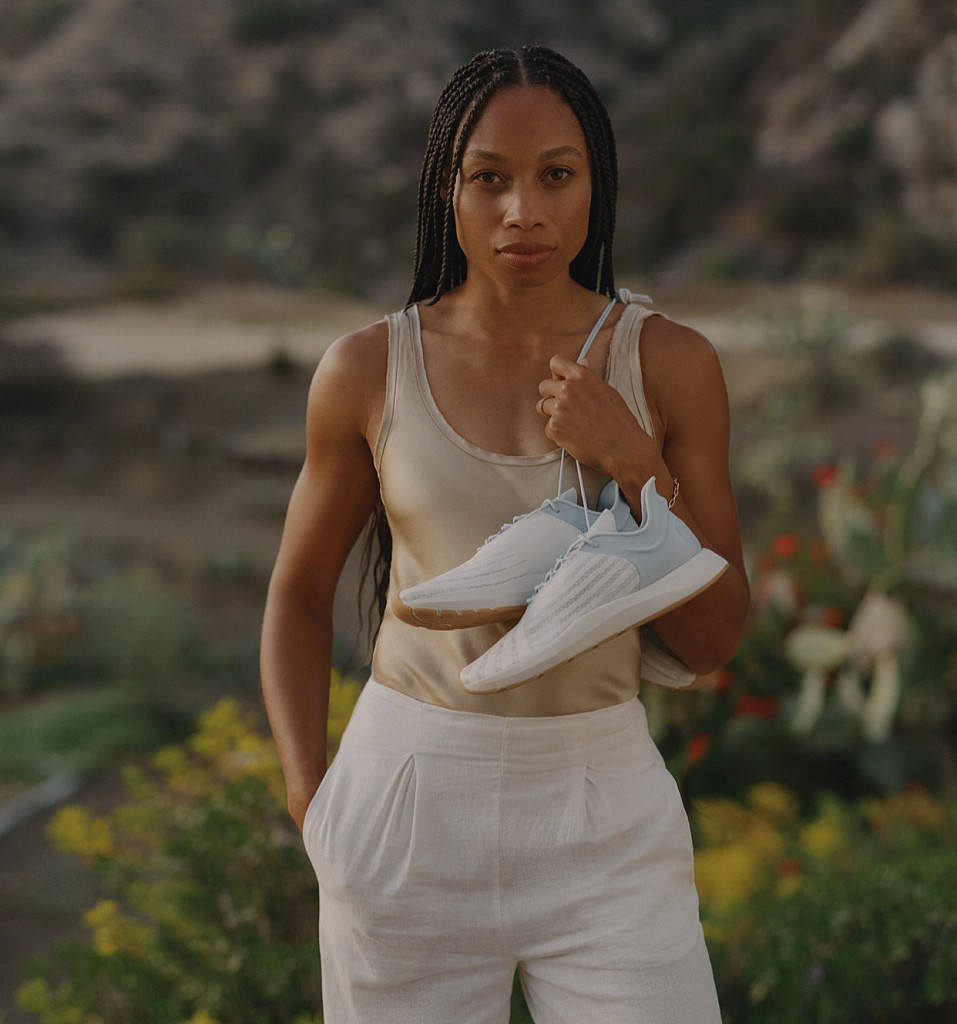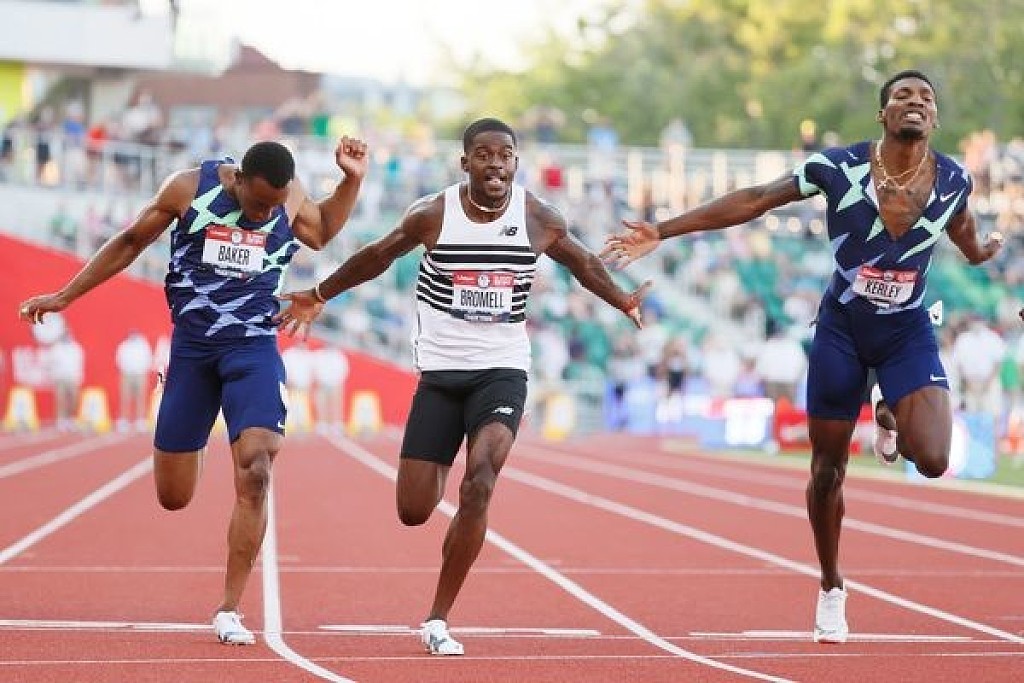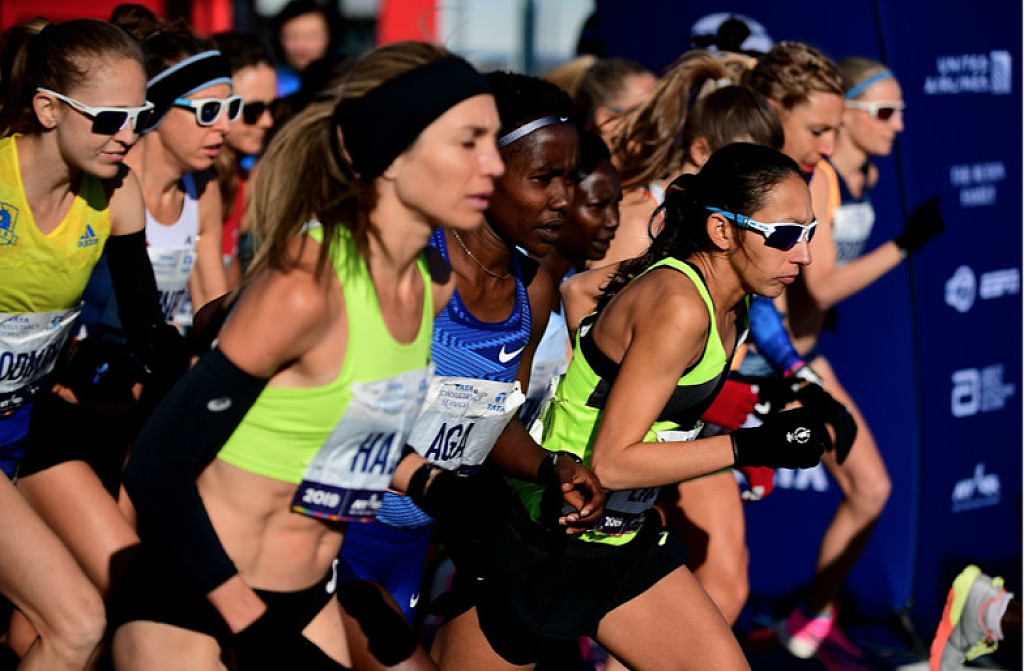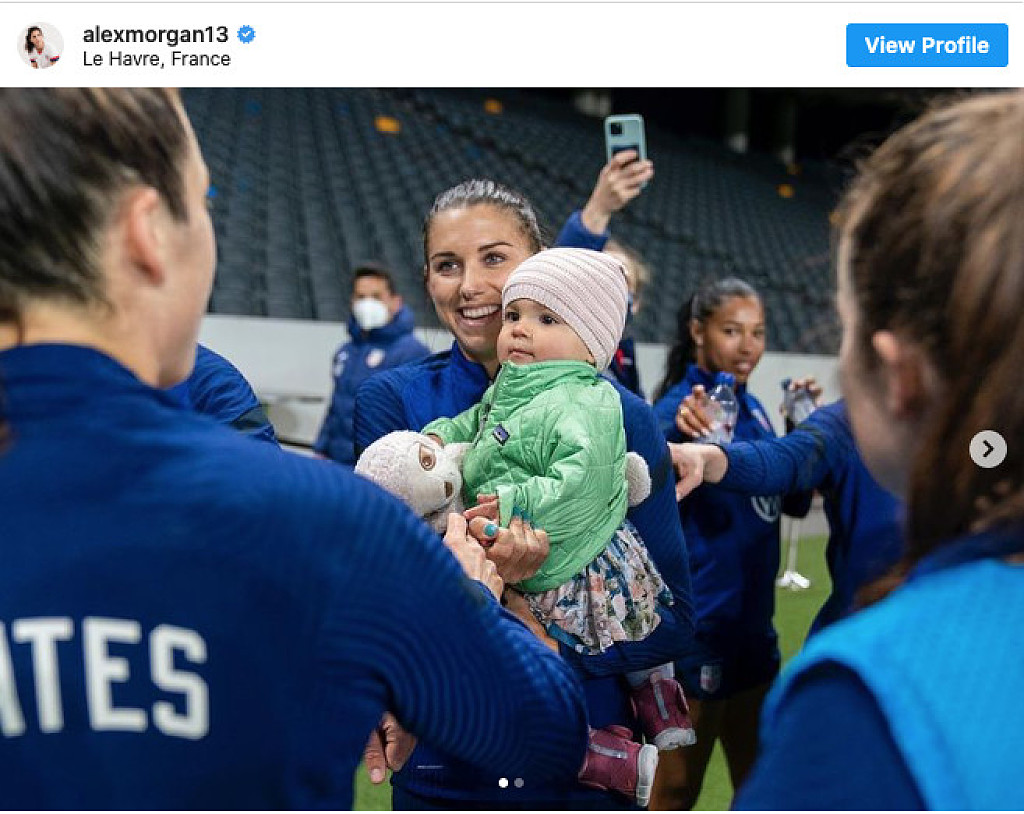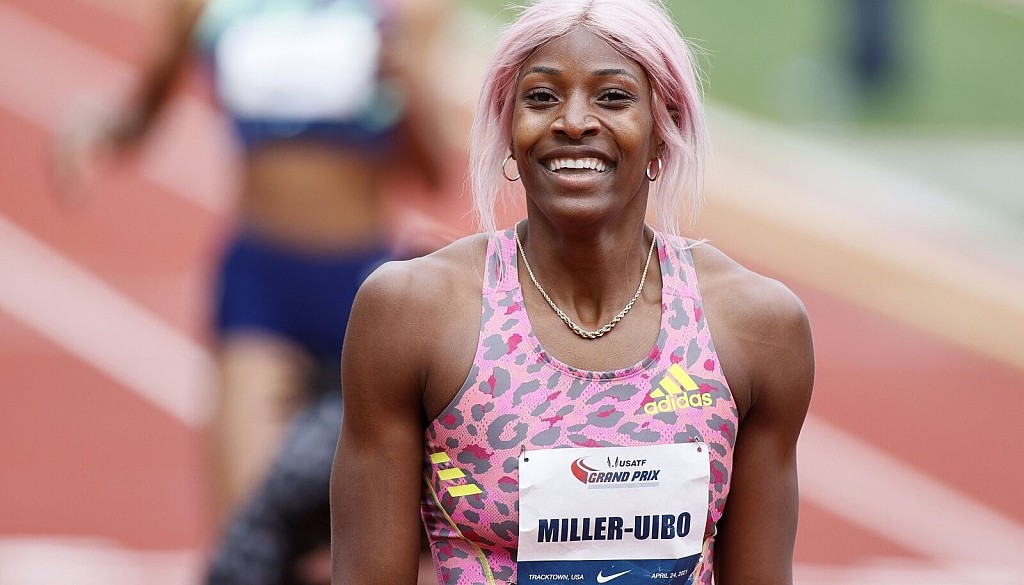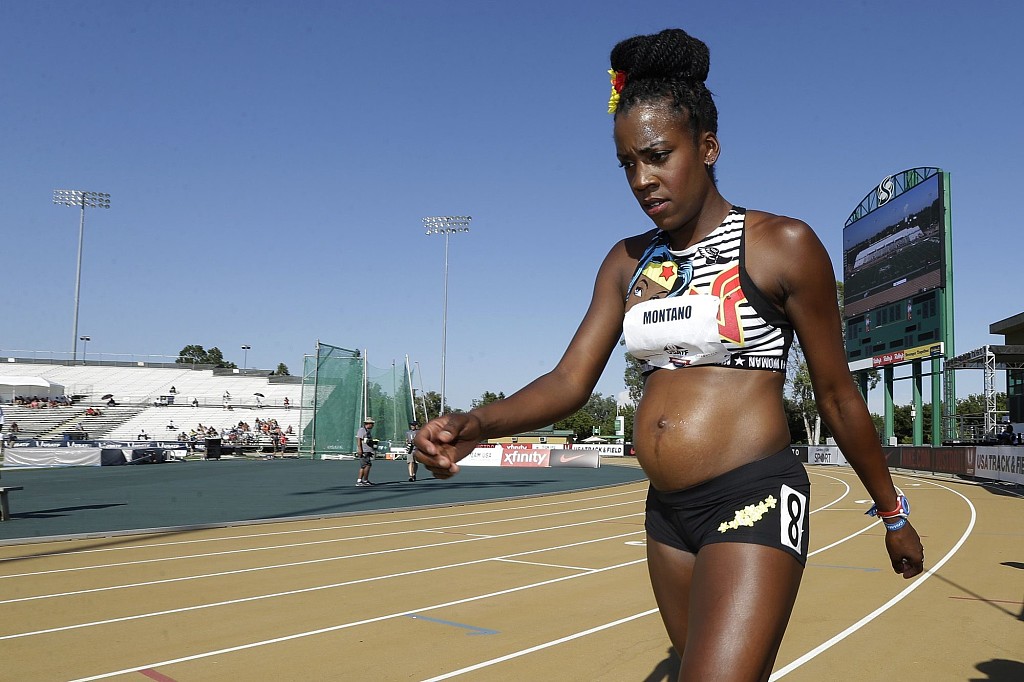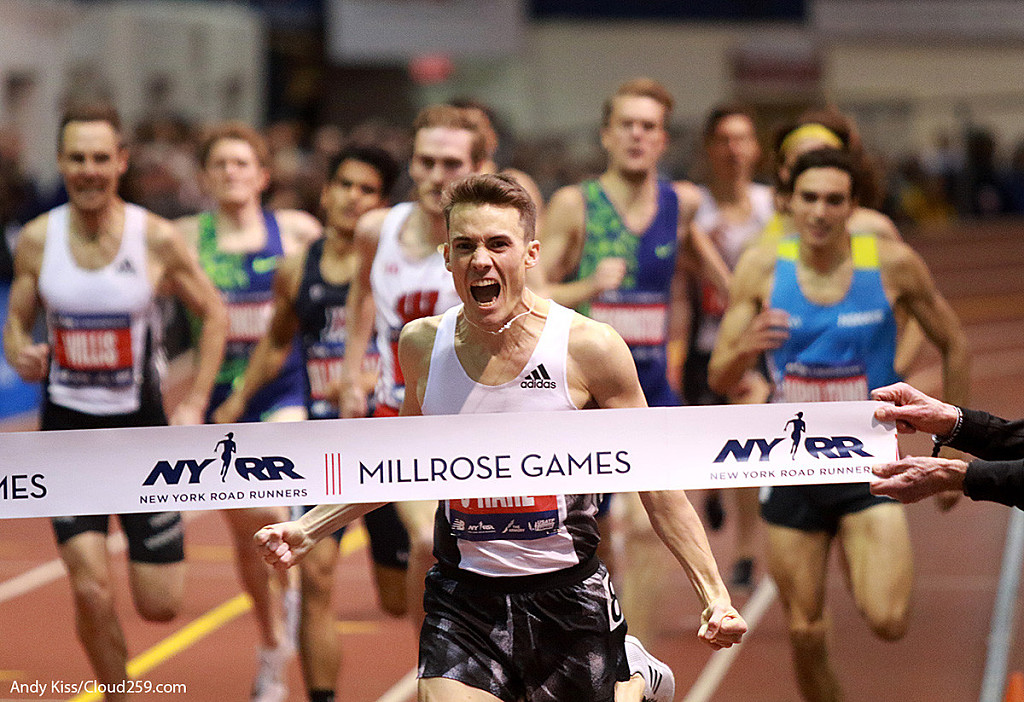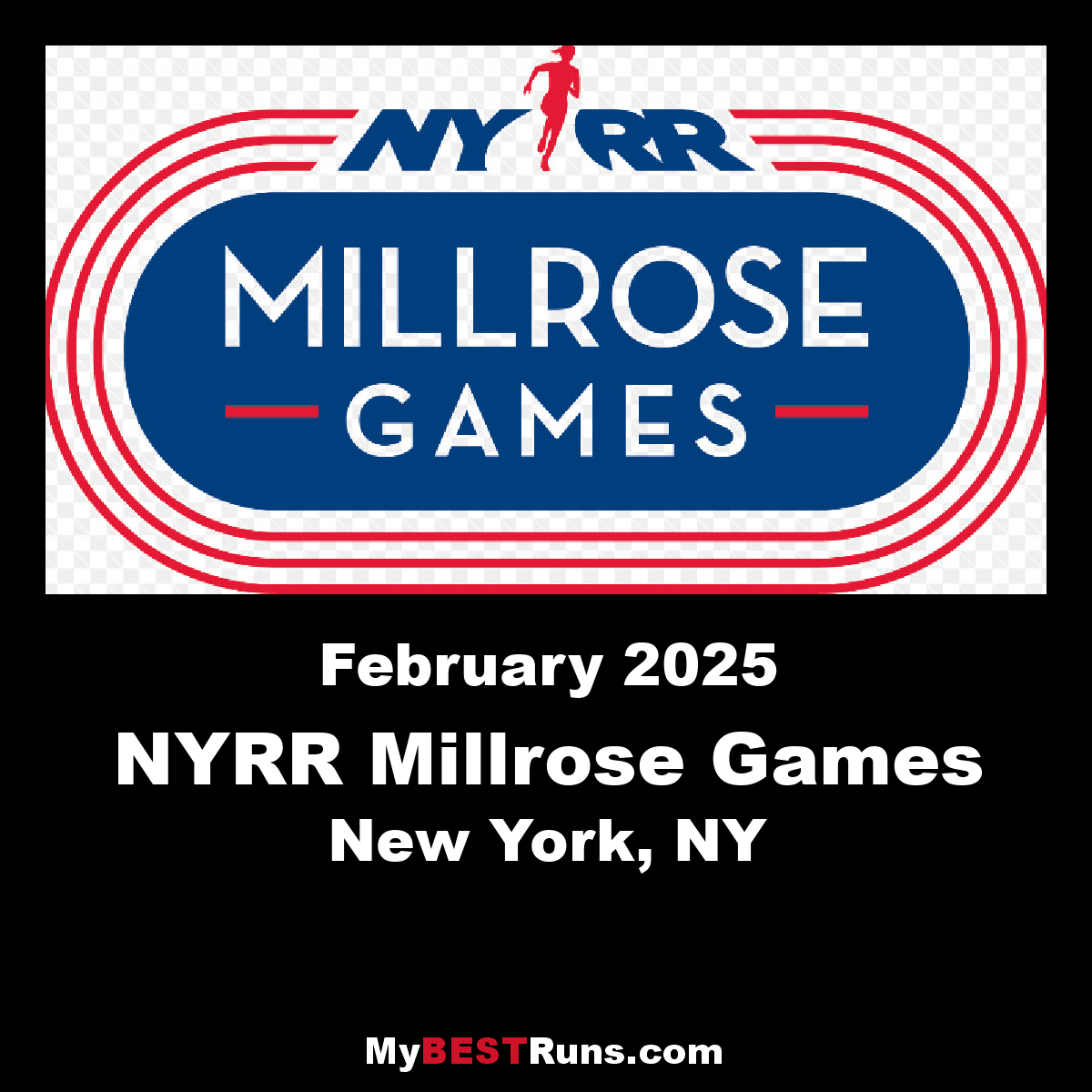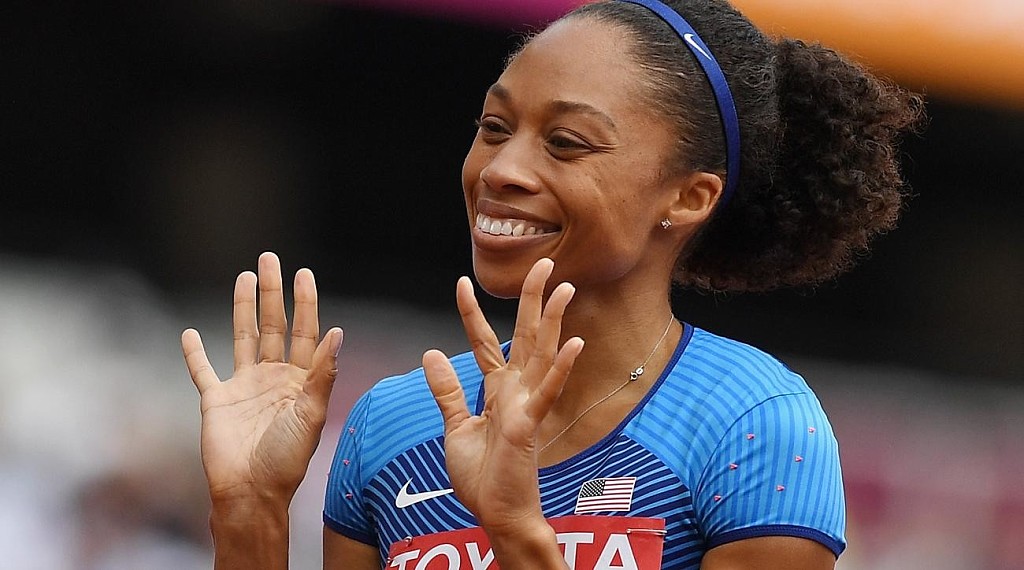Running News Daily
Running News Daily is edited by Bob Anderson. Send your news items to bob@mybestruns.com Advertising opportunities available. Train the Kenyan Way at KATA Kenya and Portugal owned and operated by Bob Anderson. Be sure to catch our movie A Long Run the movie KATA Running Camps and KATA Potato Farms - 31 now open in Kenya! https://kata.ke/
Index to Daily Posts · Sign Up For Updates · Run The World Feed
Articles tagged #Allyson Felix
Today's Running News
Who Had the Best Era in Track & Field? A Generational Showdown
Track and field has long been the stage for some of the most electrifying athletic performances in history. Each generation has produced legends who have redefined what is possible in sprinting, distance running, and field events. But which era stands above the rest?
From the Silent Generation pioneers to the Gen Z record-breakers, every period has contributed to the evolution of the sport. Let’s break down each era’s greatest stars and their lasting impact on track and field.
Gen Z (Born 1997 - 2012): The Future of Track & Field
The newest generation of elite athletes is already making waves on the world stage. With the benefit of cutting-edge training, nutrition, and recovery techniques, these young stars are smashing records at a rapid pace.
Notable Sprinters & Field Athletes:
• Sydney McLaughlin-Levrone (USA) – 400m hurdles world record holder and Olympic champion
• Mondo Duplantis (Sweden) – Pole vault world record holder
• Erriyon Knighton (USA) – One of the fastest teenagers ever in the 200m
Notable Distance Runners:
• Jakob Ingebrigtsen (Norway) – Olympic 1500m champion, European mile record holder
• Joshua Cheptegei (Uganda) – 5000m and 10,000m world record holder
• Jacob Kiplimo (Uganda) – Half marathon world record holder (57:31)
• Gudaf Tsegay (Ethiopia) – World champion in the 1500m, dominant in middle distances
Gen Z athletes are not only breaking records but also shaping the future of the sport through their influence on social media and global visibility. With their combination of speed, endurance, and access to modern sports science, they may soon surpass all who came before them.
Defining Traits: Explosive, record-breaking, tech-savvy
Millennials (Born 1981 - 1996): The Superstars of the Modern Era
No discussion of dominant track and field generations is complete without mentioning Usain Bolt. The Jamaican sprinting legend captured the world’s attention with his charisma and untouchable world records.
Notable Sprinters:
• Usain Bolt (Jamaica) – Fastest man in history (100m: 9.58, 200m: 19.19)
• Allyson Felix (USA) – Most decorated female Olympian in track history
• Shelly-Ann Fraser-Pryce (Jamaica) – One of the most dominant sprinters of all time
Notable Distance Runners:
• Eliud Kipchoge (Kenya) – The greatest marathoner of all time, first to break two hours in a marathon
• Mo Farah (UK) – Dominated the 5000m and 10,000m at two Olympic Games
• Genzebe Dibaba (Ethiopia) – 1500m world record holder
• Ruth Chepngetich (Kenya) – First woman to break the 2:10 barrier in the marathon, setting a world record of 2:09:56 at the 2024 Chicago Marathon
Millennials excelled across all track and field disciplines. They ushered in an era of professional distance running dominance, with African runners setting standards in middle and long distances. Meanwhile, Kipchoge’s sub-2-hour marathon attempt was a historic milestone in human endurance.
Defining Traits: Charismatic, dominant, endurance revolutionaries
Gen X (Born 1965 - 1980): The Tough and Versatile Competitors
Gen X athletes were the bridge between the amateur days of track and the fully professional era. They pushed the sport forward with fierce rivalries and new records, while also seeing the globalization of track and field.
Notable Sprinters:
• Maurice Greene (USA) – Former world record holder in the 100m (9.79)
• Marion Jones (USA) – One of the most dominant sprinters of the late ‘90s
Notable Distance Runners:
• Haile Gebrselassie (Ethiopia) – Olympic and world champion, former marathon world record holder
• Paul Tergat (Kenya) – Pioneered marathon running dominance for Kenya
• Tegla Loroupe (Kenya) – First African woman to hold the marathon world record
This era marked a golden age for distance running, with Gebrselassie and Tergat setting the stage for the marathon revolution that would come in the next generation. With increased sponsorships, the road racing circuit became more competitive, and Kenyan and Ethiopian dominance solidified.
Defining Traits: Tough, globalized, long-distance pioneers
Baby Boomers (Born 1946 - 1964): The Golden Age of Track & Field
The Baby Boomers took track and field into the modern Olympic era, producing some of the most iconic figures in the sport’s history.
Notable Sprinters:
• Carl Lewis (USA) – Nine-time Olympic gold medalist across sprints and long jump
• Florence Griffith-Joyner (USA) – 100m (10.49) and 200m (21.34) world record holder
Notable Distance Runners:
• Sebastian Coe (UK) – 800m and 1500m Olympic champion, middle-distance legend
• Steve Prefontaine (USA) – One of the most influential distance runners in history
• Miruts Yifter (Ethiopia) – 5000m and 10,000m Olympic champion
This era brought middle and long-distance running into the mainstream, with rivalries like Coe vs. Ovett and Prefontaine vs. the world captivating fans. The Baby Boomers were the first generation of professional-level training and saw athletes truly dedicated to their craft year-round.
Defining Traits: Bold, revolutionary, multi-talented
Silent Generation (Born 1928 - 1945): The Pioneers of Kenya’s Dominance
This generation laid the foundation for modern track and field, producing legends whose influence still resonates today.
Notable Distance Runners:
• Kip Keino (Kenya) – The pioneer of Kenya’s dominance in distance running, winning Olympic gold in the 1500m (1968) and 3000m steeplechase (1972)
• Emil Zátopek (Czechoslovakia) – Triple gold in 5000m, 10,000m, and marathon at the 1952 Helsinki Olympics
• Paavo Nurmi (Finland) – Nine-time Olympic gold medalist in long-distance events
Kip Keino’s triumph over Jim Ryun in the 1500m final at the 1968 Mexico City Olympics is considered one of the greatest upsets in Olympic history. Competing at high altitude, Keino used a fast early pace to break Ryun, ushering in an era of Kenyan middle-distance dominance that continues today.
Defining Traits: Groundbreaking, resilient, visionary
Which Generation Had the Greatest Impact?
Each generation of track and field athletes has contributed to the sport’s evolution in unique ways:
• Millennials brought global superstardom (Bolt, Felix, Fraser-Pryce, Kipchoge, Chepngetich)
• Gen X athletes were fierce competitors in a rapidly changing sport (Greene, Gebrselassie, Tergat)
• The Baby Boomers set records that still stand today (Carl Lewis, Flo Jo, Coe, Prefontaine)
• The Silent Generation laid the foundation for modern track and field (Owens, Zátopek, Kip Keino)
• Gen Z is already breaking records and shaping the future of the sport (McLaughlin-Levrone, Ingebrigtsen, Cheptegei)
While it’s hard to declare one era the best, one thing is certain: the sport of track and field continues to evolve, with each generation pushing the limits of human performance.
Which generation do you think is the greatest? Let us know in the comments!
by Boris Baron
Login to leave a comment
'Something has to change'-American sprint legend on protecting women athletes in Kenya
An American sprint legend has raised concerns over women athletes' safety in Kenya, advocating for cultural change and systemic reform.
American sprint icon Allyson Felix has expressed deep concern over the safety of women athletes, describing violence against female competitors as a "real problem" that demands urgent attention.
Felix, the most decorated track and field athlete in history with 20 World Championship medals and 11 Olympic medals, spoke passionately about the challenges facing women in sports, particularly in light of recent tragedies in Kenya.
“There has to be a change in the culture. Something is not right, and it does make me worry,” Felix said during an interview with BBC 100 Women.
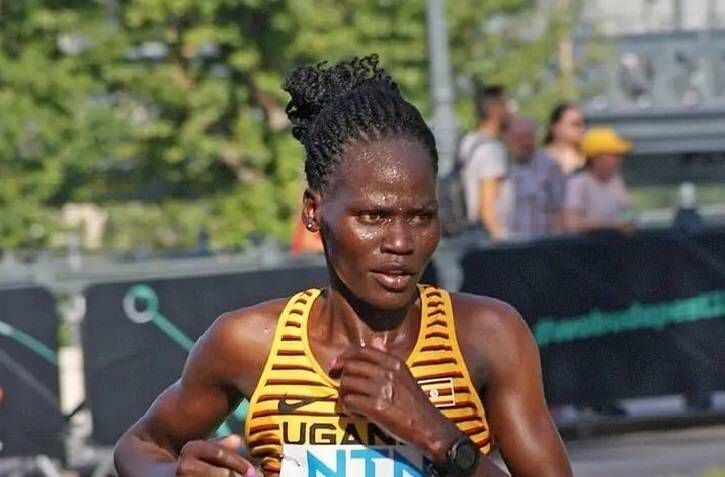
Her comments come few months of the devastating death of fellow Olympic athlete Rebecca Cheptegei, who was set on fire by her boyfriend earlier this year.
Cheptegei’s death marked the third killing of a female athlete in Kenya in the past three years.
Felix, recently elected to the International Olympic Committee (IOC) Athletes' Commission, pledged to prioritize addressing violence against women athletes.
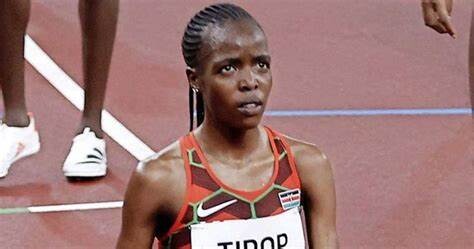
“The consequences have to be severe, but I think there has to be more than that,” she emphasized.
“I think we have to rally around the sports community and come together.”
The alarming trend of violence against female athletes in Kenya highlights the urgent need for change, Felix noted, adding her voice to growing calls for stricter penalties and cultural shifts to ensure women’s safety.
Her advocacy for women’s rights, both on and off the track, has become a defining feature of her legacy since retiring from competitive athletics in 2022.
Felix’s commitment to advocating for women goes beyond addressing violence.
She has been a trailblazer in fighting for maternal health rights and equal treatment for female athletes.
In 2018, after surviving a harrowing experience with severe pre-eclampsia during her pregnancy, Felix exposed systemic inequities when her former sponsor, Nike, threatened to slash her pay due to motherhood.
Her powerful op-ed in The New York Times led to groundbreaking changes in maternity protections for sponsored athletes, with Nike and other athletic apparel companies introducing policies to safeguard pay and bonuses for 18 months around pregnancy.
“I was terrified what the consequences would be,” Felix admitted.
“It just wasn’t in my nature. And so it was really difficult to be able to just be vulnerable.”
In Kenya, where cultural barriers and economic challenges compound the issues facing women athletes, Felix’s story resonates deeply.
Many athletes have struggled to find support systems to navigate the demands of sports and family life. Felix’s advocacy offers a blueprint for addressing these issues.
Through her leadership role with the IOC Athletes' Commission, Felix aims to amplify the voices of athletes and promote systemic reforms globally.
She has also launched Always Alpha, a management firm dedicated to women’s sports, to ensure female athletes receive tailored representation.
Felix’s advocacy extends to maternal health, particularly for Black women in the United States, where they are three times more likely to die from pregnancy-related causes than white women, according to the Centers for Disease Control and Prevention (CDC).
Her efforts recently secured a $20 million grant from Melinda Gates to improve maternal health outcomes, and she is exploring ways to extend her work internationally, including in Africa.
“I want [my children] to always know that you should have an impact, that you should help others, that you should stand up for what you believe in,” she concluded.
by Festus Chuma
Login to leave a comment
What next for Kenya after Paris 2024 Olympic Games
The curtains for the 2024 Paris Olympics fell on Sunday night with Kenya ranking 17th in the world after winning 11 medals.
Despite Kenya topping the African continent with 4 gold, 2 silver and 5 bronze medals, the results left a lot to be desired.
From 83 athletes competing in seven disciplines, a significant impact was expected from the Kenyan athletes and the world.
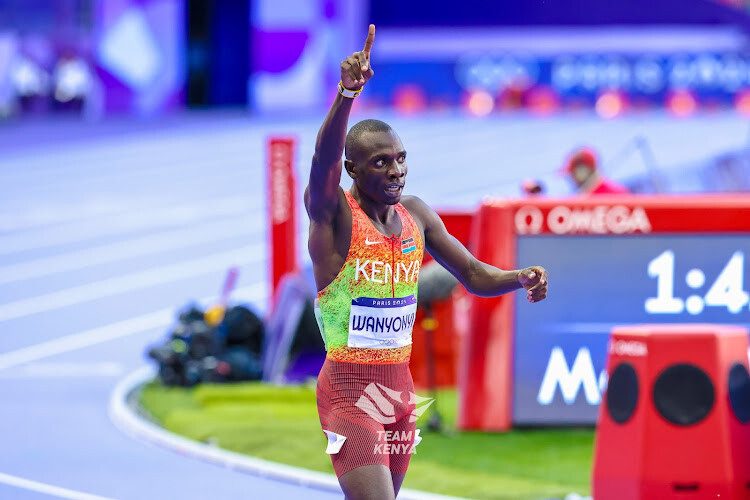
The show started with Judoka Zeddy Cherop falling 10-0 to Portugal’s Patricia Sampao in a record 22 seconds while Fencing African champion Alexandra Ndolo crushed out 13-12 to Ukranian Olena Kryvytska in her debut.
Maria Brunlehner and Ridhwan Mohamed finished 3rd and 4th in the women’s 50m freestyle and Men’s 400m freestyle heats respectively to crush out of contention for a swimming medal.
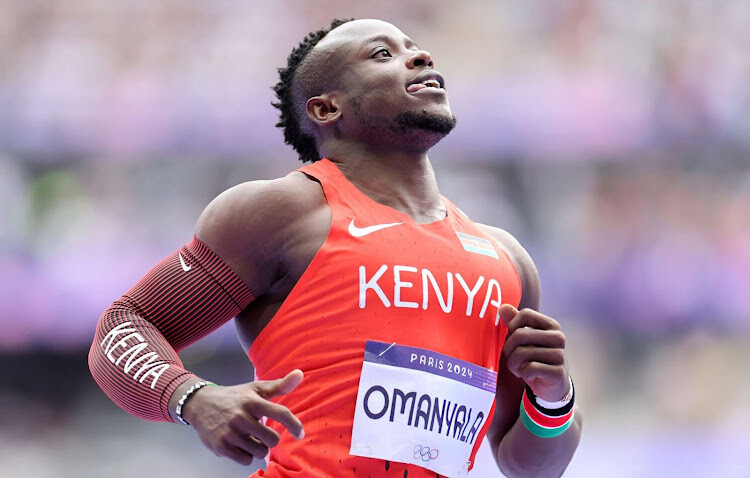
The sevens rugby team also crushed out in the group stage, after going down to Australia, Argentina and Samoa.
The women’s volleyball team booked their next flight after failing to win a single set following three identical 3-0 losses in a tough group B pool comprising Brazil, Poland and Japan.
Paris, the City of Love, had very little affection for Kenya as former world champion Julius Yego, finished a distant 5th in the javelin final with a 87.72m throw, to also bite the dust.
Africa's fastest man, Ferdinand Omanyala's 100m Olympic medal dream was shattered in the semi-finals after clocking 10.08 seconds to finish 8th.
However, Kenya redeemed herself with debutant Beatrice Chebet grabbing double gold in the 5000m and 10000m women’s races.
The best performer was followed closely by Faith Kipyegon who defended her 1500m gold and added the 5000m women’s silver.
Another debutant, Emmanuel Wanyonyi, grabbed the 800m gold, while Ronald Kwemoi struck the men’s 5000m silver.
Mary Moraa, the dancing queen, grabbed the 800m bronze, same as Faith Cherotich (3000m steeplechase) and Abraham Kibiwot (3000m steeplechase).
Hellen Obiri and Benson Kipruto rounded up the bronze tally in the men's and women's marathons.
Obiri failed in her quest for an Olympic medal having won silver in the women's 5000m in Tokyo, 2020 and Rio 2016 games.
History Making
Kenya will however keep pride in making history after Faith Kipyegon became the first woman to complete an Olympic hat trick after breaking her 1500m record in 3:51.29, before a fully packed iconic Stade de France.
Debutant Beatrice Chebet was the best performer entering the history books by winning a double gold in the women's 5000m and 10000m.
The feat makes Chebet the first Kenyan woman to win Olympic 10000m gold for Kenya since the race was introduced in the 1988 Olympics.
She is the third woman after Tirunesh Dibaba and Sifan Hassan to win the 5000m and 10000m double at the Olympic Games.
"I'm dedicating this medal to all Kenyans. I just want to hear my country is proud. This was for you, you were in my mind and heart in every lap; I might have made history but I will sleep better knowing Wananchi wataenjoy the weekend," she said.
Kenya’s legend Eliud Kipchoge failed to complete an Olympic marathon treble after dropping out of the race at the 20km mark.
Kipchoge later confirmed he won’t be running in the Los Angeles 2028 summer games.
“I felt a sharp pain in the stomach and I couldn’t continue. I'm disappointed that for the first time in my career, I failed to finish a race .” Kipchoge said.
Lady luck also smiled on Kenya after Kipyegon's 5000m silver medal was reinstated following an appeal, after a push and shove with Ethiopian nemesis, Gudaf Tsegay, had her initially disqualified.
In the 800m final, Canada appealed against Kenyan winner Emmanuel Wanyonyi's personal best of 1:41.91 in the 800m, claiming he obstructed silver medallist Marco Arop. Kenya won the appeal.
Tokyo 2020
Despite the dismal show in Paris, Kenya had bettered the 2020 Tokyo tally of 10 medals and a 19th spot finish.
The post-Covid games had challenges but Kenya grabbed four gold, four silvers and two bronze medals.
Emmanuel Korir (800m), Faith Kipyegon (1500m), Peres Jepchirhir (marathon), and Eliud Kipchoge (marathon) were the gold medalists while Hellen Obiri (5000m), Fergussin Rotich (800m), Brigid Kosgei (marathon) and Timothy Cheruiyot (1500m) won silver.
Benjamin Kigen and Hyvin Kiyeng won the men's and women's 3000m steeplechase races respectively.
Rio 2016
In the 2016 Rio De Janeiro games, Kenya managed six gold, six silver and one bronze medal for a tally of 13 medals.
Rio 2016 Olympics gold medalists were Jemima Sumgong in women's marathon, David Rudisha in 800m, Faith Kipyegon in 1500m, Conseslus Kipruto in 3000m steeplechase, Vivian Ceruiyot in 5000m and Eliud Kipchoge marathon.
Meanwhile, Vivian Cheruiyot (10000m); Paul Tanui (10000m); Hyvin Kiyeng (3000m steeplechase); Boniface Mucheru (400m hurdles); and Hellen Obiri (5000m) all grabbed silver, while Julius Yego managed a rare javelin silver. Margaret Wambui won bronze in women's 800m.
London 2012
The London 2012 Summer Games saw Kenya manage 2 gold, 4 silver and 7 bronze for a total of 13 medals.
Despite a cold and warm performance in the Queens land, Kenya won two gold medals to finish a distant 29th in the world rankings.
Legendary track masters Ezekiel Kemboi and David Rudisha grabbed gold in the men's 3000m and 800m races respectively.
Sally Kipyegon brought home the women's 10000m silver, while Priscah Jeptoo won the women's marathon silver medal as Vivian Cheruiyot grabbed the women's 5000m race.
Abel Kirui rounded up the silver medals haul after clinching the men’s marathon race.
Vivian Cheruiyot won bronze in the 10000m women's race, while Asbel Kiprop and Milcah Chemos clinched bronze in the men's and women’s 3000m steeplechase.
Timothy Kiptum and Pamela Jelimo clinched the men's and women's 800m race respectively while Thomas Longosiwa and Wilson Kipsang rounded off Kenya's bronze medals haul, winning the 5000m men's and women's marathon races.
What next?
As the nation awaits the Paris 2024 Games report on what worked and what didn't work, a lot will be looked into including preparations, sports science, lack of stadia and lack of funds among others.
However, one constant reminder is that Kenya must smell the coffee, lest our legacy is discarded by the improving rival nations every day.
The next Omanyala, Yego, Obiri and Kipchoge should be nurtured immediately if we are to remain world beaters in the summer games.
Beating the 2008 Beijing Summer Games remains the target, where Kenya sent a total of 46 athletes: 28 men and 18 women who brought home the best tally of six gold, four silver and six bronze medals.
The journey to the Los Angeles 2028 games starts with a new sheriff in town, CS Kipchumba Murkomen, at the helm of the Sports ministry.
by Eric Munene
Login to leave a comment
Paris 2024 Olympic Games
For this historic event, the City of Light is thinking big! Visitors will be able to watch events at top sporting venues in Paris and the Paris region, as well as at emblematic monuments in the capital visited by several millions of tourists each year. The promise of exceptional moments to experience in an exceptional setting! A great way to...
more...Athletes with the most track gold medals in the history of Olympics
Here are the athletes with the most gold medals at the Olympic athletic games
The track and field events continue to capture the imagination of sports fans around the world, at the Olympics in Paris.
While the current athletes compete for glory, it's worth reflecting on the legends who have set the bar exceptionally high in Olympic athletics.
Here’s a look at the athletes with the most gold medals in Olympic track and field history, showcasing their unparalleled achievements and enduring legacies.
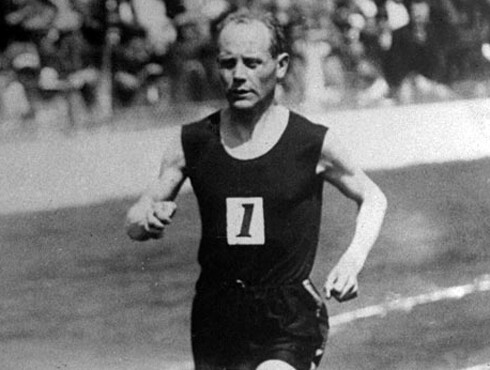
1. Paavo Nurmi (Finland)- 9 Gold medals
Paavo Nurmi, known as "The Phantom Finn," is celebrated for his extraordinary achievements in middle and long-distance running during the 1920s.
Competing in the 1920, 1924, and 1928 Olympics, Nurmi amassed an impressive 12 Olympic medals, including a record nine golds. His incredible versatility was highlighted by his ability to dominate distances ranging from the 1500m to the 20km.
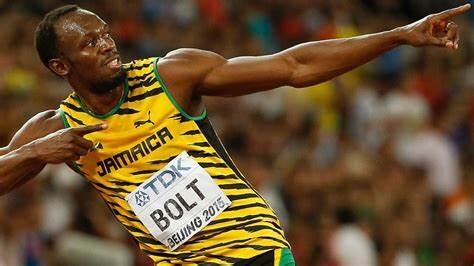
At the 1924 Paris Olympics, Nurmi won a record five gold medals, a feat that remains unmatched to this day.
His career is also marked by his remarkable achievement of setting 22 official world records across various distances.
2. Carl Lewis (U
SA)- 9 Gold medals
American sprinter Carl Lewis is another iconic figure in Olympic athletics, renowned for his dominance in both sprint events and the long jump.
Lewis’s Olympic career spanned from 1984 to 1996, during which he earned a total of 10 medals, including nine golds.
In his debut at the 1984 Los Angeles Olympics, Lewis matched the achievements of Jesse Owens by winning gold in the 100m, 200m, 4x100m relay, and long jump.
His subsequent victories across the 1988, 1992, and 1996 Games solidified his reputation as one of the greatest track and field athletes of all time.
3. Allyson Felix(USA) - 7 Gold medals
Allyson Felix stands as the most decorated female athlete in Olympic track and field history.
Her career, spanning five consecutive Olympics from 2004 to 2020, has seen her win a total of 11 medals.
Felix’s seven gold medals highlight her versatility and dominance in both the individual and relay events.
Felix’s remarkable achievements include gold medals in the 200m and 4x400m relays at the 2012 London Olympics, as well as two more golds in Rio 2016.
Her career continued to shine with additional medals in Tokyo 2020, proving her enduring excellence on the track.
4. Usain Bolt (Jamaica)- 8 Gold medals
Jamaican sprinter Usain Bolt is often hailed as the fastest man in history, and his Olympic success only cements this status.
Bolt’s career is highlighted by his three consecutive Olympic gold medals in the 100m, 200m, and 4x100m relay events at the 2008 Beijing, 2012 London, and 2016 Rio Games.
Bolt’s unprecedented triple-double achievements and world records in these events have set a benchmark in the sport.
His flair, speed, and charismatic performances have made him a global icon in athletics.
5. Shelly-Ann Fraser-Pryce (Jamaica)- 3 Gold medals
Jamaican sprinter Shelly-Ann Fraser-Pryce is another prominent name in Olympic athletics.
Known for her explosive starts and exceptional speed, Fraser-Pryce has won three gold medals in the 100m across the 2008 Beijing, 2012 London, and 2024 Paris Olympics.
Her ability to consistently perform at the highest level across four Olympics showcases her remarkable career.
These legendary athletes have not only achieved remarkable success but have also set records that continue to inspire future generations of track and field competitors.
From Paavo Nurmi’s unmatched versatility to Usain Bolt’s record-breaking sprints, their contributions to the sport have shaped the history of the Olympics and continue to captivate the world.
by Eric Munene
Login to leave a comment
Paris 2024 Olympic Games
For this historic event, the City of Light is thinking big! Visitors will be able to watch events at top sporting venues in Paris and the Paris region, as well as at emblematic monuments in the capital visited by several millions of tourists each year. The promise of exceptional moments to experience in an exceptional setting! A great way to...
more...This 31-Year-Old Runner Is a Mom and an Olympian
Buoyed by her faith, motherhood, and family, Marisa Howard never relinquished her dream of becoming an Olympian
As a young girl, Marisa Howard dreamed about becoming an Olympian one day. But her focus was on another Olympic sport, gymnastics. She had no idea what the 3,000-meter steeplechase even was.

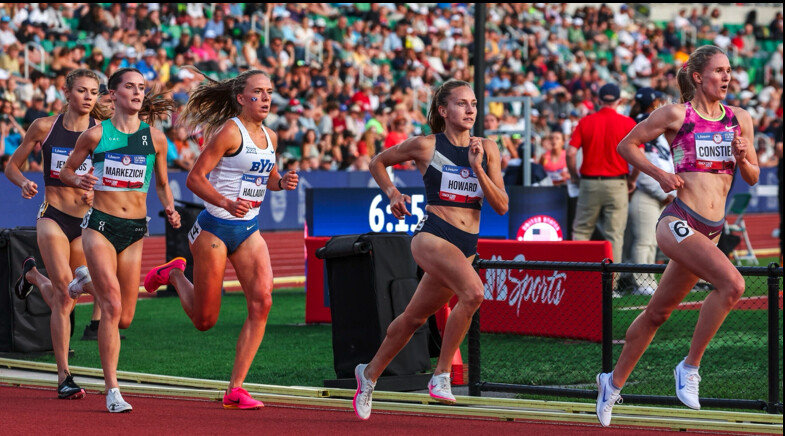
She also had no idea she’d be a mom when the dream actually came true.
Over the last two decades, Marisa, 31, has gone through numerous highs and lows, near-misses, injuries, a lack of sponsor support, and joyful life changes—most notably giving birth to son, Kai, in 2022. But the steeplechaser from Boise, Idaho, never let go of the dream. Relying on her faith, a strong family support system, and the frugal but full life she shares with her husband, Jeff, the dream came true on June 27 with a third-place finish in the steeplechase at the U.S. Olympic Trials in Eugene, Oregon.
After chipping away at her craft for three Olympic cycles, Marisa ran the race of her life—finishing with a 15-second personal best of 9 minutes and 7.14 seconds—to earn a spot on Team USA.
Her dream of running for Team USA in the Olympics officially materialized on August 4 when she lined up to race in the prelims of the 3,000-meter steeplechase in Paris. She ran with the lead pack in her heat as long as she could, but with two laps to go she slid to seventh and finished in that position in 9:24.78, missing the chance to advance to the August 6 final by two places and about seven seconds.
“I think it just becomes a lot more real when you see people that have been kind of knocking on the door for years and finally break through. It’s like, ‘Wow, we’re human and we can do it.’ Dreams do come true,” Marisa said. “I was six or seven or eight years old when this Olympic dream was born, and I plan on competing until he’s that age, hopefully, to show him what it’s like to do hard things and chase your dreams. I think it’ll be cool in 10 years when I show Kai these videos and be able to tell him, “Look at what Mommy did when you were two.”
In between making the team in late June and arriving in Paris in late July, Marisa’s life returned to normal—as if being a mom with a 2-year-old is ever normal, or at least consistent, on a day-to-day basis. That month included rough bouts of stomach flu for her and her son, the continued day-to-day management of Kai with Jeff, juggling workouts with childcare help from family and friends, reestablishing normal sleep patterns for everyone, and of course, finalizing travel plans to get the family to Paris.
It all came with a humbling reminder of the perspective that has been the bedrock of Marisa’s postpartum revival as an athlete.
“The day after I qualified, we were driving back home to Idaho and we were all tired. Kai was exhausted and screaming in the car, and I told my husband, ‘He doesn’t care that I’m an Olympian, he just wants food and sleep and, really, I’m just mom,’” she said. “It’s humbling—there’s nothing more humbling than taking care of your sick baby—and I think as a parent, we’re humbled every single day, and we come up short sometimes despite doing the best we can, but I’m thankful that there’s grace and forgiveness. I think it makes those high moments so much sweeter.”
Marisa is part of a new wave of elite runners that aren’t putting their family plans on hold due to their career, and one of several moms who competed at the U.S. Olympic Trials. Stephanie Bruce raced the 10,000 meters just nine months postpartum after giving birth to her daughter, Sophia, in September 2023, while Kate Grace ran strong preliminary and semifinal 800-meter races to advance to the final of that event just 15 months after giving birth to son, River, in March 2023.
Elle St. Pierre gave birth to her son, Ivan, at about the same time, and returned to racing six months postpartum, finishing seventh in a speedy 4:24 at the Fifth Avenue Mile in New York City. That was just the beginning for St. Pierre, who broke the American indoor record in the mile (4:16.41) in January then won the gold medal in the 3,000 meters at the indoor world championships in Glasgow in March. At the Olympic Trials, Pierre won the 5,000 meters and placed third in the 1500, qualifying for Team USA in both events, even though she declined the Olympic entry for the 5,000.
After Howard gave birth to Kai in late May 2022, she began doing pelvic floor therapy along with general strength training and some easy jogging. By the time she started running in earnest that fall, she was surprised at how quickly her aerobic fitness came back to her.
“What’s really surprised me is that I’m able to run paces that I never hit before pregnancy with the same amount or less effort,” she says. “My aerobic engine has just gotten so strong. You do see women come back stronger, but it’s a wide range of how long it takes them to come back. ”
When she returned to the track, she was aiming for a top-three finish at the 2023 U.S. championships to qualify for the world championships in Budapest. She made it to the final and was in third place with two laps to go, but just didn’t have the closing speed. However, she did get the Olympic Trials standard by clocking a near-PR of 9:22.73, demonstrating she was just as fast as her pre-pregnancy self despite limited training and two years away from racing.
By late 2023 and early 2024, Pat McCurry, Marisa’s coach since college, was able to add more volume and intensity to her training, setting up what he thought would be her best season yet. And while Marisa admittedly didn’t race as well as hoped in her races before the Olympic Trials, McCurry knew she was capable of great things.
“She was on a different level once we got back to that base fitness post-pregnancy, and I think that’s what’s paid off in massive fitness dividends,” said McCurry, who has coached Marisa on Idaho Afoot training group since 2015. “The racing didn’t look amazing from the outside. The training was spectacular. We were doing things in training since January that we’ve never done before—just the level of intensity and volume we were sustaining was stellar.”
Marisa picked up running at Pasco High School in Washington, and carried on with the dream at Boise State University. There, she also met Jeff Howard, a Boise State runner who held the school record in the 10,000 meters. But more important than their common athletic passion, they shared the same Christian values that were the foundation of her life. They married in the summer of 2013 just after he graduated. He eventually took a job as a high school teacher at a nearby school, while she blossomed into a three-time NCAA Division I All-American for the Broncos, notching a runner-up finish at the 2014 NCAA championships and fourth-place finish the following year as a senior.
After she graduated, she picked up a small sponsorship deal with women’s apparel brand Oiselle and set her sights on the 2016 U.S. Olympic Trials . She got injured and missed the trials that year. But Howard and her husband bought a house in Boise and started their family life in earnest. That added stability, along with the guidance of McCurry, who she began working with in 2016, allowed her to dig deeper into training and continue to make progress in the steeplechase, lowering her personal best to 9:30.92 at a race in Lapinlahti, Finland.
The Oiselle sponsorship evaporated after about three years but that didn’t seem to matter. She and Jeff were living frugally and loving life, especially because, by then, most of their family had moved to Boise. Marisa had two aunts who had lived in the area before she went to college, and Jeff’s parents moved to town shortly after they were married. Marisa’s parents, and later her best friend, Marianne Green, also picked up their roots and relocated to town.
The ensuing years brought a variety of highs and lows—several near-miss fifth place finishes at U.S. championships, a silver medal at the 2019 Pan American Games, a few injuries that delayed her progress, a breakthrough eight-second PR in the semifinals of the 2020 Olympic Trials, and, of course, welcoming Kai into the world in 2022.
What makes Marisa’s situation especially challenging is that she’s run competitively without a traditional sponsor since 2017, more or less collectively bootstrapping the dream on her husband’s high school teacher’s salary and working part-time as a schol nurse and as a coach. (She will officially join the Boise State staff as an assistant coach after the Olympics.) She often stays with friends when she travels to races and says she’s grateful to the meet directors who have flown her out to race, put her up in hotels, and also paid her to pace races.
She also earned USATF Foundation grants and in 2022 was the recipient of a $10,000 grant to offset child care expenses from a program sprinting legend Allyson Felix organized through Athleta’s Power of She Fund and the Women’s Sports Foundation. Marisa competed at the 2024 Olympic Trials as part of the Tracksmith Amateur Support Program, which provides a small quarterly stipend, running apparel, and shoes to about 40 athletes in all disciplines of track and field.
“We’ve found ways to make it work. We drive used cars, and we refinanced in 2020, so thankfully our mortgage is very low,” she says. “So really a lot of my expenses are just shoes, a little bit of travel, coaching fees, gym fees, and things like that. But it does add up. But thankfully we live well within our means and are able to do it. As I’ve said before, the Lord always provides.”
But even with that support and her continued progress, Marisa entered the Olympic Trials as a dark horse contender to make Team USA. And that’s despite knowing that Emma Coburn and Courtney Frerichs, the top stars of the event for the past 10 years, were sidelined with injuries. She hadn’t run great in her races leading up to the trials, and her confidence was waning, McCurry says.
“I felt like not having a full contract [from a shoe sponsorship] had kind of eroded away at some of her confidence, and she was starting to have a little bit of imposter syndrome at races,” says McCurry. “We just had a really firm talk where I was like, damn it, you’re better than this,” he says. “Not we, not the training, you, Marissa Howard, are better than this.”
That pep talk was just what she needed. It helped remind Marisa about her bigger purpose, just as much as packing diapers, toys, and pajamas for Kai did before she and Jeff made the eight-hour drive to Eugene for the Olympic Trials.
In her semi-final heat at the trials on June 24, Marisa ran aggressively and finished second behind Gabbi Jennings in 9:26.38. After the race, she said she was looking forward to the final, but, for the moment, was most interested in making sure Kai got to bed on time.
Running with purpose and caring for her son emboldened her for the final, where she ran with conviction among the top five before moving into the lead briefly with a lap to go. In what was a thrilling final lap, Val Constien retook the lead and sprinted to victory down the homestretch in an Olympic Trials-record 9:03.22, followed by a surging Courtney Wayment (9:06.50) and a determined Marisa (9:07.14) as the top nine finishers all set new personal bests.
“My husband and I talk about competitive greatness: You want to rise to the occasion when everyone else is at their best. So it’s like, gosh, I was able to do it! I think a lot of it for me has always been about having my priorities in place. I’m a Christian first, and then a wife, and then a mom, and then a runner. And I think if I keep those in that line, that’s where I see success,” Marisa says.
“I’ve sat next to gold medalists and other high-level athletes in chapels before U.S. championship races and they’ve told me, ‘I’ve won that gold medal and it doesn’t fill that void in my heart.’ And just knowing that a medal or success isn’t going to change you, ultimately, you have to be secure in who you are. So just remembering where my priorities lie helps to kind of keep me grounded.”
Login to leave a comment
"I am one of the favorites," claims Marileidy Paulino ahead of 400m
The Dominican sprinter Marileidy Paulino arrives at the Olympic Games as one of the leading contenders for the gold medal in the 400 meters. The 27-year-old athlete, who has already proven her worth with a notable career, also dreams of breaking the world record.
Paulino will make her debut on Monday, 5 August, in the first heat of the grand Parisian event. For now, her success stands her in good stead, having won two silver medals at Tokyo 2020: first in the 400m and then in the mixed 4x400m relay.
This achievement made her the first Dominican woman to secure a medal in athletics for her country.Her path to victory continued a year later at the World Championships held in Eugene, where she claimed gold in the mixed category after surpassing her idol, the American legend Allyson Felix, in the relay.
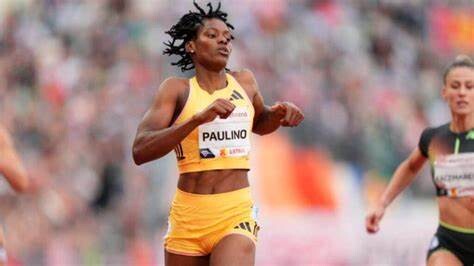
At the same tournament, she also earned a silver medal in the individual event, an accomplishment she surpassed by winning the gold medal at the 2023 World Championships held in Budapest.
In an interview with AFP, Paulino admitted that her experience in Tokyo made her more widely known: "The Marileidy who arrived in Tokyo wasn’t very well known. Now many people know me.
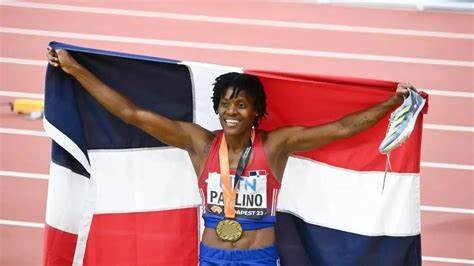
Winning a world title puts me in the spotlight among other athletes; I am one of the favourites."Paulino, who has a personal best of 48.76 seconds, feels in excellent shape for these Olympic Games. "I have prepared very well. Physically and mentally, I am more than ready. I just have to wait for the day," said the athlete.
Her goal is to break the 48-second barrier and win the Olympic gold. It is no surprise that Paulino is regarded as the best in the world, as she currently ranks first in the women’s 400m on the World Athletics ranking with 1479 points.
by Javier Carro
Login to leave a comment
Paris 2024 Olympic Games
For this historic event, the City of Light is thinking big! Visitors will be able to watch events at top sporting venues in Paris and the Paris region, as well as at emblematic monuments in the capital visited by several millions of tourists each year. The promise of exceptional moments to experience in an exceptional setting! A great way to...
more...Usain Bolt named ninth-greatest athlete of the 21st century
On Thursday, ESPN dropped a list ranking the 100 best athletes in the world since the year 2000. 70,000 ESPN contributors voted based on performances since 2000, assembling the list of the greatest athletes of the 21st century–with track and field’s very own Usain Bolt taking the ninth spot.
It’s sometimes hard to believe that the worlds of the “Big Four” leagues (MLB, NBA, NFL and NHL), tennis, soccer, golf, and the Olympics all exist in the same universe. How can you even compare the accomplishments of individual athletes to those of athletes in a team sport?
The Jamaican sprinter has a very impressive resume, collecting nine Olympic gold medals over his four Games (he had to return one due to a teammate’s doping violation), and still holds three world records: the 100m, 200m and 4x100m relay. Bolt’s 100m record has stood since 2009, when he ran 9.58 seconds to break the record for his third time, deeming him the world’s fastest man.
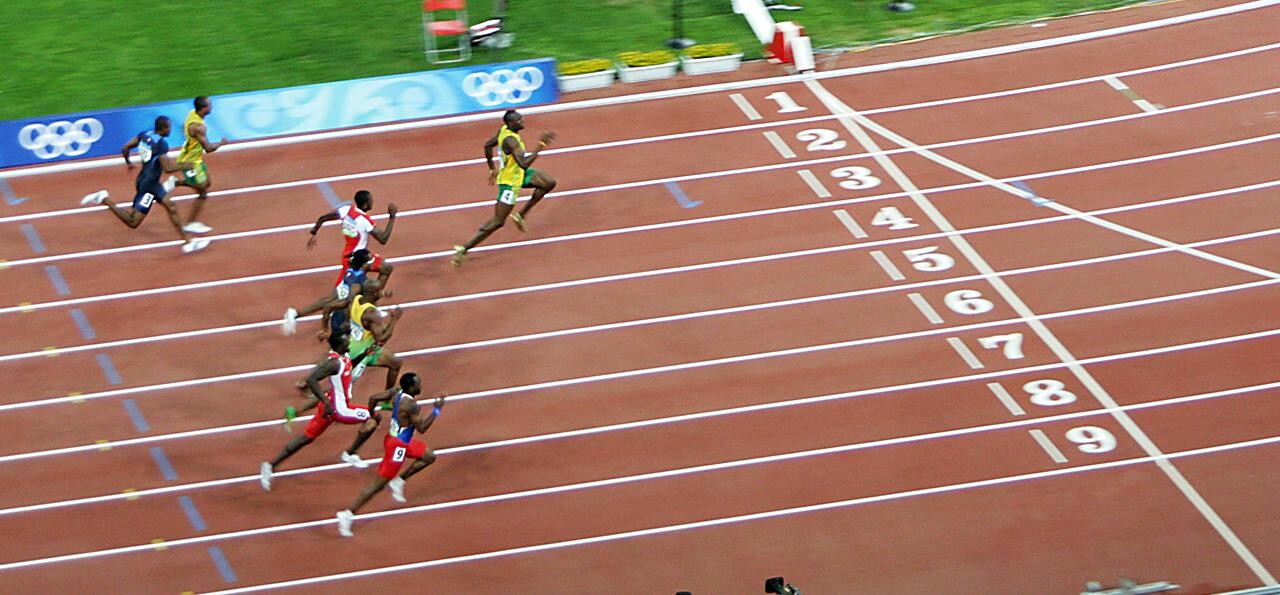
At his last Games in Rio 2016, Bolt achieved the triple-triple–winning three sprint golds at three consecutive Olympics. Although he retired in 2018, his monumental achievements will leave an extraordinary legacy in the track world.
Bolt is one of three Olympians in the ESPN top 10, bettered by only swimmer Michael Phelps, who took the top spot, and gymnast Simone Biles, in seventh.
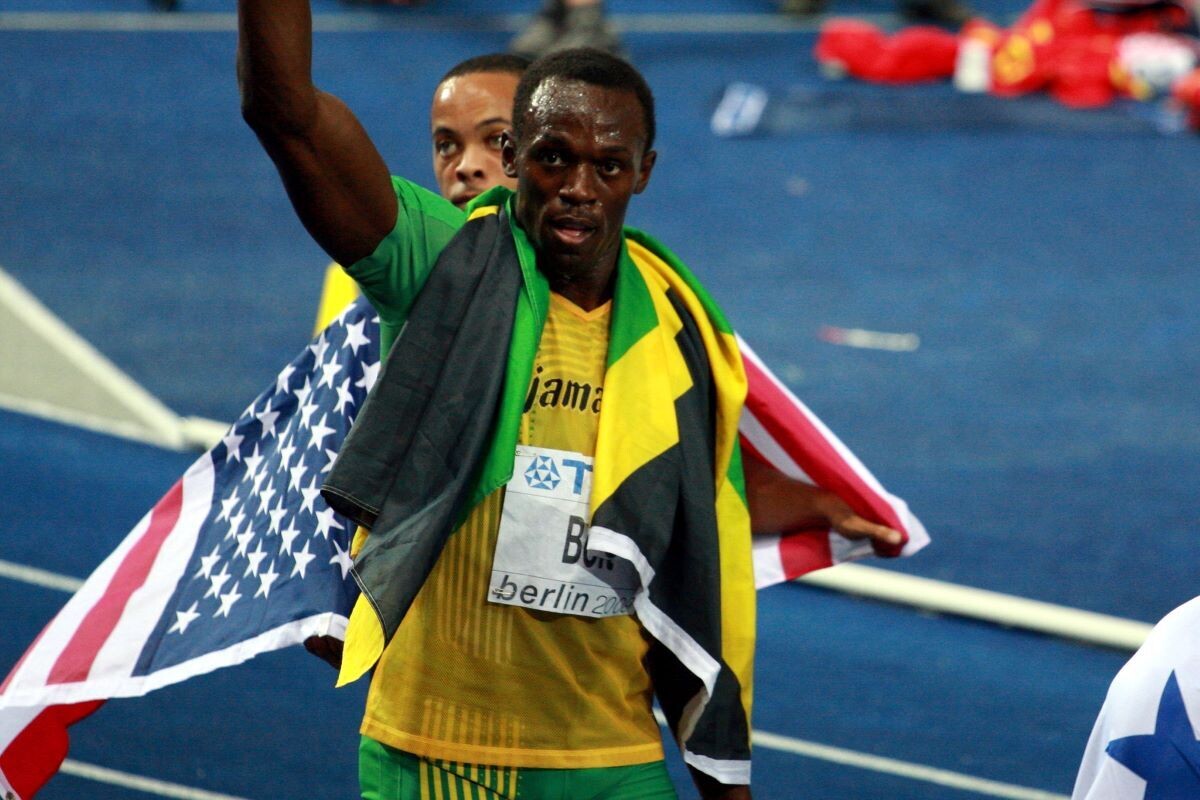
The representation of athletics in ESPN’s top 100 doesn’t end there: sprinters Allyson Felix of the U.S. and Shelly-Ann Fraser-Pryce of Jamaica claim the 63rd and 77th spots, respectively. Felix is a five-time Olympian for Team USA, with seven Olympic titles to her name, plus three silvers and one bronze. Fraser-Pryce is a three-time Olympic champion and eight-time Olympic medallist. At 37, the Jamaican hasn’t called it quits yet–she has qualified for her fifth and final Games later this summer in Paris.
by Cameron Ormond
Login to leave a comment
Emma Coburn to miss Olympics with broken ankle
American steeplechase star Emma Coburn shared on Instagram that her “dream of Paris” is over after she broke her ankle at the Shanghai Diamond League last month.
The 2016 Olympic bronze medalist and 2017 world champion landed heavily during a jump in the 3,000-meter steeplechase at the event in China, forcing her out of the race, and was diagnosed with a fracture in her right ankle.
Coburn had been gearing up for the U.S. Olympic trials in Eugene, Ore., next month and was a favorite to make her fourth American Olympic team in Paris this summer.
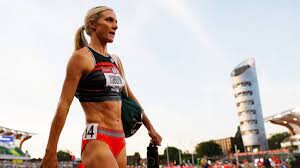
“I don’t know what to say,” she wrote in her post, which shows her fall at the Shanghai race, initially believing the damage was just a sprain. “When I got home, images showed torn ligaments, damaged cartilage, and a fracture in my medial malleolus.”
The 33-year-old shared that she had surgery on Wednesday and hopes to return to “jogging” some time in the next six weeks.
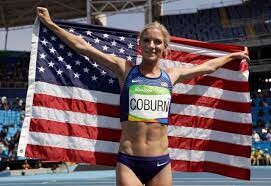
Coburn’s post shares videos of her in a cast, beginning her rehab with strength exercises and riding the stationary bike. A well-loved figure on the U.S. track and field scene, her post garnered supportive messages from several fellow running stars, such as marathoner Kara Goucher and decorated track star Allyson Felix, who wished her well in her recovery and expressed support for her comeback.
“I love this sport and nothing heals a broken heart like working hard and getting back,” she says in her post. “See ya out there later this year.”
Coburn placed 14th in the steeplechase at the 2021 Tokyo Olympics before learning her result was disqualified when she stepped off the track after a last-lap stumble over the barrier.
by Claire Haines
Login to leave a comment
Paris 2024 Olympic Games
For this historic event, the City of Light is thinking big! Visitors will be able to watch events at top sporting venues in Paris and the Paris region, as well as at emblematic monuments in the capital visited by several millions of tourists each year. The promise of exceptional moments to experience in an exceptional setting! A great way to...
more...Nike and Alberto Salazar settle $20 million lawsuit with Mary Cain over alleged abuse
On Monday, Nike, disgraced coach Alberto Salazar and distance runner Mary Cain reached a settlement in the $20 million lawsuit filed by Cain, as reported by The Oregonian.
The lawsuit accused Salazar of emotional and physical abuse towards Cain and highlighted Nike’s alleged failure to provide adequate oversight during her time with Salazar. Cain, who ran for Nike’s Oregon Project from 2012 to 2016, spoke out in 2019 about abuse within the program, exposing broader cultural issues at Nike, including a reported “boys’ club” atmosphere.
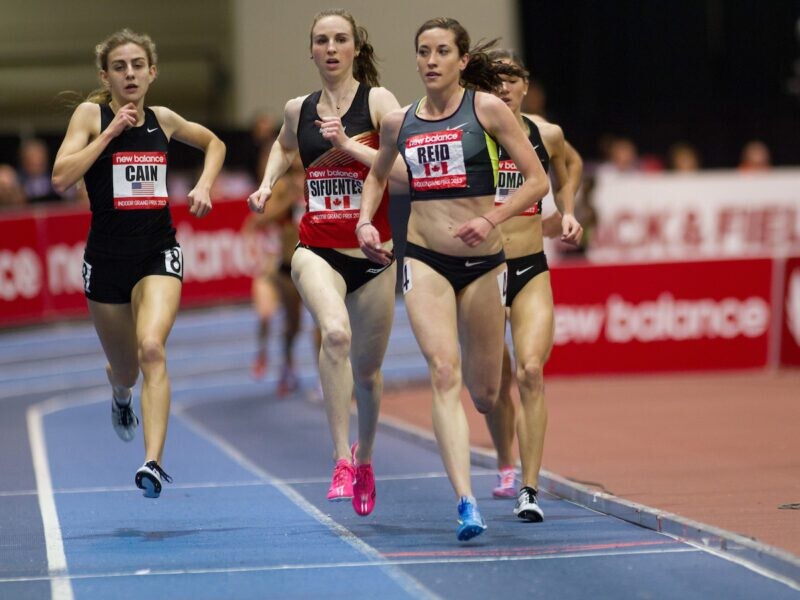
Salazar, once celebrated for coaching Olympic medallists Mo Farah, Galen Rupp and Matt Centrowitz, faced a permanent ban from working with U.S. track and field by U.S. SafeSport for alleged sexual assault and a doping scandal. Nike disbanded the Oregon Project in 2019, and Salazar’s name was removed from a building on the company’s campus following the ban.
Cain’s allegations against Salazar included controlling behavior, inappropriate comments about her body and humiliating practices, which led to depression, an eating disorder and self-harm. Nike was implicated in the lawsuit for allegedly not taking sufficient action to protect Cain, a sponsored athlete. Salazar denied the allegations, emphasizing his commitment to athletes’ well-being. Cain filed the $20 million lawsuit in 2021.
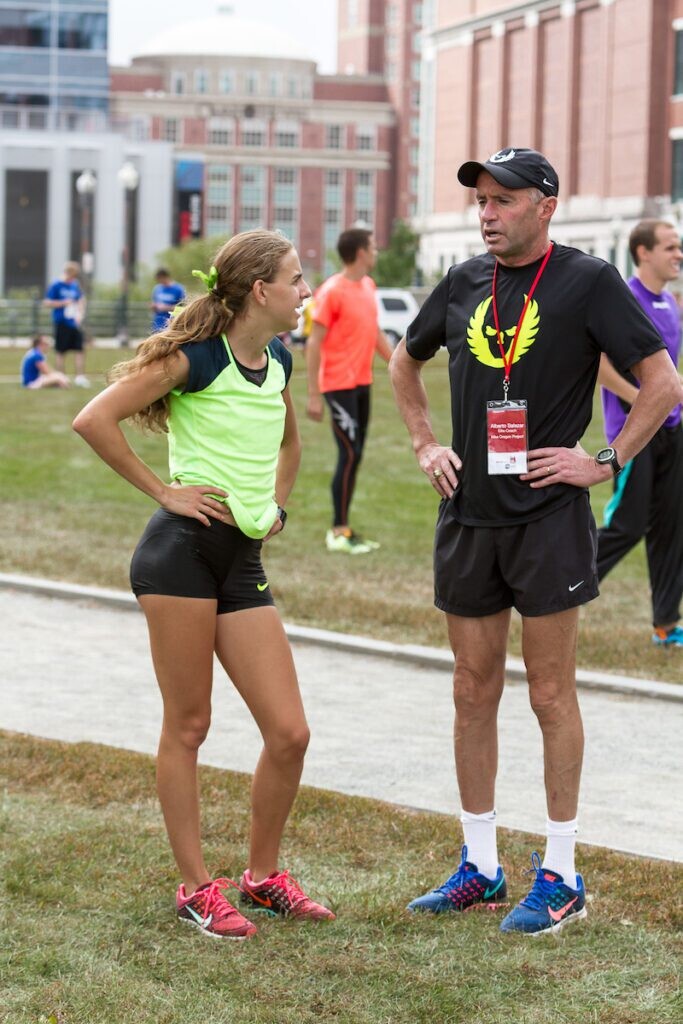
Numerous runners have come out and criticized Nike for its lack of support for female athletes. In 2018, U.S. Olympian Allyson Felix called out the brand for allegedly asking her to take a 70 per cent pay cut during her pregnancy, prompting Felix to leave Nike and join the female-powered brand Athleta before the Tokyo Olympics.
by Marley Dickinson
Login to leave a comment
When Will Eliud Kipchoge Slow Down?
What we can learn from the world’s greatest distance runner of all-time while he’s still in his prime
Eliud Kipchoge has expanded the universe of what’s humanly possible in the marathon, and he will forever remain a legend in the sport of long-distance running.

Not only for himself, but especially for those who have come after him. That includes everyone, both elite and recreational runners, who are preparing a marathon this fall or some distant point in the future. His current 2:01:09 world record and his barrier-breaking 1:59:40 time-trial effort in 2019 are legendary feats, both for the current generation of runners and for all time.
The 38-year-old Kenyan marathoner is a once-in-a-lifetime athlete, but time waits for no one, and especially not a long-distance runner. Like all elite athletes, his time at the top is limited, but fortunately, there is still time to immerse in the inspirational examples he’s providing.
Kipchoge recently announced he’ll return to the Berlin Marathon on September 24, where, last year, he won the race for the fourth time and lowered the world record for the second time. It is most likely what will be the beginning of a grand denouement as he goes for another gold medal at the 2024 Olympics next summer in Paris.
Given that he won his first global medal in the City of Light—when, at the age of 18, he outran Moroccan legend Hicham El Guerrouj and Ethiopian legend-in-the-making Kenenisa Bekele to win the 5,000-meter run at the 2003 world championships—it would certainly be one of the greatest stories ever told if he could win the Olympic marathon there next year when he’s nearly 40.
Certainly he’ll run a few more races after the Olympics—and maybe through the 2028 Olympics in Los Angeles—but, realistically, it is the start of a farewell tour for a runner who will never be forgotten.
Don’t get me wrong: I’m not at all writing Kipchoge off. In fact, I am excited to see him run in Berlin and can’t wait to watch next year’s Olympic marathon unfold. But just as we’ve watched Michael Jordan, Tiger Woods, Serena Williams, Shalane Flanagan, Usain Bolt, Allyson Felix, and other elite athletes succumb to the sunsetting of their peak performance level, so too will Kipchoge eventually suffer the same fate.
What I’m saying here is that we still have time to watch and appreciate Kipchoge eloquently working his magic and continue to be inspired in our own running and other pursuits in life. Remember how we marveled at Michael Jordan’s greatest in “The Last Dance” more than 20 years after his heyday? This is the start of the last dance for Kipchoge, who, like Jordan, is much, much more than a generational talent; he’s an all-time great whose legacy will transcend time.
Running has seen many extraordinary stars in the past 50 years who have become iconic figures— Frank Shorter, Joan Benoit Samuelson, Ted Corbitt, Carl Lewis, Steve Jones, Paul Tergat, Catherine Ndereba, Paula Radcliffe, Haile Gebrselassie, Kenenisa Bekele, Mary Keitany, Brigid Kosgei, and Kilian Jornet, to name a few—but none have come close to the body of work and global influence of Kipchoge.
Not only is Kipchoge one of the first African athletes to become a household name and truly command a global audience, but he’s done more than other running champions because of he’s been able to take advantage of this advanced age of digital media to deliberately push positive messages and inspiring content to anyone who is willing to receive it.
Kipchoge has won two Olympic gold medals, set two world records, and won 17 of the 19 marathons he entered, but he’s so much less about the stats and bling and more sharing—to runners and non-runners alike—that “no human is limited” and also that, despite our differences, we’re all human beings faced with a lot of the same challenges in life and, ultimately, hard work and kindness are what put us on the path to success.
How can an average runner who works a nine-to-five job and juggles dozens of other things in daily life be inspired by an elite aerobic machine like Kipchoge?
He is supremely talented, no doubt, but many elite runners have a similar aerobic capacity to allow them to compete on the world stage. What Kipchoge uniquely possesses—and why he’s become the greatest of all-time—is the awareness and ability to be relentless in his pursuit of excellence, and the presence and good will of how beneficial it is to share it.
If you haven’t been following Kipchoge or heard him speak at press conferences or sponsor events, he’s full of genuine wisdom and encouragement that can inspire you in your own running or challenging situation in life. His words come across much more powerfully than most other elite athletes or run-of-the-mill social media influencers, not only because he’s achieved at a higher level than anyone ever has, but because of his genuine interest in sharing the notion that it’s the simplest values—discipline, hard work, consistency, and selflessness—that make the difference in any endeavor.
This is not a suggestion to idolize Kipchoge, but instead to apply his wisdom and determination into the things that challenge you.
“If you want to break through, your mind should be able to control your body. Your mind should be a part of your fitness.”
“Only the disciplined ones in life are free. If you are undisciplined, you are a slave to your moods and your passions.”
“If you believe in something and put it in your mind and heart, it can be realized.”
“The best time to plant a tree was 25 years ago. The second-best time to plant a tree is today.”
Those are among the many simple messages that Kipchoge has lived by, but he also openly professess to giving himself grace to take time for mental and physical rest and recovery. It’s a simple recipe to follow, if you’re chasing your first or fastest marathon, or any tall task in life.
Kipchoge seems to defy age, but his sixth-place finish in the Boston Marathon in April proved he’s human. As much as it was painful to watch him falter, it was oddly refreshing and relatable to see him be something less than exceptional, and especially now that he’s tuning up for Berlin. He has nothing left to prove—to himself, to runners, to the world—but he’s bound to keep doing so just by following the same simple, undaunted regimen he always has.
There will be other young runners who will rise and run faster than Kipchoge and probably very soon. Fellow Kenyan Kelvin Kiptum—who has run 2:01:53 (Valencia) and 2:01:25 (London) in his first two marathons since December—seems to be next in line for Kipchoge’s throne of the world’s greatest runner. But even after that happens, Kipchoge’s name will go down in history alongside the likes of Paavo Nurmi, Abebe Bikila, Emil Zátopek, Grete Waitz, Shorter and Samuelson because of how he changed running and how he gave us a lens to view running without limits.
Berlin is definitely not the end of Kipchoge’s amazing career as the world’s greatest long-distance runner. I fully expect him to win again in an unfathomable time. But the sunset is imminent and, no matter if you are or have ever been an aspiring elite athlete at any level, a committed recreational runner, or just an occasional jogger trying to reap the fruits of consistent exercise, his example is still very tangible and something to behold.
by Outside Online
Login to leave a comment
Allyson Felix speaks out for change after death of former teammate
U.S. Olympic legend Allyson Felix has spoken out, emphasizing the need for better maternity care for black women in America to ensure that the death of her former teammate Tori Bowie is not in vain. Bowie tragically died at the age of 32 last month due to complications during childbirth.
In an article for Time Magazine, Felix, a seven-time Olympic champion, expressed her concern, saying, “Three gold medalists from that 4x100m relay team in Rio set out to become mothers. All three of us, all Black women, had serious complications. Tori passed away. We’re dealing with a Black maternal health crisis. We have three Olympic champions, and we’re still at risk.”
In 2018, Felix gave birth prematurely at 32 weeks, after being diagnosed with pre-eclampsia, a potentially life-threatening pregnancy condition characterized by high blood pressure. Tianna Madison (formerly Bartoletta), another member of Felix and Bowie’s gold-medal-winning 4x100m relay team, also revealed that she faced a near-death experience during childbirth, after going into labour at 26 weeks.
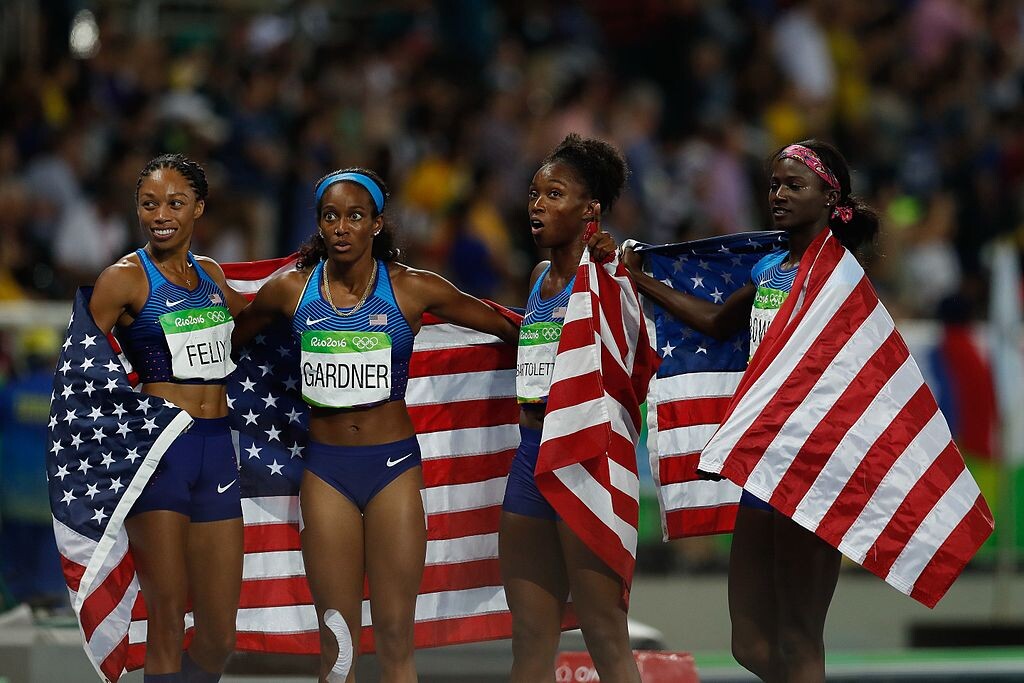
Felix brought attention to data from the Centers for Disease Control and Prevention (CDC) in 2021, which showed that the maternal mortality rate for Black women in the U.S. is 2.6 times higher than that for white women. Similarly, a 2021 study by the University of Oxford demonstrated that Black women in Britain were four times more likely to die during pregnancy and childbirth than white women.
Underlining the urgency of the situation, Felix stated, “There needs to be a change, now, especially in light of Tori’s tragic passing.” Felix also mentioned celebrities Serena Williams and Beyonce, both of whom had near-death complications during pregnancy. “I hate that it takes Tori’s situation to bring attention to this issue,” writes Felix. “But often, it serves as a wake-up call.”
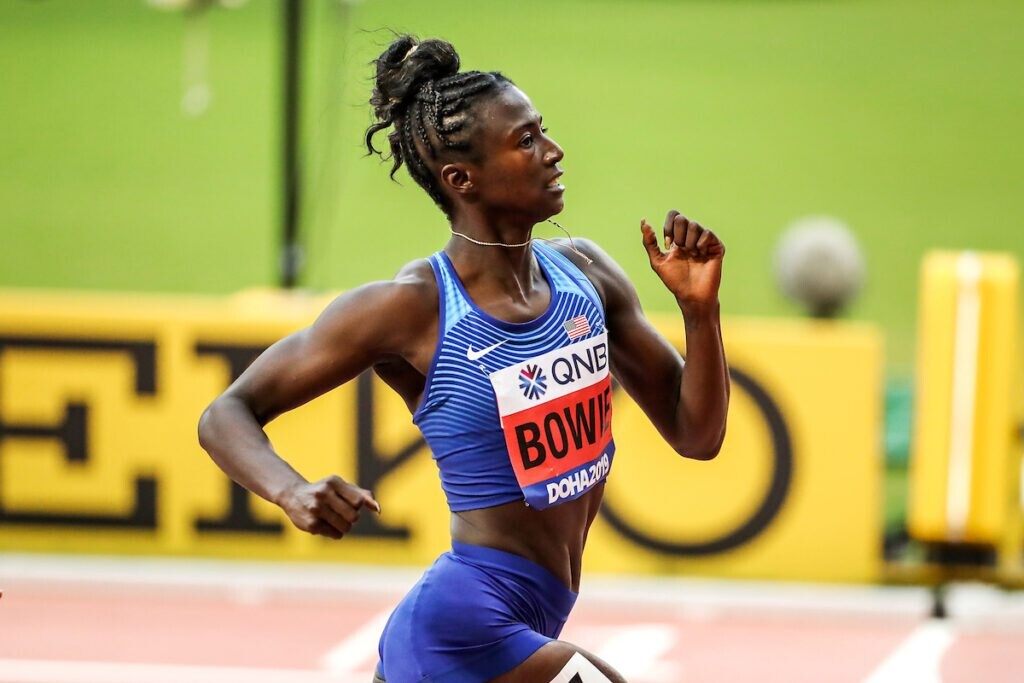
Expressing her concern about having more children, Felix called on the medical community to address the challenges faced by Black women. “Doctors need to have conversations with pregnant Black women and educate them about the signs to look for during pregnancy,” writes Felix. “We are at a greater risk of experiencing these complications.”
Despite the challenges, Felix remains hopeful that “things can get better.” She expressed her hope that Bowie’s death will result in much-needed changes to health care for Black women.
by Running Magazine
Login to leave a comment
Sha'Carri Richardson nominated for BET Sportswoman of the Year Award
Track and Field has two representatives as Sha'Carri Richardson and Allyson Felix have been nominated for 2023 BET Sportswoman of the Year Award.
Sha'Carri Richardson's continued relevance in sports and entertainment isn't stopping anytime soon, as she has been nominated for the BET Sportswoman of the Year Award.
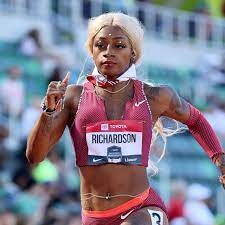
Richardson is a nominee alongside prominent sports personalities such as Serena Williams and Allyson Felix. Others nominated are Alexis Morris, Angel Reese, Candace Parker, and Naomi Osaka, who are all worthy of winning the award.
It's the second consecutive year Richardson will be in the nominee list, as she lost to Osaka in 2022.
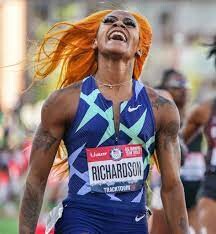
Richardson has an unbeaten record in the 100m this year and has a world-leading time of 10.76s. She has clocked the fastest times this season, both legal and wind-aided, making her a favourite to win the US title in a few weeks.
Her last race at the Star Athletics Speed Series saw her win the 100m final in an effortless windy 10.73s (2.6), which speaks volumes of being the most in-form female sprinter in the world this year.
by Funmilayo Fameso
Login to leave a comment
At 69, Bobby Kersee is track's 'mad scientist' and as influential as ever
Four years ago, the man associated with speed more than any track and field coach in the world felt himself slowing down, and he did not know why.
Since he was born in Panama in 1954 to a Panamanian mother and U.S. Navy father, Bobby Kersee has always been restless, a self-described wanderer with energy that matched his athletes. But in 2019, feeling unusually sapped, he called his doctor in St. Louis. Blood tests produced results dangerously far beyond the norm. Pancreatitis kept him stuck in a hospital for four weeks.
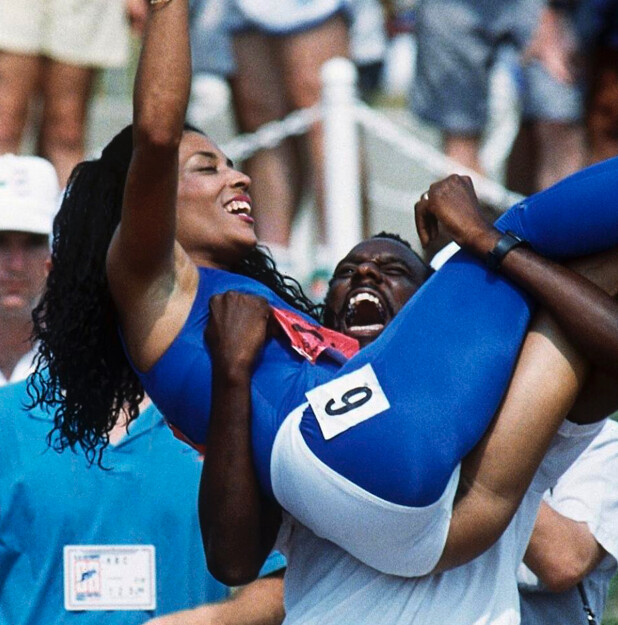
Once discharged, Kersee gave up red meat and alcohol.
What he would not quit was track.

Forty years after coaching his first world champion Kersee, now 69, paced relentlessly for four hours on Thursday while watching his training group at West Los Angeles College.
“Everyone kind of says the same thing: You know, he's different in terms of he's basically a mad scientist,” said Athing Mu, the 20-year-old reigning Olympic and world champion at 800 meters who switched to Kersee’s coaching in September to expand her range. “He knows what he's doing.”
Under cloudy skies at the track high above Culver City, nine athletes in his training group, dubbed Formula Kersee, ran tailored workouts and waited for his every word, from the barked “let’s go!” to commands about mechanics he hollered to athletes mid-run. He lifted hurdles, held court with reporters and stopped only to film block starts with his iPhone.
At an age when he might have become anachronistic, Kersee and his methods still represent sprinting’s gold standard, associates and athletes say. Invigorated by a training group that describes itself as a family and could be dominant into the next decade behind headliners Mu and 23-year-old 400-meter hurdles world champion and world record-holder Sydney McLaughlin-Levrone, Kersee said his career has no discernible finish line.
His coaching, primarily of sprinters and hurdlers, has brought his athletes at least one gold medal in 10 consecutive Summer Olympics, a litany of world championships and world records and, for Kersee, veneration, criticism and influence.
As the first professional meet held at UCLA’s Drake Stadium since 1990, and a key early tentpole in USA Track & Field’s attempted plan to grow its U.S. fanbase before the 2028 L.A. Olympics, this weekend’s Los Angeles Grand Prix is both a callback to a time when track’s popularity soared and, its organizers hope, a harbinger such times can return.
Outside of Sebastian Coe, the 1984 Olympic gold medalist in the 1,500 who has since ascended to lead track’s global governing body, World Athletics, few figures have spanned both eras as prominently as Kersee.
Athletes and associates credit his ability to turn seemingly outlandish goals and times into tangible results to an ability to know what they need. Malachi Davis, who has overseen McLaughlin-Levrone’s training since she turned professional, likened Kersee to a conductor, his whistle and yellow stopwatch replacing a baton to direct “a beautiful dance of confidence and knowledge.”
Many coaches can teach how to run fast and build a race plan, McLaughlin-Levrone said, but Kersee understands “how to break it down piece by piece.”
Robert Forster, a Santa Monica-based physical therapist who has worked with Kersee’s athletes since 1983, said Kersee understands the “work-rest ratio” better than any coach, and does not overtrain where other coaches might double down on mileage. Forster has seen Kersee send an athlete home to rest just from the look on their face, and likes to tell a story about the 2016 Olympics, that Kersee later confirmed. Allyson Felix, the Los Angeles native who under Kersee became the most decorated athlete in track’s history, was nursing a severely sprained ankle and the physical therapist told Kersee it needed to be iced 20 minutes every hour. Forster did not expect, however, that Kersee would stay up the entire next night icing the ankle as Felix slept.
Kersee was an early adopter of technology, upgrading his video cameras at a Westwood electronics store years before he could film block starts of sprinters Jenna Prandini and Morolake Akinosun on his iPhone and zip the footage to an iPad on the infield of the West L.A. track.
Yet the Kersee mystique has endured as much because of his grasp on psychology as biomechanics — feeling for when to push and when to pull back.
Brandon Miller, a top 800-meter hopeful who began working with Kersee in September, has heard other athletes describe Kersee as “crazy.” He disputes that characterization, but noted that Kersee knows to stoke his competitiveness entering a workout’s final repetition with four words: “OK, what you got?”
“I've never met any coach like him,” Mu said. “He's not going to make you do anything that's for his sake. You know, it's gonna be all for you and the benefit of you and your career. And so, I come in here, I knew that he was very intentional, and that's something I needed, especially if I want my career to be long.”
Raised by a grandmother as an “A-train baby” bouncing between the Bronx and Queens, Kersee lost his mother, Daphne, when he was 14, before moving to San Pedro for high school.
He put himself through college at Long Beach State by working at a youth correctional facility in Whittier, where Kersee watched wards from midnight until 8 a.m. After graduating, he had two jobs: Track coach at Cal State Northridge, and counselor at another youth facility in Chino. He took over UCLA’s track and field program in 1980 and that provided enough money to be comfortable. Coaching Greg Foster to his first world championship in 1983, and watching his athletes win six golds and four silvers at the Los Angeles Olympics one year later, provided the final confidence he could sustain coaching as a career.
But he did not leave behind the edge required to do his former jobs.
“I used to work in the prisons, so you can’t walk into the prisons being Mother Teresa,” he said. “And then I did find myself carrying a little bit too much of that to the track. I had to calm myself down and say, 'Wait a minute, you’re not working with a warden.'”
Once, an elderly woman approached Kersee in an airport in Indiana and told him she did not like what she had seen from Kersee or the other famed coach with the B.K. initials: Bobby Knight. He did not belittle his athletes, he said, but he also didn’t leave room for interpretation about who ran the workout. The edge created a mystique that “he's crazy,” Miller said. “But he's not. I feel like everybody has preconceptions of everybody but you won't really know unless you're there and you're with them every day.”
Just as when he built his vaunted World Class Athletic Club in the 1980s, he will only train those he can coach hard and have chemistry. His athletes typically train Monday, Tuesday, Thursday and Friday. He treats Monday Zoom calls with the group as though he is re-interviewing for the job. It’s more convenient than years before, he said, when he recalled gathering before dawn in Europe to address their complaints with him.
“I think we have that understanding that I’m going to listen and respect them,” he said. “But my job is to get the job done for them individually and collectively but you hired me. And if you hired me, let me do my job.”
That job, essentially, can be reduced to one thing: Imparting confidence in his plan. And no one does it like Kersee, said Davis, who sprinted professionally before aiding McLaughlin-Levrone.
“He's a competition coach, so the time it counts, you feel confident,” Davis said. “And your head coach is basically your general and then competition is basically war. And yes, you prepare for war but that final voice, that presence, that action, that essence, that’s Bobby. And he earned that by what he’s accomplished throughout his career.”
Kersee allows that age has softened him. As McLaughlin-Levrone recalled last August, Kersee earned her trust when he saw her overwhelmed with emotion at a 2020 practice and handed her a paper showing a wheel of emotions, saying he had trouble expressing himself, too.
Though accustomed to criticism of himself for years — he joked he would be buried in a track, and "probably as much as people hate me, they’ll put me in lane one, because I’ll be stepped on the most" — he worries about how the inundation of social media affects athletes’ mental health. He has traveled to support the singing ambitions of Formula Kersee sprinter Chloe Abbott. This spring, a smiling Kersee was featured on TikTok when his athletes remade the opening credits of the 1990s sitcom “Family Matters.”
Four decades into his career, he has “a whole lot of knowledge and a whole lot of patience,” he said. “But still, don’t let grandpa get out of the chair.”
Ato Boldon was never coached by Kersee during his sprinting career but has known him for 31 years, since they overlapped at UCLA, and has seen a “golden-hearted” side to the coach. He also described Kersee’s coaching equivalent as either Knight or San Antonio’s Gregg Popovich.
“Everybody under him wins,” said Boldon. “But it’s not necessarily a democracy.
“... As time has gone on, people are like, ‘Wow he’s so this or he’s so that, he’s so abrasive.’ Listen, do you want results, or do you not want results?”
No one argues that Kersee gets results. The most common criticism is how rarely his athletes compete en route to smashing records and claiming gold.
Among athletes, meet directors, agents and track officials who see a need for the sport’s biggest stars and strong competition to draw in casual fans, it has become a question of how to unite what is best for the top athletes’ futures with what is best for the sport’s growth. The tensions surrounding the discussion are not dissimilar from the way “load management” in the NBA has sparked concerns whether it will turn off fans from the regular season.
Because many top athletes train under Kersee, he has become a focal point. There is also his history of pulling athletes late before a meet, sometimes because of injury, and sometimes as a power play, as in 1994, when a dispute over pay led him to withdraw Gail Devers from a high-profile Los Angeles indoor meet.
The topic reignited last week when he withdrew Mu and McLaughlin-Levrone from the Grand Prix, a meet for which he serves as co-promoter. It came soon after telling Track & Field News in February that even he would like to see McLaughlin-Levrone run more often, and told The Times in March that there was no reason meets in the U.S. couldn’t draw thousands if the sport’s leaders banded together to promote strong competitions.
Asked about the balance of what is best for his athletes, or the sport, Kersee this week called it a byproduct of limited sponsorship money within the sport, which incentivizes performances at the biggest meets, which often require qualification earlier in the season. Only a handful of stars make big money and can afford to be choosy. He contrasted it with the NFL and NBA, where athletes can still earn a paycheck while resting.
“I think it’s a little tougher on our athletes to try to balance out wanting to run for the public and run for our sport and also knowing if I run too much or make one little mistake it might cost me making a team,” Kersee said. “That if I go out there and run five or six races I’m going to get to the point of, 'OK why is he running me so much and she gets injured over there, did she really need to run?'”
McLaughlin-Levrone released a statement after being pulled from the Grand Prix field that she “regrettably” would not be competing, citing her coach’s choice. It also said she trusted his judgment, which the world record-holder echoed again Thursday.
“He has a plan and he is going to work it out to perfection,” said Boldon, who will call Saturday’s meet as part of NBC’s broadcast team. “It might not benefit USATF, it might not benefit the fans, but you tell me, what moment stood out most from last summer's world championships?”
It was McLaughlin-Levrone’s stunning 50.68 time to win the 400-meter world title and lower her own world record. The run cut through the noise to make SportsCenter. It also left McLaughlin-Levrone sore for days, she said. Seeing her parents in the stands, for the first time after becoming the first woman to run under 51 seconds, she told them “that hurt, so bad.”
“We've been very calculated in when we run and I think it's yielded us great results,” McLaughlin-Levrone said. “Bobby always uses analogies and he's like, 'You don't take the Ferrari out every day for a drive. You take it out when it needs to come out and it does its things and you put it back in the garage.' So, your body can only be pushed to a certain level so much in your career.
“You only have so many races in your legs and I think we're really strategic about which ones we choose to run. Obviously I know the sport wants to see a little bit more and I think we're trying to figure out how to do that in a safe way that we can still accomplish our goals and give them something to look forward to.”
For McLaughlin-Levrone and Mu, the question is not whether they will make this summer’s world championships in Hungary, or next summer’s Paris Olympics, but which events — possibly plural — they will run.
When Kersee evaluates whether to bring an athlete into his coaching, he also looks for their potential range. He thought he lost his job coaching Felix when he told the 200-meter star during his interview that he would have her run the 400.
Mu and McLaughlin-Levrone’s youth and potential range is one of the sport’s most speculative discussions; news about their upcoming races create instant headlines. The duo are “two of maybe the most talented athletes he’s ever had,” Boldon said.
Their world championships last summer gave McLaughlin-Levrone an automatic berth into the upcoming world 400-hurdle field, and Mu an entry into the 800. With that secured, Kersee has focused on running McLaughlin-Levrone in the open 400 meters, where Marita Koch’s world record of 47.60 has been effectively unapproachable for 38 years — only four women have run even faster than 49 seconds in the past 20 years. She once thought 47.60 was “impossible.” Not anymore.
“It's a very daunting number to look at, I'll tell you that,” McLaughlin-Levrone said. “But at the end of the day, I think if we can take the 400 hurdles to 50.6, I think 47.6 isn't too far off.”
In addition to her 800-meter world title, Mu once owned the collegiate 400-meter record and ran on the U.S. 4x400-meter relay team that won Olympic gold in Tokyo.
“I'm still super young and I have not touched the surface of a lot of things yet,” Mu said. “But I do have visions, which is like really big goals of competing in obviously the Olympics again, and then worlds and hopefully, doubling up.”
Would that mean the 800 and 400, or the 800 and 1,500?
“Hopefully both,” she said. “I mean, I would love to have a chance to do 4/8 and then go ahead and do the 8/15 at some point.”
Maybe this explains why Kersee moved so quickly across the track during practice. There was no sign he had once slowed down.
“I’m glad,” he said, “I have that Energizer Bunny still in me.”
This story originally appeared in Los Angeles Times.
Login to leave a comment
Mia Brahe-Pedersen just became the third-fastest U.S. high school female athlete of all time
Mia Brahe-Pedersen, the 17-year-old star in the making from Lake Oswego High School in Oregon is the fastest female runner in the state in 100 and 200 meters. Her personal best time of 11 seconds in the 100 meters makes her the third-fastest U.S. high school female of all time—the boys never had a chance. Among her competition in the race? Brahe-Pedersen’s prom date, Ethan, who she said has been a gracious runner-up. She recently posted a video of the triumph to her TikTok page, garnering support and praise from women as well as challenges from many more men.
“I’ll take whatever competition I can get,” she told KGW8. “I don’t care if they’re boys or girls or whatever. I really don’t care. If I can get to my goals while racing you, I will do it, and I’m appreciative that you want to be in a race against me.”John Parks, Brahe-Pedersen's coach, has plenty of experience coaching runners at the highest level. Upon seeing her, he knew Brahe-Pedersen possessed the potential to become an Olympian.
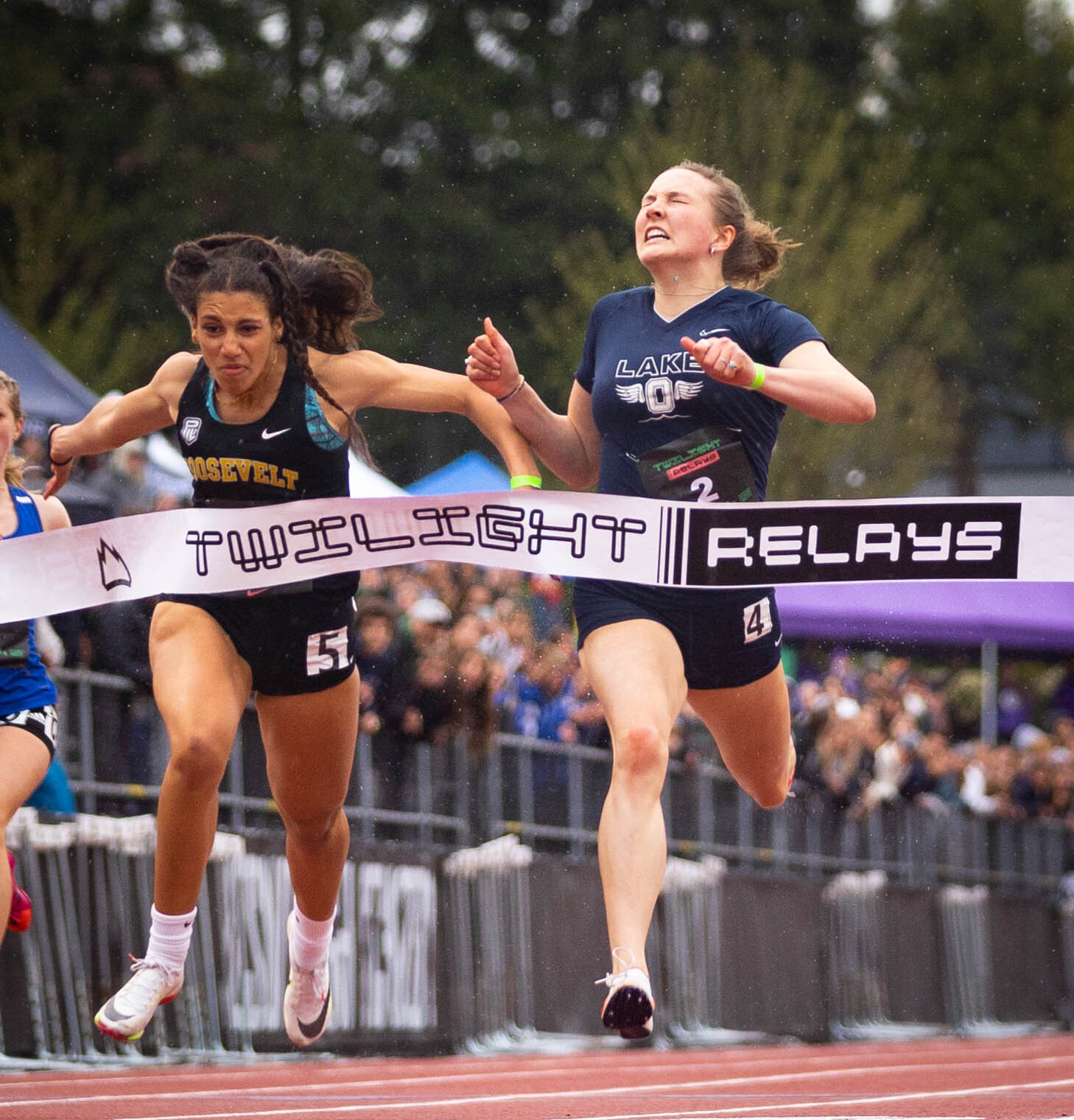
“She’s better than the top American collegiate in the 100,” Parks told KGW8. “Taking down Marion Jones 100 record, Allyson Felix record indoors, Sonya Richards Ross.” Parks knows a thing or two about what it takes to be an Olympic runner; he’s worked with talented runners at every level, including fellow Oregonian Ryan Bailey, who introduced the pair.
"She is eager to learn and wants to work," Bailey said in an interview with RunnerSpace. "I want to see her destroy every record possible. Everything I've learned in my career I can put into her, from avoiding injuries, being in a good mental space, things I wished I would have known."
The next record for Brahe-Pedersen to shatter? A sub-11 time. Parks thinks she has what it takes to get there.
"She's so driven and as tough as a competitor as I've ever seen. She works harder and is more dedicated. She's the coach's dream."Mia Brahe-Pedersen, fresh off of setting a new 100-meter record at the Nike Portland Jesuit Twilight Relays with an 11.07 run, has crushed even more competition by recently winning a 100-meter mixed-gender race.
by Runner’s World
Login to leave a comment
U.S. sprinter breaks collegiate 400m record in consecutive races
University of Arkansas sprinter Britton Wilson continued the season of her life over the weekend, breaking her own collegiate 400m record in consecutive races. Competing at the SEC Outdoor Track & Field Championships, Wilson entered the weekend with a lifetime 400m best and NCAA record of 49.51 seconds. She proceeded to run 49.40 seconds in the preliminary heats on Friday and followed that up with a massive PB of 49.13 in the finals on Saturday. She now owns the three quickest 400m times in NCAA history.
Thanks to her impressive clocking, the 22-year-old sprinter has climbed up the ranks of the U.S. all-time list, currently sitting fourth. Wilson now holds a faster personal best than U.S. Olympic legend Allyson Felix, whose 400m best of 49.26 was set at the 2015 World Championships in Beijing.

A hot streak
Wilson has had a phenomenal 18 months on the track. In 2022, she and her Arkansas teammates won the NCAA 4 x 400m indoor title, and a few months later, she ran to an individual win in the 400m hurdles at the NCAA outdoor championships. She followed that up by qualifying for the World Athletics Championships in Eugene, Ore., where she was part of the American team that ran to gold in the 4 x 400m relay.
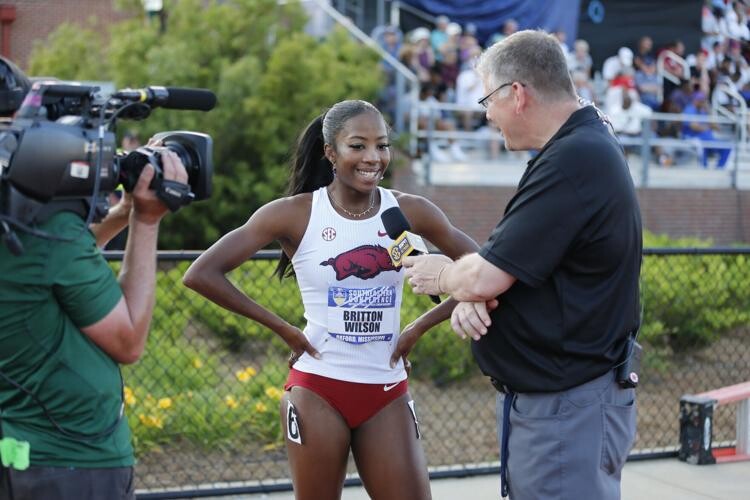
Wilson rode a massive wave of momentum as she flew into the 2023 season, and it didn’t take long for her to get back to her winning ways. In February, she won two more NCAA indoor titles, helping the Arkansas women defend their 4 x 400m crown and taking the win in the individual 400m (her winning time of 49.48 seconds is a U.S. indoor record).
She didn’t slow down transitioning from indoor to outdoor track, flying to the NCAA 400m record at a race in Florida in April when she ran 49.51 seconds. This time beat Athing Mu‘s previous collegiate record of 49.57 seconds.
A successful weekend
With the NCAA record already under her belt, as she worked toward the SEC championships, all eyes were on Wilson in the women’s 400m. It likely came as a shock, however, when she beat her record in the heats on Friday. With her final time of 49.40, she was well ahead of the rest of the field (second place crossed the line in 50.78 seconds).
Wilson was the obvious favourite for the win on Saturday, but after her prelims record, the question was whether she could run yet another PB. It turned out that she could, and although she had already run a blazing race just 24 hours before (and a 400m hurdles heat on Thursday), she smashed the record once more, crossing the line in 49.13. As in Friday’s race, she finished more than a second ahead of the next-closest runner.
Later that day, Wilson won the 400m hurdles title, cruising to the line with a 53.28 win and beating the second-place woman by almost two whole seconds. Wilson will be a favourite for the NCAA title in both events come June at the outdoor championships.
by Ben Snider-McGrath
Login to leave a comment
Allyson Felix receives ultimate honor from her alma mater, USC
Seven-time Olympic champion and the most decorated female track athlete in U.S. history, Allyson Felix, received a special honor on Jan. 18, when the University of Southern California (USC), her alma mater, recognized her achievements by changing the name of the school’s track to Allyson Felix Field.
“For me to be born and raised in Los Angeles and have such a history at USC, I am just completely humbled,” Felix said in a statement released by the university. “It’s such a huge honor to be a part of history on campus, and it’s such a special place for me.”
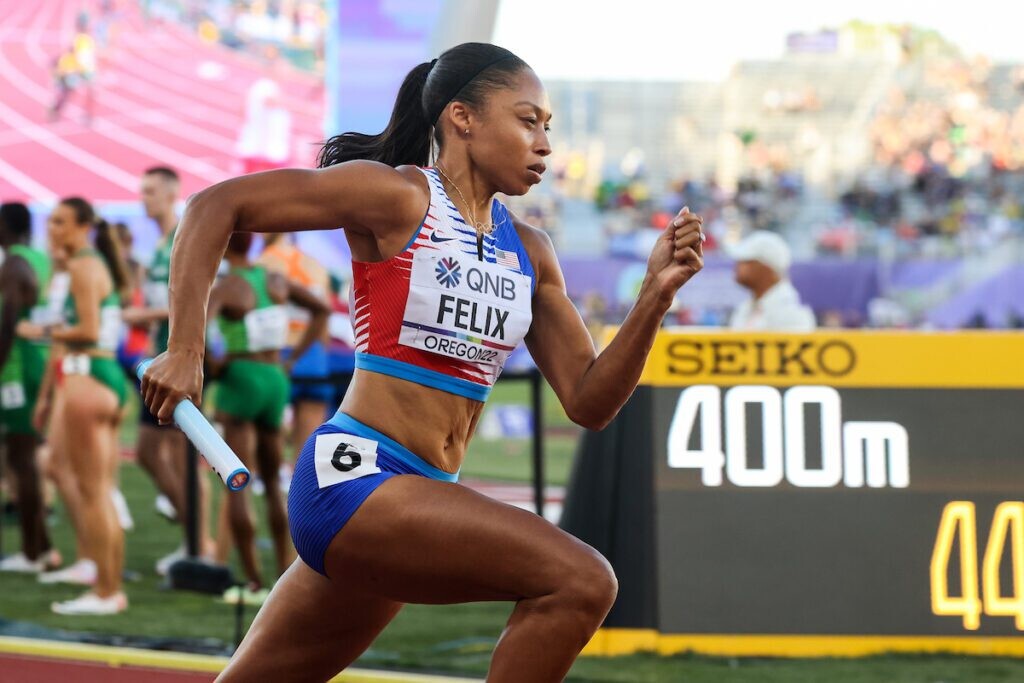
Felix retired at the end of the 2022 season, competing in five Olympic Games between 2004 and 2020, and winning 11 Olympic medals: seven gold, three silvers and one bronze.
She is also the most decorated athlete in world championship history, with 20 medals between 2005 and 2022, including 14 golds, three silvers and three bronzes (seven from individual events and 13 from team relays).
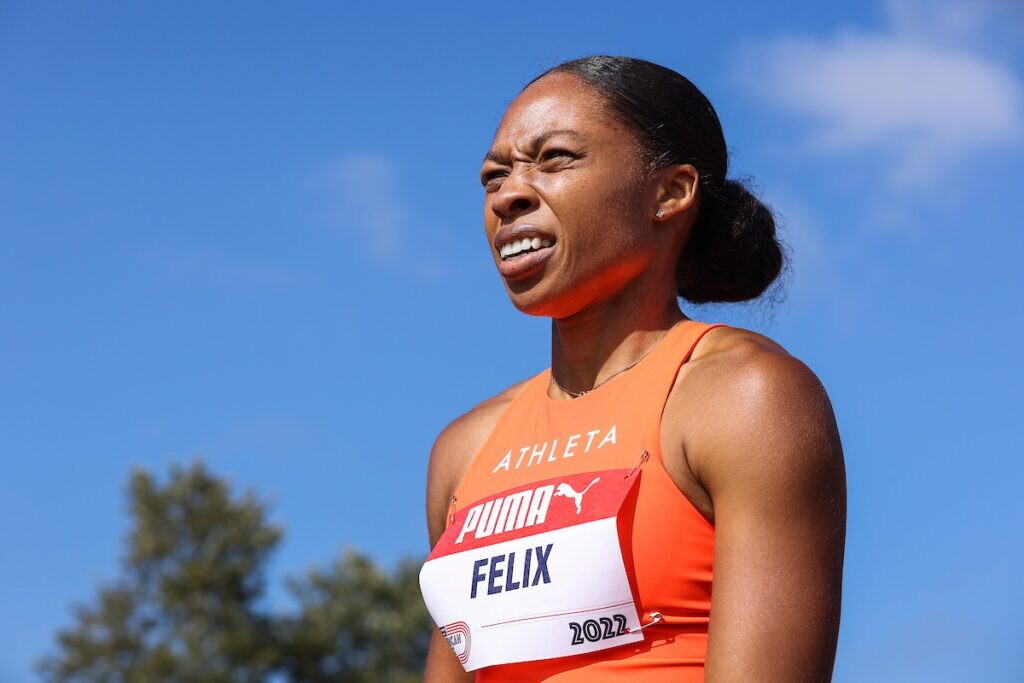
During her career, she has been a prominent advocate for women and women of color in the sport of track and field. In 2018, she broke her contract with Nike after saying publicly that the company declined to provide adequate maternity benefits and salary guarantees as Felix looked to start her family.
The stadium was previously named after American philanthropist Katherine B. Loker. The track will be formally changed to Allyson Felix Field this spring.
“The Allyson Felix Field will recognize her immense achievements as a sports legend and Trojan—while also showing our admiration for her role as an entrepreneur, advocate and champion for women,” said USC President Carol Folt.
by Marley Dickinson
Login to leave a comment
New athletics series to be launched in US to boost sport's popularity before Los Angeles 2028
A new circuit of athletics meetings designed to help popularise the sport in the build-up to the 2028 Olympic Games in Los Angeles is set to be launched next year in the United States.
The series has been revealed by Max Siegel, the chief executive of USA Track & Field (USATF), with the aim of making athletics the country’s fifth-most-followed sport by the time of Los Angeles 2028.

The plan has been backed by World Athletics, who under its President Sebastian Coe, have long had the aim of making the sport more popular in the US and have joined forces with USATF on a series of initiatives called "Project America".
"Whether you think we're crazy or not, it gives us something to shoot for in terms of how they measure where track and field is in the ecosystem," Siegel told the Los Angeles Times.
The US has long been the sport’s most successful country when it comes to winning medals at the Olympic Games and World Championships, but its athletes' excellence has always outstripped the interest of the American public.
A World Athletics-contracted Nielsen study from 2019 found that track and field was the eighth-most-followed US sport, with 37 per cent of slightly more than 1,000 respondents indicating they were interested in it.
To move into the top five behind football on 66 per cent, baseball 56 per cent, basketball 55 per cent and soccer 47 per cent, track and field would need to surpass swimming, tennis and motor racing.
Coe believes that what gives athletics a great platform in the US is the fact that, according to their figures, there are already 50 million Americans who identify as recreational runners.
"The challenge is to form that really clear connect with what they are doing - particularly those recreational runners - and believing they are part of that track and field landscape," Coe said.
Besides California, Florida and Texas are among states identified as possible host venues for the new series.
Siegel plans to "take pre-existing events with built-in fanbases and create a 'festival-type atmosphere' around them, perhaps including a road race, to tap into its largest possible audience of casual runners."
He hopes that the current World Athletics Championships being staged in Eugene in Oregon, the first time the event has been held in the US, will help provide a launchpad for the new USATF series.
American broadcaster NBC is showing 12.5 hours from the World Championships on its main feed, including a first-ever prime-time window - four more hours than it has devoted to a previous world championship since the 2007 event in Osaka.
Among those publicly backing the new circuit is Allyson Felix, America’s seven-time Olympic and 13-time World Championship gold medallist.
"I guess it’s been a long time coming," she said.
"I know that we’re really proud to host the World [Championships].
"We’re really excited you all get to see what we’ve seen and come to Hayward and experience the Hayward magic.
"I know in my career, I’ve always been a little envious of that athlete in the home country, that applause.
"I’m just really excited for all the US athletes to be able to get that experience.
"I hope that hosting events in the U.S. will bring in new fans, that people will understand the sport and be drawn to it.
"I hope that having the Olympics in Los Angeles coming up will bring a new wave of fans.
"So just really, we got to get out there and really keep kids engaged and enjoying the sport.
"I hope that having events in the US is one way."
Login to leave a comment
Dominican Republic overhauls host nation to take mixed 4x400m gold in Oregon
Had the race been 10 metres shorter, it may have gone in the USA’s favour. 10 metres longer and perhaps the Netherlands would be the champions. But Dominican Republic timed their efforts to perfection in winning the mixed 4x400m at the World Athletics Championships Oregon22, catching the USA just before the line and holding off a fast-finishing Dutch team.
Over the past 12 months, four teams in particular have dominated this discipline. The same teams that occupied the top four spots at the Olympic Games last year were once again in the medal hunt here at Hayward Field, only the finishing order was different.
This time, the Dominican Republic – a nation of just 10.8 million people – defeated some of the superpowers of the sport, clocking the second-fastest time in history, 3:09.82.
Elija Godwin got the host nation off to a strong start, covering the first lap in 44.71 – a full second quicker than the next-best lead-leg runner – and handed over to Allyson Felix with a significant lead, prompting the loudest cheer of the day from the home crowd. By the time the legendary US sprinter was half way around the track, she had a lead of about 15 metres on her rivals.
But Dominican Republic’s Marileidy Paulino, who took silver just ahead of Felix in the individual 400m in Tokyo last year, came charging around the final bend and made up the significant gap on the 2015 world 400m champion, catching her just before the line to put Dominican Republic’s Alexander Ogando in the lead.
Paulino’s split was later confirmed at 48.47. Felix, timed at 50.15 for her leg, handed over to teammate Vernon Norwood. Lieke Klaver, meanwhile, ran a 49.32 split to put the Netherlands back into contention. Further behind, Jamaica and Olympic champions Poland were trying to chase the top three but struggling to make any impact.
Norwood clocked a 44.40 split – the fastest of the race – to put the USA back in the lead going into the final leg. But Ogando (45.12) and Dutch 800m specialist Tony van Diepen (45.13) ran solid legs to keep their teams in contention.
Vernon Norwood and Alexander Ogando in the mixed 4x400m at the World Athletics Championships Oregon22 (© Getty Images)
US anchor leg runner Kennedy Simon went out hard on the final leg and opened up a significant gap on Fiordaliza Cofil of the Dominican Republic and Olympic 400m hurdles bronze medallist Femke Bol of the Netherlands. At one point it seemed as though Simon’s lead would be safe, but Cofil started to gain on the US anchor on the home straight, while a long-striding Bol had both runners in her sights.
The home crowd did their best to support Simon in the closing stages, but her early exuberance proved costly and Cofil caught her just a few metres before the line, securing gold for the Dominican Republic in 3:09.82 – the second-fastest time in history and just half a second shy of USA’s world record from the 2019 World Championships. A split second later, Bol then came charging through to also pass Simon, giving Netherlands the silver medal in 3:09.90 ahead of the USA (3:10.16).
Poland, triumphant in Tokyo 12 months ago, this time finished outside the medals in fourth with 3:12.31, just ahead of Jamaica (3:12.71). Nigeria (3:16.21), Italy (3:16.45) and Ireland (3:16.86) rounded out the finalists.
It was Dominican Republic’s third gold medal in World Championships history, behind the two titles won by 400m hurdler Felix Sanchez.
“We are a small country, but we have a big heart,” said Dominican Republic’s lead leg runner Lidio Andres Felix.
“We did a great job as a team and I hope we can achieve another good result in Paris (2024),” added Paulino. “The Dominican Republic has a lot of talent, not just in baseball. I have a lot of admiration for Allyson Felix; we ran together in the Tokyo Olympic final.”
And while it may not have been the result the host nation was looking for, Felix still made history by winning a record 19th World Championships medal. She also broke records for the number of World Championships at which she has won a medal (eight) and for the longest span of medal-winning years (17).
“It was very special to be able to run in front of a home crowd for my last race, and my daughter was also in the stands,” said Felix. “It was a night I will cherish. I've had such good memories. I know it is time and these guys will carry it on into the future. I am at peace stepping into this next stage and have tremendous gratitude for this sport.”
by World Athletics
Login to leave a comment
Allyson Felix wins her 19th World Championships medal, the most of any athlete in history
Allyson Felix made it very clear that this was her final year of competition. She’s accomplished basically everything there is to accomplish and now she’s on her farewell tour. After the U.S. won a bronze medal in the mixed-gender 4×400-meter relay tonight at the World Championships, Felix was asked about her favorite moment over her career—a career that’s spanned over two decades, five Olympic Games, and countless other accomplishments. She said, “I’ll go with tonight.” She’s cherishing the end. “To be able to come here in front of a home crowd is something I’ve always wanted.”
Her daughter was in the stands. Her husband was in the stands. And it’s as though the rest of the people in Hayward Field were her family. It’s like she’s the only person who matters. She’s the homecoming queen, the poster girl, the best dressed person at the party. If you were blindfolded and you had to guess when Felix got the baton by just using your ears, it wouldn’t be very hard.
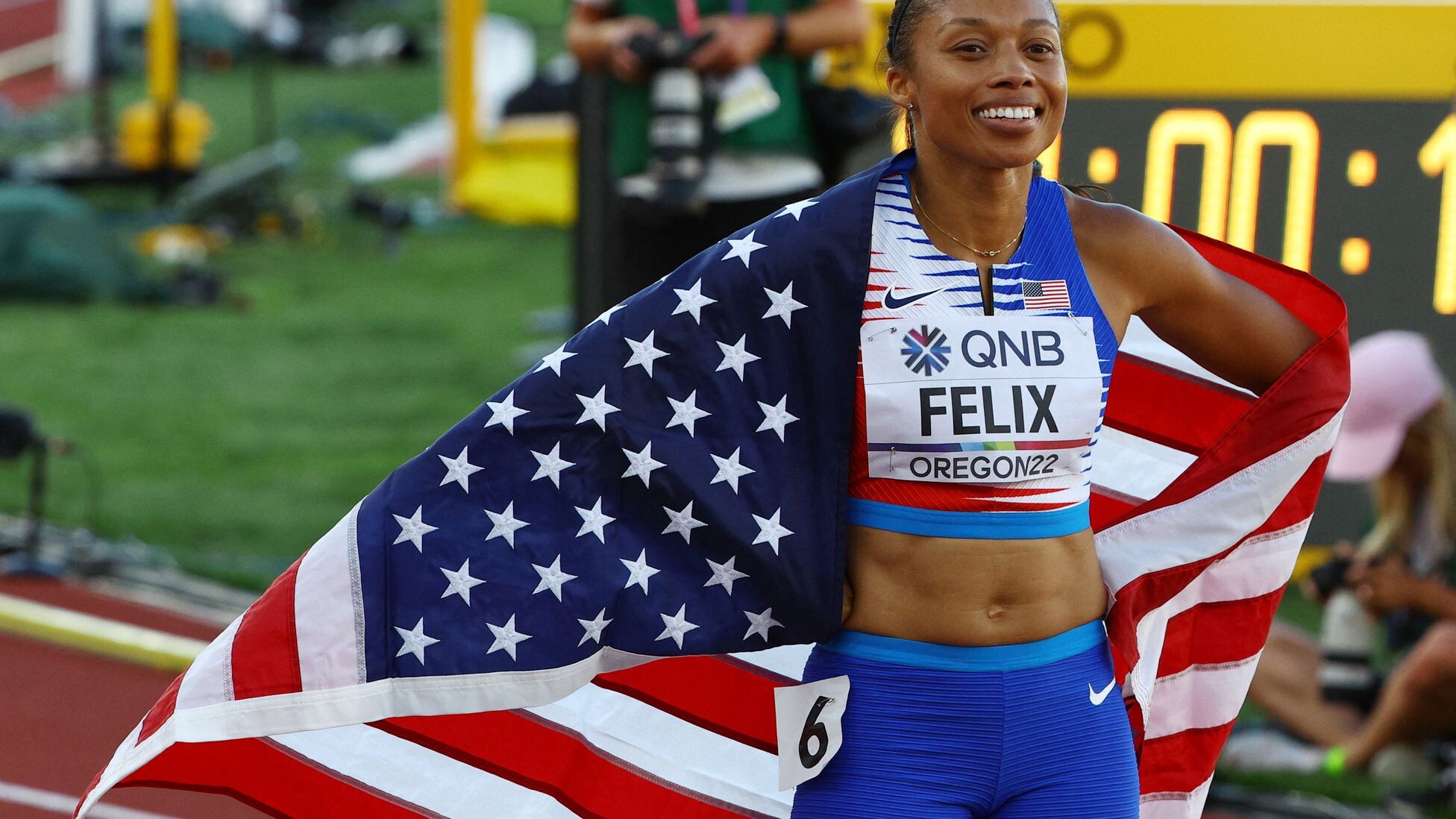
“There was a moment when I could hear all the cheers. I felt joy tonight,” she said. “I just looked around. I was just taking it in. It’s the last time.”
Despite losing, Felix’s teammates were gracious. The media didn’t ask any of them about their personal races, their personal stories, only Felix. The man with the fastest split of anybody in the race, Vernon Norwood, said, “This bronze medal feels like it’s a gold medal since it’s her last.” Teammate Elija Godwin, the second fastest split in the race, said, “It feels like we’re part of history to be with her. I really just want my picture with her.” Norwood and Godwin were the only two men to split under 45 seconds in the field.
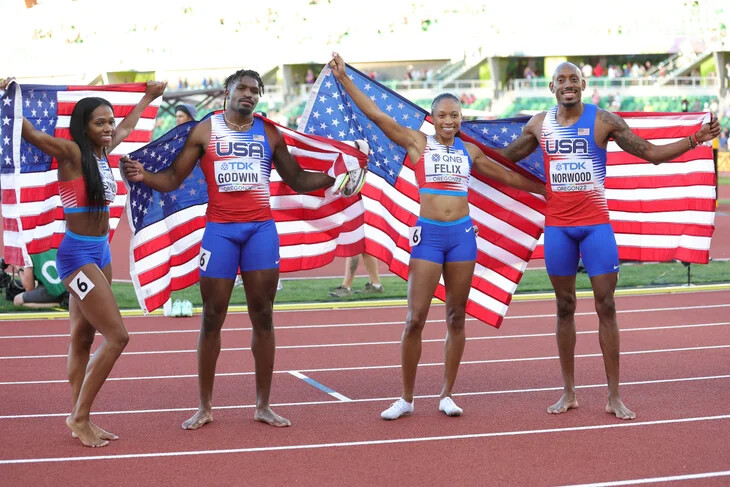
Everybody thought the Americans would win. They were the fastest team in the preliminary round earlier today and they traded out two of their athletes for others with faster PRs. They led or were in touch of the lead the entire race. They got to compete at a World Championships on home soil for the first time ever. But in the end they fumbled. It was as though it happened all at once: With 20 meters remaining, Team USA’s anchor leg Kennedy Simon visibly grimaced, gritted her teeth, and everybody knew what was going to happen. She tied up and it was like she was moving backward. Two teams got around her. The crowd collectively gasped, went silent for a few moments, then sat back down while the team from the Dominican Republic ran a victory lap.
Team USA’s bronze medal is Felix’s 19th medal at a World Championships, the most of any athlete in history. She’s now won a medal at eight separate World Championships, which is a record. (She used to share it with Ezekiel Kemboi of Kenya with seven.)
The Dominican Republic won the race in 3:09.82, the second fastest time ever. With a very fast anchor leg (48.95) from the Olympic medalist Femke Bol, the Netherlands finished second in 3:09.90, a national record. The U.S. finished third in 3:10.16.
Felix got the baton in first and was 50 meters off the front and everybody was on their feet cheering for her. Today was the closest Hayward Field has ever been to maximum capacity and the volume of the crowd felt historic. It was her final lap, and she was running strong. Then the daydream ended. Halfway through the lap, the Dominican Republic’s second leg, Marileidy Paulino, had reeled in Felix. She blew around her on the final straight, splitting 48.47, the fastest leg of any woman in the field. Paulino’s split would be the second fastest time in the world this year if it were run in an open event.
Felix still split 50.15. She said she was proud. Her daughter is too young to register what she witnessed, but Felix said if tonight could teach her something it’d be that “It’s about being a fighter,” she said. “That’s a spirit I hope she carries over, a confidence I hope she has.”
The other woman on Team USA is 14 years younger than Felix and will probably never forget what she was a part of. Simon is only 22 and this was her first major championship race. She’s still in college at the University of Texas, a world apart from where Felix is now. “This whole season was a gradual progression to me getting here,” she said. “For me to be here… I’m satisfied.”
It appeared like the Americans lost the race in the anchor leg. Earlier in the day Kennedy ran the preliminary round and split 50.64, the second fastest split of any woman in the race. She had roughly eight hours to rest before the gun fired a second time, but appeared tired in the final.
It’s hard to show up once. It’s harder to show up twice. It’s even harder, still, to show up like Allyson Felix has, time and time again.
by Matt Wisner
Login to leave a comment
World Athletics Championships Budapest23
Budapest is a true capital of sports, which is one of the reasons why the World Athletics Championships Budapest 2023 is in the right place here. Here are some of the most important world athletics events and venues where we have witnessed moments of sporting history. Throughout the 125-year history of Hungarian athletics, the country and Budapest have hosted numerous...
more...Chinese Su Bingtian will have season's debut at World Athletics Champs
A total of 53 Chinese athletes, including veterans Su Bingtian, Xie Zhenye and Gong Lijiao, will compete for more glory at the upcoming World Athletics Championships set to start on Friday in Eugene, Oregon in the U.S.
The first-ever Asian sprinter to break the 10-second barrier in the 100-meter track and field event, 33-year-old Su is the fastest Asian man with a personal best of 9.83 seconds. He will have his season's debut as the only Chinese to participate in the red hot men's 100m event at the World Championships, where he will face a line of superstar rivals.

China's Xie Zhenye will compete in the men's 200m. Meanwhile, Xie, Su, Wu Zhiqiang, Tang Xingqiang, Chen Guanfeng and Deng Zhijian are down to compete in the men's 4X100m. The Chinese relay team was upgraded to a historic bronze medal at last year's Tokyo Olympics after Team Great Britain were stripped of the silver over a doping violation.
Other highlights for Team China will include Gong Lijiao's attempt to win her third consecutive world championship title in women's shot put and women's race walks attended by defending champion Liu Hong and teammates Qieyang Shenjie, Ma Zhenxia and Wu Quanming.
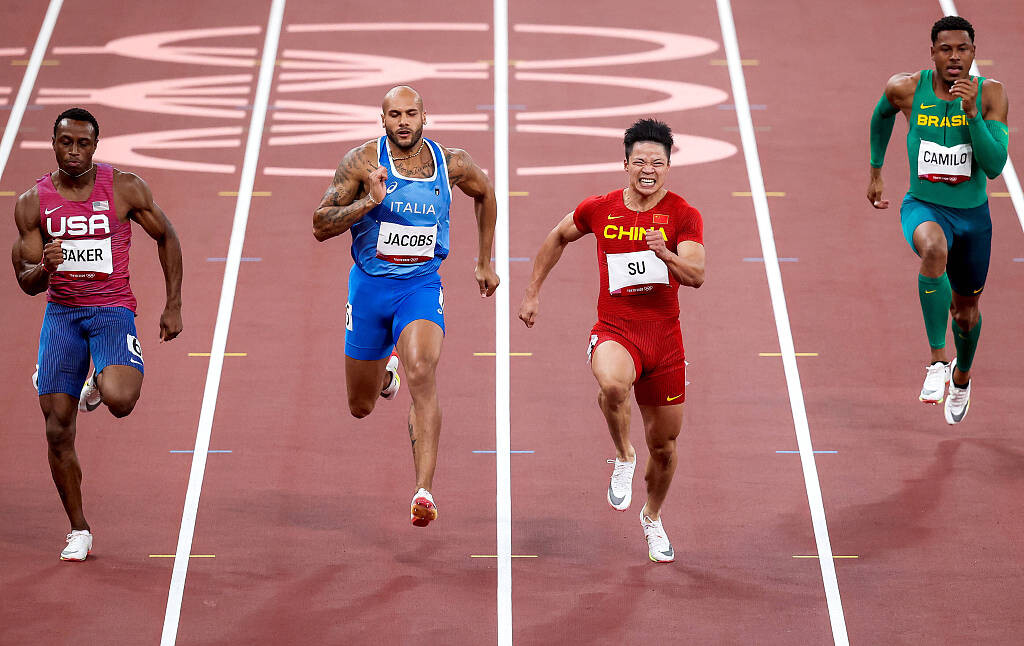
Olympic champions in women's javelin Liu Shiying and Lyu Huihui are also sure to attract attention.
However, event host the U.S. are almost sure to dominate, having won 170 gold medals since the first championship in 1983 – 110 more than next-best Kenya.
Team USA's 151-strong roster features nine defending champions and 20 medalists from last year's Tokyo Olympics and, for a 10th and final time, superstar Allyson Felix, aged 36.
Missing the event this year is Olympic and world 400 meters champion Bahamian Steven Gardiner, who will not defend his World Championship title due to UTE tendon inflammation.
In the United States for the first time, the 18th edition of the World Championships has seen a handful of late withdrawals, including Olympic women's marathon champion Kenyan Peres Jepchirchir, who will miss out with a right hip injury.
Olympic gold medalist Lamont Marcell Jacobs returns to the 100m big stage after muscle injuries ruled him out of several Diamond League meets.
Team USA have high hopes of making it three in a row after the disappointment at the Tokyo Olympics, where the Italian team took a shock gold.
Tokyo silver medalist Fred Kerley has been in fabulous form this season and could well be part of a home podium sweep alongside defending champion Christian Coleman and Trayvon Bromell.
Login to leave a comment
World Athletics Championships Budapest23
Budapest is a true capital of sports, which is one of the reasons why the World Athletics Championships Budapest 2023 is in the right place here. Here are some of the most important world athletics events and venues where we have witnessed moments of sporting history. Throughout the 125-year history of Hungarian athletics, the country and Budapest have hosted numerous...
more...USA names 151-strong team for World Championships in Oregon
A team of 151 athletes will represent the USA on home soil at the World Athletics Championships Oregon22 on July 15-24.
Multiple global champions and world record-holders feature in the squad as Eugene’s Hayward Field gets ready to welcome the world for the first-ever outdoor World Athletics Championships to be hosted in the USA.
World record-holder and Olympic champion Sydney McLaughlin will take on the former world record-holder and reigning world champion Dalilah Muhammad as they look to further cement the US women’s global dominance in the 400m hurdles final on July 22.
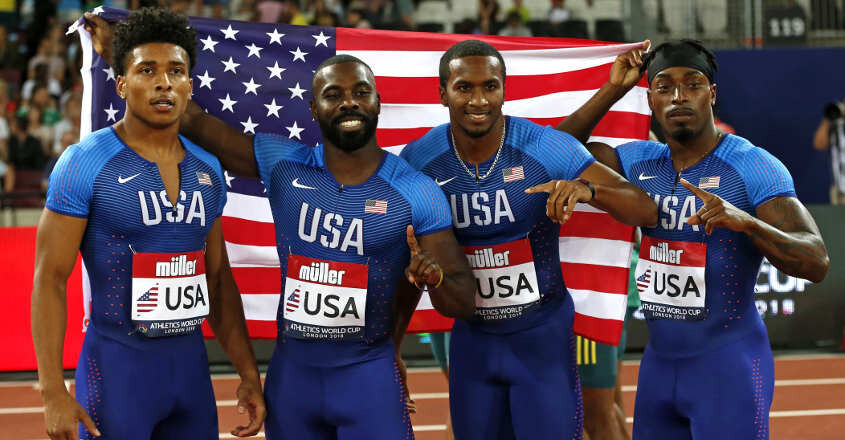
In the men’s shot put on July 17, world record-holder and Olympic champion Ryan Crouser will go after the one title that has so far eluded him – that of world champion – and will take on two-time world champion Joe Kovacs.
Such is the strength of the women’s 800m squad of Athing Mu, Ajee Wilson and Raevyn Rogers, as well as the men’s 200m team of Noah Lyles, Erriyon Knighton, Fred Kerley and Kenny Bednarek, that athletes will be aiming for USA medal sweeps.
Returning to defend the titles they won in Doha in 2019 are Nia Ali (women's 100m hurdles), Donavan Brazier (men's 800m), Christian Coleman (men's 100m), Grant Holloway (men's 110m hurdles), Kovacs (men's shot put), Lyles (men's 200m), Muhammad (women's 400m hurdles), DeAnna Price (women's hammer) and Christian Taylor (men's triple jump).

Making her 10th World Championships appearance will be Allyson Felix, who has 18 world medals, including 13 golds, to her name and will be in the mixed 4x400m pool.
“I couldn’t be prouder to lead this amazing team for this once-in-a-lifetime event,” said USATF CEO Max Siegel. “We have been given the unique opportunity to impact the track and field landscape in the US, and we’ve put our best team forward.”
USA team for Oregon
Women
100m: Aleia Hobbs, Melissa Jefferson, Twanisha Terry
200m: Tamara Clark, Jenna Prandini, Abby Steiner
400m: Talitha Diggs, Kendall Ellis, Lynna Irby
800m: Athing Mu, Raevyn Rogers, Ajee Wilson
1500m: Sinclaire Johnson, Cory McGee, Elle St. Pierre
5000m: Elise Cranny, Emily Infeld, Karissa Schweizer
10,000m: Alicia Monson, Natosha Rogers, Karissa Schweizer
Marathon: Emma Bates, Keira D’Amato, Sara Hall
3000m steeplechase: Emma Coburn, Courtney Frerichs, Courtney Wayment
100m hurdles: Nia Ali, Alia Armstrong, Keni Harrison, Alaysha Johnson
400m hurdles: Shamier Little, Sydney McLaughlin, Dalilah Muhammad, Britton Wilson
Heptathlon: Michelle Atherley, Anna Hall, Kendell Williams, Ashtin Zamzow-Mahler
High jump: Vashti Cunningham, Rachel Glenn, Rachel McCoy
Pole vault: Gabriela Leon, Sandi Morris, Katie Nageotte
Long jump: Quanesha Burks, Tiffany Flynn, Jasmine Moore
Triple jump: Tori Franklin, Jasmine Moore, Keturah Orji
Shot put: Adelaide Aquilla, Chase Ealey, Maggie Ewen, Jessica Woodard
Discus: Valarie Allman, Rachel Dincoff, Veronica Fraley, Laulauga Tausaga-Collins
Hammer: Brooke Andersen, Annette Echikunwoke, Janee Kassanavoid, DeAnna Price
Javelin: Ariana Ince, Maggie Malone, Kara Winger
20km race walk: Robyn Stevens, Miranda Melville
35km race walk: Stephanie Casey, Miranda Melville, Maria Michta-Coffey
4x100m: Celera Barnes, Tamari Davis, Gabby Thomas (plus athletes named in individual sprints)
4x400m: Wadeline Jonathas, Jaide Stepter, Kaylin Whitney (plus athletes named in individual sprints)
Men
100m: Marvin Bracy, Trayvon Bromell, Christian Coleman, Fred Kerley
200m: Kenny Bednarek, Fred Kerley, Erriyon Knighton, Noah Lyles
400m: Champion Allison, Michael Cherry, Michael Norman, Randolph Ross
800m: Donavan Brazier, Bryce Hoppel, Jonah Koech, Brandon Miller
1500m: Johnny Gregorek, Cooper Teare, Josh Thompson
5000m: Grant Fisher, Woody Kincaid, Abdihamid Nur
10,000m: Grant Fisher, Joe Klecker, Sean McGorty
Marathon: Elkanah Kibet, Colin Mickow, Galen Rupp
3000m steeplechase: Hillary Bor, Evan Jager, Benard Keter
110m hurdles: Devon Allen, Trey Cunningham, Grant Holloway, Daniel Roberts
400m hurdles: Trevor Bassitt, Rai Benjamin, Khallifah Rosser
Decathlon: Steven Bastien, Kyle Garland, Zach ZiemekHigh jump: Darius Carbin, JuVaughn Harrison, Shelby McEwen
Pole vault: Andrew Irwin, Chris Nilsen, Luke WinderLong jump: Marquis Dendy, Steffin McCarter, Will Williams
Triple jump: Chris Benard, Will Claye, Donald Scott, Christian Taylor
Shot put: Josh Awotunde, Ryan Crouser, Joe Kovacs, Tripp Piperi Discus: Andrew Evans, Sam Mattis, Brian Williams
Hammer: Daniel Haugh, Rudy Winkler, Alex Young
Javelin: Ethan Dabbs, Tim Glover, Curtis Thompson
20km race walk: Nick Christie, Dan Nehnevaj
35km race walk: Nick Christie
4x100m: Kyree King, Josephus Lyles, Elijah Hall-Thompson (plus athletes named in individual sprints)
4x400m: Bryce Deadmon, Vernon Norwood, Elija Godwin (plus athletes named in individual sprints)
Mixed
4x400m: Allyson Felix, Kennedy Simon, Ismail Turner, Noah Williams (plus athletes named in individual sprints).
by World Athletics
Login to leave a comment
World Athletics Championships Budapest23
Budapest is a true capital of sports, which is one of the reasons why the World Athletics Championships Budapest 2023 is in the right place here. Here are some of the most important world athletics events and venues where we have witnessed moments of sporting history. Throughout the 125-year history of Hungarian athletics, the country and Budapest have hosted numerous...
more...USATF 2022 Championships finals results through June 25
There has already been a lot of a action during the 2022 USATF Championships in Eugene Oregon. Sydney McLaughlin set a new world record in the 400m hurdles (Second photo). Michael Norman won the 400m (first photo) and Fred Kerley won the 100m (third photo). Photos by Jivko
Women’s 100m
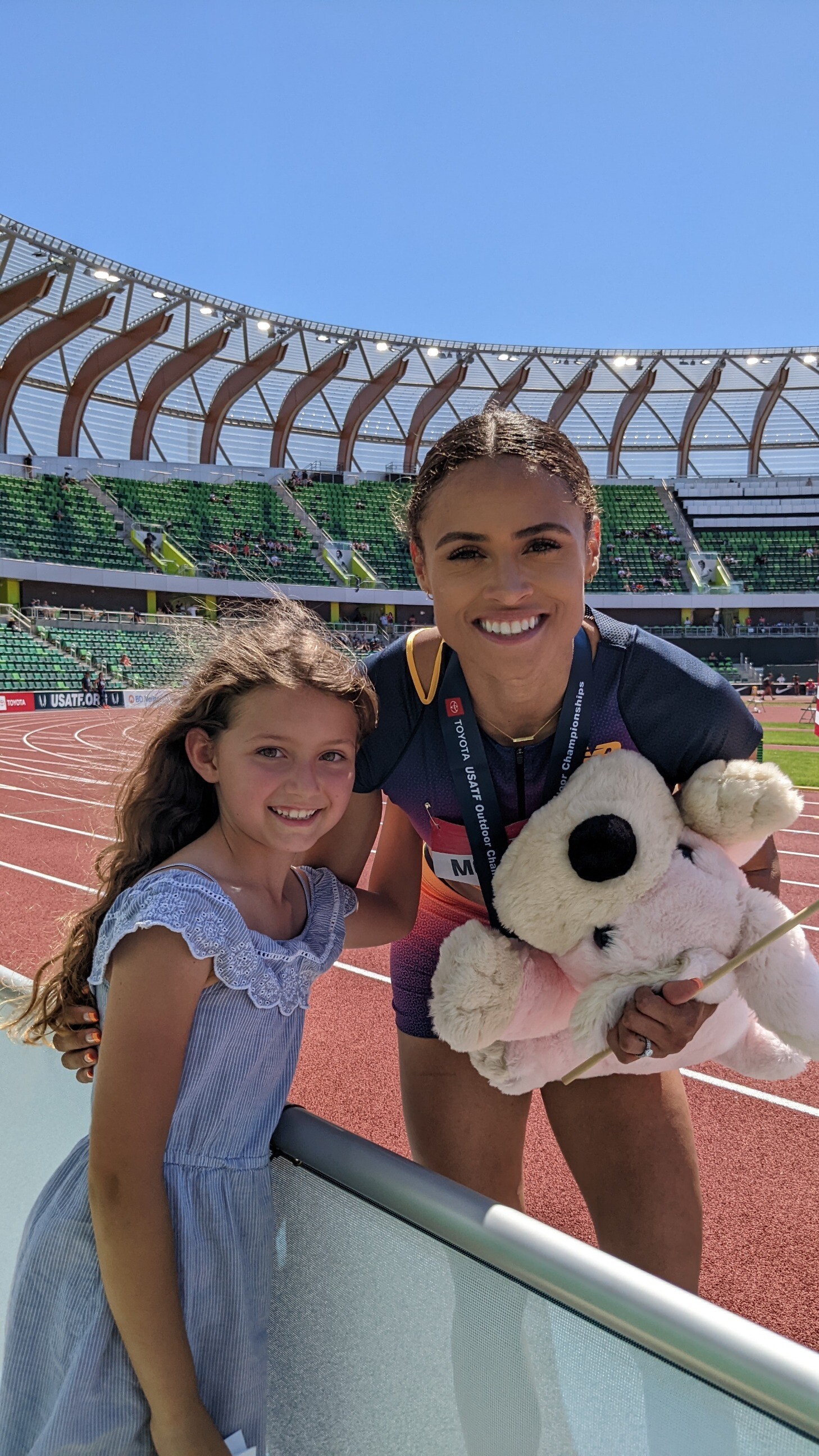
1. Melissa Jefferson — 10.69 2. Aleia Hobbs — 10.72 3. Twanisha Terry — 10.744. Tamari Davis — 10.785. Tamara Clark — 10.826. Celera Barnes — 10.86
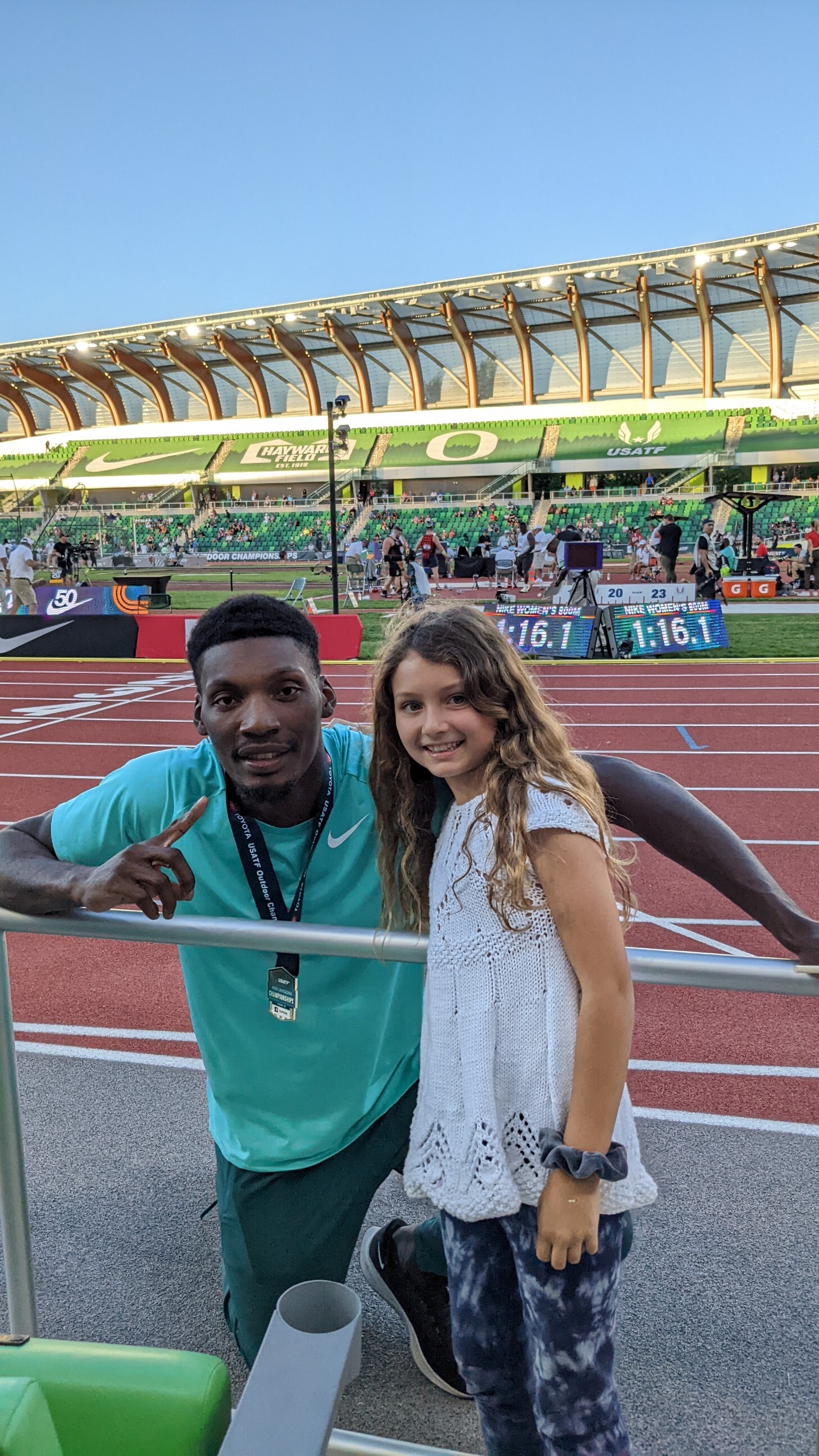
Women’s 400m
1. Talitha Diggs — 50.22 2. Kendall Ellis — 50.35 3. Lynna Irby — 50.674. Wadeline Jonathas — 50.845. Kennedy Simon — 50.906. Allyson Felix — 51.307. Jaide Stepter — 51.308. Kaylin Whitney — 51.31
Women’s 1500m
1. Sinclaire Johnson — 4:03.29 2. Cory McGee — 4:04.52 3. Elle St. Pierre — 4:05.144. Karissa Schweizer — 4:05.405. Heather MacLean — 4:06.40
Women’s 10,000m (from May 27)
1. Karissa Schweizer — 30:49.56 2. Alicia Monson — 30:51.09 3. Natosha Rogers — 31:29.804. Emily Infeld — 31:30.045. Weini Kelati — 31:39.90
Women’s 100m Hurdles
1. Keni Harrison — 12.34 2. Alaysha Johnson — 12.35 3. Alia Armstrong — 12.474. Tonea Marshall — 12.555. Tia Jones — 12.59DNS. Nia Ali (has bye onto world team)
Women’s 400m Hurdles
1. Sydney McLaughlin — 51.41 WR 2. Britton Wilson — 53.08 3. Shamier Little — 53.924. Anna Cockrell — 53.985. Shannon Meisberger — 55.39
Men’s 100m
1. Fred Kerley — 9.77 2. Marvin Bracy-Williams — 9.85 3. Trayvon Bromell — 9.884. Micah Williams — 9.905. Elijah Hall-Thompson — 9.906. Kyree King — 9.96DNS. Christian Coleman (has bye onto world team)
Men’s 400m
1. Michael Norman — 43.56 2. Champion Allison — 43.70 3. Randolph Ross — 44.174. Elija Godwin — 44.345. Vernon Norwood — 44.356. Bryce Deadmon — 44.547. Noah Williams — 45.048. Ismail Turner — 45.56
Men’s 1500m
1. Cooper Teare — 3:45.86 2. Jonathan Davis — 3:46.01 (doesn’t have standard)3. Josh Thompson — 3:46.07 (doesn’t have standard)4. Eric Holt — 3:46.15 (doesn’t have standard)5. Reed Brown — 3:46.28 (doesn’t have standard)6. Johnny Gregorek — 3:46.36 (has standard)11. Yared Nuguse — 3:47.46 (has standard)
Men’s 10,000m (from May 27)
1. Joe Klecker — 28:28.71 2. Grant Fisher — 28:28.81 3. Sean McGorty — 28:29.574. Dillon Maggard — 28:30.755. Shadrack Kipchirchir — 28:30.79
Men’s 3000m Steeplechase
1. Hillary Bor — 8:15.76 2. Evan Jager — 8:17.29 3. Benard Keter — 8:19.164. Duncan Hamilton — 8:20.235. Anthony Rotich — 8:23.15
Login to leave a comment
USATF Outdoor Championships
With an eye toward continuing the historic athletic success of 2022, USATF is pleased to announce competitive opportunities for its athletes to secure qualifying marks and prize money, including a new Grand Prix series, as they prepare for the 2023 World Athletics Championships in Budapest, Hungary.As announced a few months ago, the 2023 Indoor Championships in Nanjing, China have been...
more...Allyson Felix’s shoe brand Saysh to offer “intentionally sexist” return policy for pregnant women
Days after Allyson Felix, the most decorated woman in track and field history, announced 2022 would be her last season of competitive running, she also implemented an industry-leading return policy for her shoe company, Saysh. The policy allows women to return shoes, no questions asked, should their foot size change during pregnancy (which commonly happens). If they need a new pair of shoes, new ones will be sent free of charge, in the proper size.
“A huge turning point in my life was becoming a mother—it opened my eyes to so much,” Felix told Footwear News this week. “As a runner, I have to pay attention to every little change in my body, and I went through a lot of change during pregnancy. I didn’t even realize that my feet could grow that much. I was tired of begging brands to meet me where I was, as both an athlete and a mother, and I was tired of sacrificing comfort and style. So I decided to make my own rules,” she says.
Advocating for all women, but especially athletes
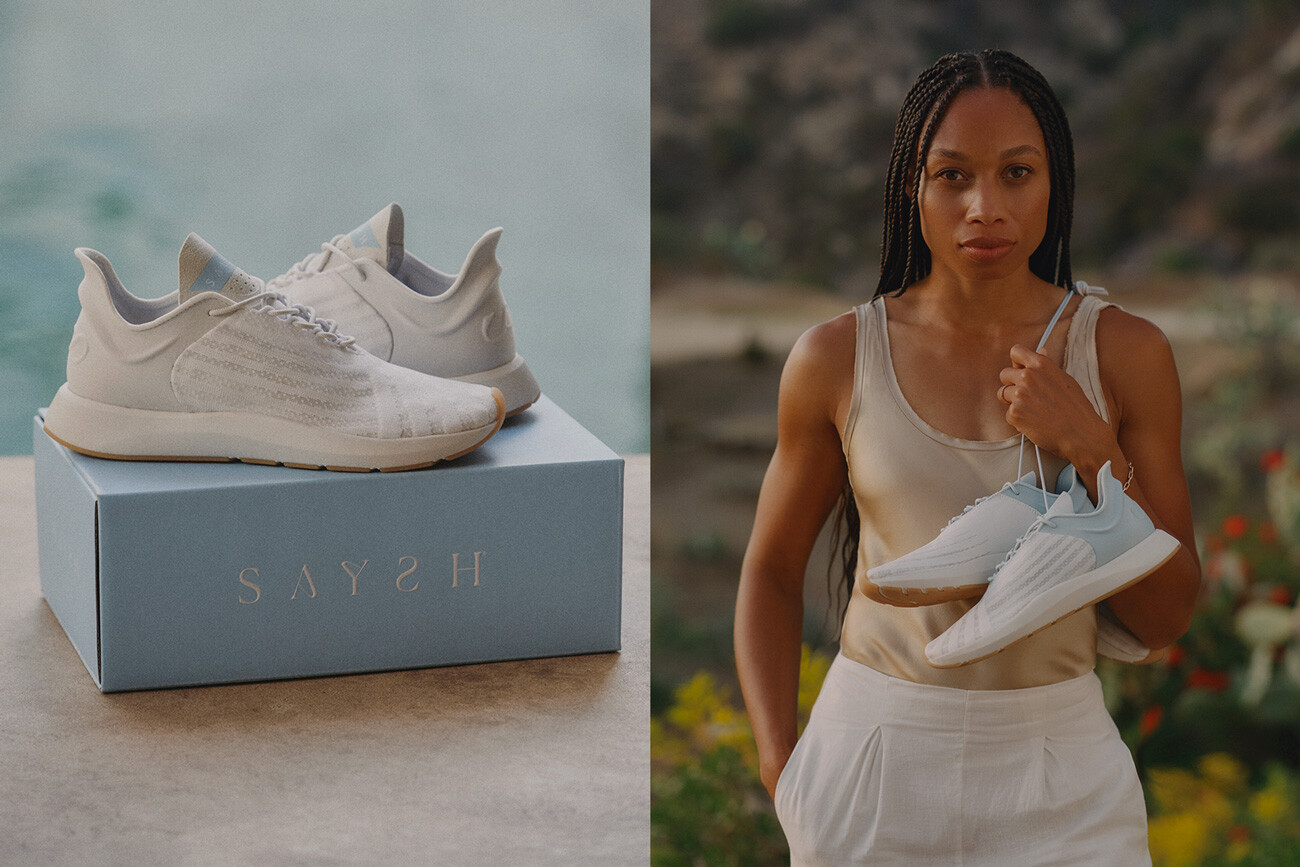
Felix began actively advocating for pregnant women and athletes in 2019, when she spoke before the U.S. House of Representatives about the disparity in maternal mortality (which is significantly higher among Black women). Felix had serious complications while giving birth to Camryn, her daughter, in 2018, which moved her to outline the medical risks disproportionally experienced by African-American women.
Beyond advocating for better medical treatment for women, she also helped cause a pregnancy-policy reform across the sport of track and field when she spoke out against her former sponsor, Nike, in 2019. Felix said she felt pressure to come back to competing as soon as possible after giving birth, even though she had spent time in the hospital with preeclampsia (often characterized by high maternal blood pressure), and was not yet ready.
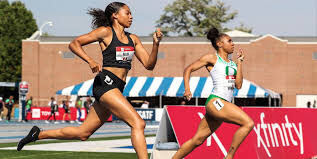
Make your own shoes
Shortly after speaking out against Nike and their lack of support throughout her pregnancy, Felix signed with clothing company Athleta. A few months later, she launched her own shoe company, Saysh.
Saysh is a company that aims to put women front and center, Felix said in a Ted Talk this week, “I feared that I would be forced to choose between motherhood and being a competitive athlete [when sponsored by Nike]. Getting pregnant in track and field has been called ‘this kiss of death.'” She continued to say that her mission is to help people to not “have to choose between parenting and doing the work that they love.”
The Saysh One, the first shoe Felix has brought to market, is $150 USD and comes in three colors.
by Madeleine Kelly
Login to leave a comment
American olympic Allyson Felix to retire from track after this season
Seven-time Olympic gold medalist Allyson Felix said Wednesday she will run one final track season, months after competing in her fifth Games.
The most decorated American track and field Olympian picked up bronze in the 400 meters and gold in the 4 by 400 relay in Tokyo last year, having already confirmed that it would be her final Games.

In an Instagram post Wednesday, she said she would say goodbye to the sport "with one last run."
"This season isn't about the time on the clock, it's simply about joy. If you see me on the track this year I hope to share a moment, a memory and my appreciation with you," said Felix, 36, who is expected to run in the Penn Relays later this month.
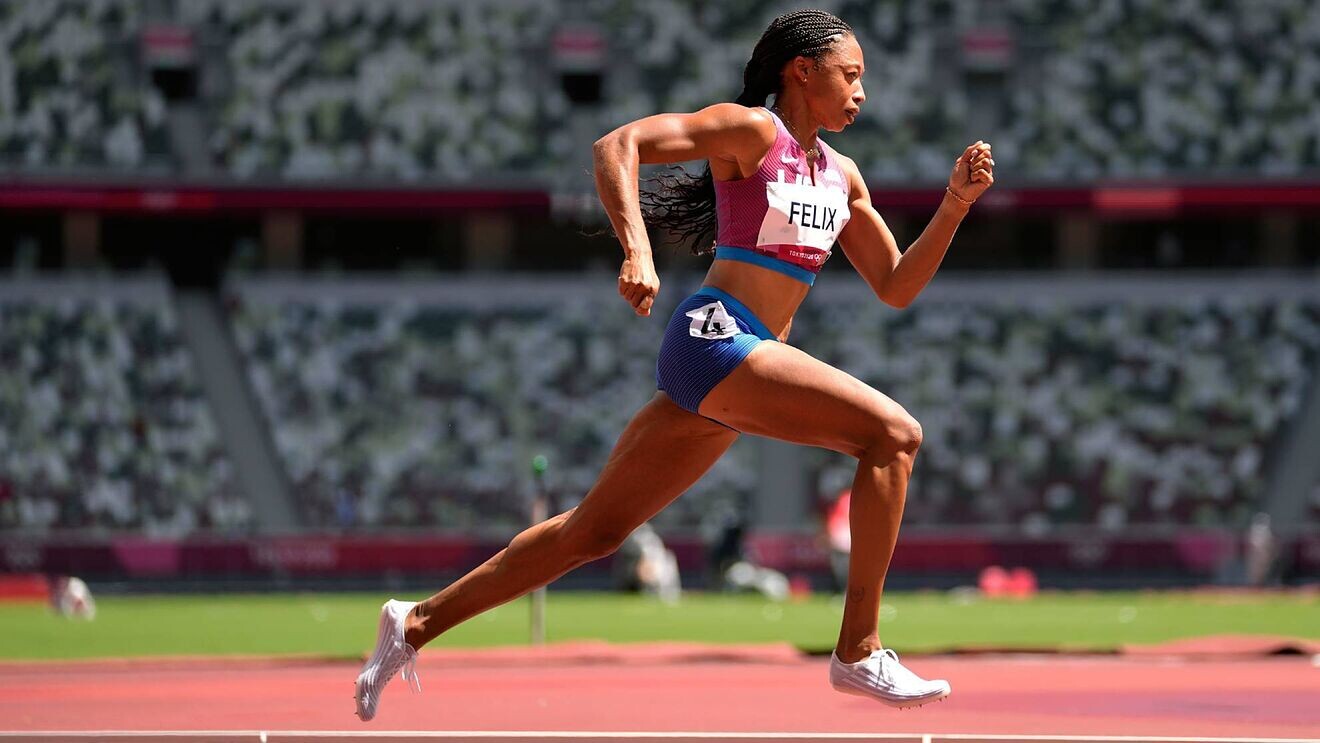
The 13-time world champion became an advocate for working mothers after giving birth to her daughter, Camryn, via an emergency C-section in 2018. In an opinion piece for The New York Times, she said she faced pay cuts from sponsors including Nike after having her child and competed in Tokyo wearing shoes from her own Saysh line.
"This season I'm running for women," Felix said. "I'm running for a better future for my daughter. I'm running for you."
Olympic sailor Eya Guezguez of Tunisia has died in a training incident, the International Olympic Committee announced on Monday. She was 17.
Guezguez was training with her twin sister Sarra alongside their national team on Sunday when their boat capsized because of strong winds. Eya died while Sarra survived.
Together, they competed at the Tokyo Olympics last year in 49er FX and finished 21st.
Thomas Bach, president of the IOC, said he was shocked by the news.
"She was an inspiring talent and role model for her athletes' generation," Bach said.
"Eya Guezguez's participation at Tokyo 2020 alongside her twin sister Sarra will continue to motivate girls everywhere. Our thoughts are with her family, friends and the Olympic community in Tunisia."
Login to leave a comment
The craziest active streaks in running
On Jan. 29, New Zealand’s Nick Willis ran another sub-4 minute mile at the NYC Millrose Games for the 20th consecutive year. This achievement is something only a few runners have come close to, which has sparked us to find the craziest active running streaks.
Nick Willis – 20 years of sub-4 minute miles
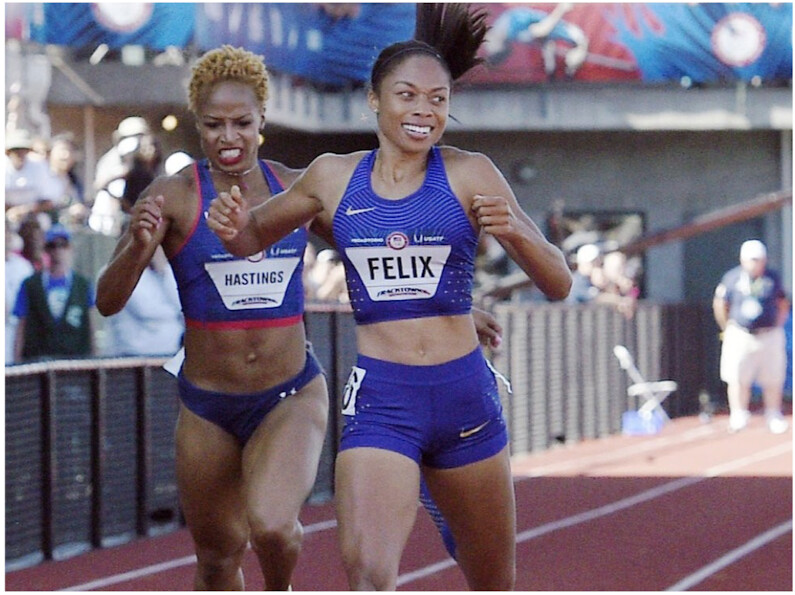
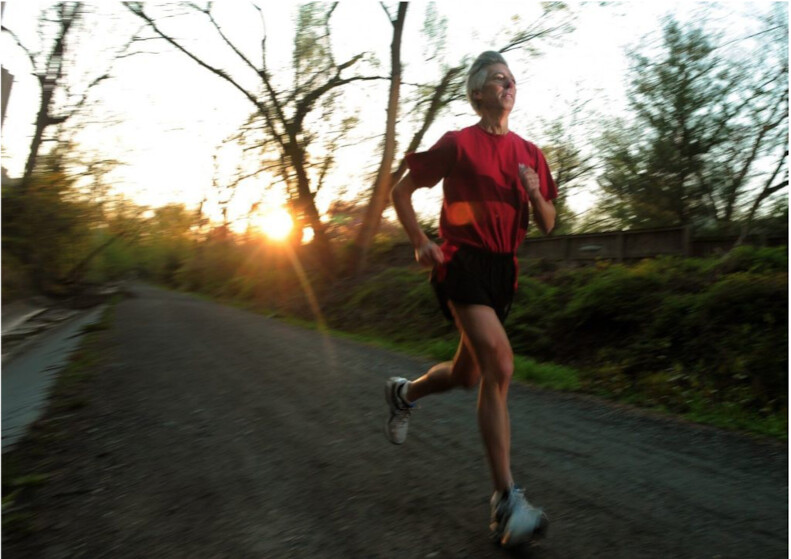
Willis first ran sub-4 during his undergrad at the University of Michigan in 2003 (3:58.15). At last weekend’s Millrose Games, Willis broke four minutes for the 63rd time in his career (3:59.71), which marked the 20th consecutive year he has run sub-4 miles. Willis is New Zealand’s only two-time Olympic medallist in the 1,500 metres, winning a silver medal in Beijing and bronze in Rio. In 2020, Willis passed his countryman, Sir John Walker, who previously held the consecutive sub-4 mile record of 18 years.
Simon Laporte – 46 years of running every day
At 46 years, the Notre-Dame des Prairies, Que. runner holds the longest active run streak in Canada. Laporte began his streak on Nov. 27, 1975, and hasn’t missed a day since. The 70-year-old run streaker has no plans to stop anytime soon, and he is planning for his streak to reach 50 in 2025. The longest active streak in the world is held by Jon Sutherland of Utah. Sutherland’s run streak of 52.7 years recently passed the legendary record set by Ron Hill (52.1) last year.
Streak Runners International (SRI) says for runs to qualify as a streak, they must cover at least one mile (1.61 kilometres) each day. The run may occur on the road, track, trails, or treadmill, but a minimum of one mile must be completed.
Lois Bastien – 41.8 years of running every day
Bastien holds the longest-standing women’s run streak record, at 42 years. She is now 79 and still runs every day in her home state of Florida.
Ben Beach – 54 consecutive Boston Marathons
Although Beach does not have the record for most Boston Marathon finishes (58), the 72-year-old marathoner does have the record for most consecutive Boston Marathons (54). Beach ran his first Boston in 1967 when he was 18. This year, Beach completed his 54th consecutive Boston Marathon, finishing in 5:47:27.
Allyson Felix – Five straight Olympic Games with a medal in track and field
U.S. sprinter Allyson Felix is one of the greatest female Olympians ever. She has not only represented her country at five straight Olympic Games, but she has also medalled at all of them (seven gold, three silver and one bronze) – a feat that no other female athlete has accomplished in track and field. Although Felix intended that Tokyo would be her last Olympics, her streak will remain active until Paris 2024, where Jamaican sprinter Shelly-Ann Fraser-Pryce will get the chance to equal her at five consecutive Olympics with a medal.
Karl Meltzer – a 20-year streak of winning a 100-mile race
Meltzer, 54, has been on the elite ultramarathon scene for more than 20 years. With his most recent win this year at the Beast of the East 100-miler, he has won a 100-miler for 20 consecutive years, bringing his career total to 45 wins over 100 miles. This is an unprecedented number, and the only person who can top it (for now, at least) is Meltzer himself.
by Running Magazine
Login to leave a comment
Olympic champs Elaine Thompson-Herah of Jamaica and Karsten Warholm of Norway have been named the World Athletes of the Year at the World Athletics Awards 2021
Elaine Thompson-Herah of Jamaica and Karsten Warholm of Norway have been named the World Athletes of the Year at the World Athletics Awards 2021, a ceremony held virtually on Wednesday (1).
Thompson-Herah produced one of the finest sprint seasons in history this year, retaining her Olympic 100m and 200m titles in Tokyo and adding a third gold medal in the 4x100m relay. On top of her Olympic triple, she also clocked world-leading times of 10.54 and 21.53 over 100m and 200m respectively, moving to second on the world all-time lists and coming within touching distance of the long-standing world records.
“I just take it year by year,” said Thompson-Herah. “I went very close to the world record so you know, anything is possible. No spikes hanging up any time soon!
“The World Championships in Oregon is most definitely my next big target,” she added. “It is close to home, I hope friends and family can come out and watch. I hope I get some crowd as well. That couldn’t happen in Tokyo but hopefully in Eugene I can get my friends and family to come and cheer me on.”

Warholm uncorked one of the most remarkable performances in athletics history when he stormed to gold in the 400m hurdles at the Tokyo Olympics. Having already broken the world record with 46.70 in Oslo in the lead-up to the Games, Warholm exceeded all expectations in the Japanese capital to claim gold in a stunning world record of 45.94. In a race of incredible depth, the top three athletes finished inside the pre-2021 world record.
“I’m so happy for this,” said Warholm. “First when I saw the time (in Tokyo), I was like, ‘This must be a mistake!’ Because I didn’t see that one coming. And I didn’t see the victory coming before crossing the finish line.
“It was a very intense race, I knew the American and the Brazilian and all the other guys were really chasing me. I always go out hard and I never know what is going on behind me. I was just fighting all the way to the finish line. When I realised 45.94 was the reality, I was thinking: ‘This is not too bad. I’ll take it!’"
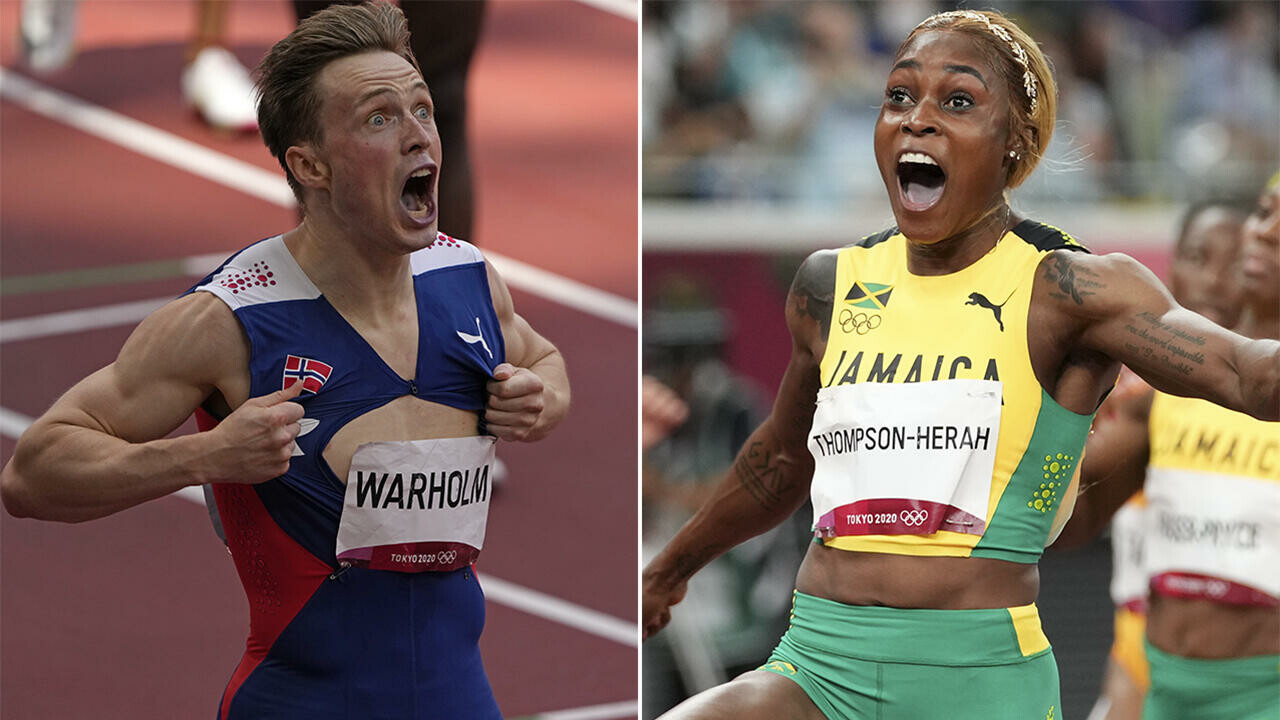
World Athletics President Sebastian Coe congratulated all of tonight’s winners and finalists on their extraordinary achievements this year.
"We have this year celebrated some jaw-dropping performances in Tokyo, at the World Athletics U20 Championships in Nairobi and through our one-day meeting circuits – the Wanda Diamond League and the Continental Tour. So we’re delighted to recognise some of our stars at tonight’s awards.
"As a sport, we are in an incredibly strong position. 2021 has been an excellent year. We cemented our position as the number 1 Olympic sport coming out of Tokyo, we have the most God given talented athletes on the planet and our sport is the most accessible of all sports. Thank you to all our athletes around the world. I am looking forward to watching what you can all do in 2022."
The other award winners were:
Female Rising Star
Athing Mu
The US teenager was undefeated at 800m all year, winning Olympic gold at the distance following a long but successful collegiate season. She broke the senior US 800m record with her triumph in Tokyo and then improved it to 1:55.04 just a few weeks later. She also excelled at 400m, clocking a North American U20 record of 49.57 for the distance.
“It means the world to know that my support goes beyond friends and families and extends worldwide,” said Mu. “This award shows all young girls that your dreams can, indeed, come true."
Male Rising Star
Erriyon Knighton
Throughout 2021 the 17-year-old took down several marks that had belonged to sprint legend Usain Bolt. Knighton first set world U18 bests of 20.11 and 20.04 over 200m, but his rapid rise continued and he broke Bolt’s world U20 record for the distance with 19.88 and 19.84. He went on to finish fourth in the Olympic final with 19.93.
“I’m really thankful for this award,” said Knighton. “One of my most memorable moments of this year was making it to the Olympic final in Tokyo and finishing fourth at the age of 17.”
Member Federations Award
Federacion Costarricense de Atletismo (Costa Rica)
In recognition for their outstanding training, competition and development programme roll-out over the past 12 months, for their consultative work on the World Athletics Kids’ Athletics programme, and for successfully staging a host of international events over the past year.
Inspiration Award
Mutaz Barshim and Gianmarco Tamberi
The shared high jump victory between Qatar’s Mutaz Barshim and Italy’s Gianmarco Tamberi became one of the biggest talking points of the Olympic Games – not only for everything it represented in their own individual careers, having both battled serious injuries since the last Games, but mainly for the act of respect and sportsmanship between two friends.
“It is just crazy if I think about this story,” said Tamberi. “Thank you very much for this trophy.
“I now call Mutaz like five times a week because I need to speak with him. I feel that now we are not just friends, we are really like blood brothers.”
Barshim added: “I hope to inspire more people to love our sport and maybe share a gold one day!”
President’s Award
Peter Diamond, Executive Vice President of NBC Olympic programming
“Athletics owes Peter a massive debt of gratitude,” said World Athletics President Sebastian Coe. “Peter has worked alongside us for effectively 40 years and has been a constant source of great advice and wise counsel, and occasional humour that has softened the edges of any particular situation. And he has made athletics a lot better.”
Coaching Achievement Award
Bobby Kersee
The US coach has guided the careers of many legendary athletes over the years, but this year two of his charges made history. Allyson Felix became the most decorated female track and field Olympian in history after winning her 10th and 11th Olympic gold medals in Tokyo, while training partner Sydney McLaughlin broke two world records in the 400m hurdles and claimed Olympic gold in the discipline.
Woman of the Year Award
Anju Bobby George
The former international long jump star from India is still actively involved in the sport. In 2016 she opened a training academy for young girls, which has already helped to produce a world U20 medallist. A constant voice for gender equality in her role as Senior Vice President of the Indian Athletics Federation, Bobby George also mentors schoolgirls for future leadership positions within the sport.
Jean-Pierre Durand World Athletics Photograph of the Year
Ryan Pierse’s photograph of the women’s high jump qualifying at the Tokyo Olympic Games
This year’s award is dedicated to the memory of Jean-Pierre Durand, one of the sport’s most prolific photographers and photo chief for a number of World Athletics Series events, who died in October.
“This winning image was taken on one of the morning sessions in Tokyo and it was a hot one,” said Pierse, who is from Australia. “I wanted to illustrate the heat and how it was affecting the athletes. It is a picture that I worked on for a while, and it all came together. I am really happy with it.
“I think it’s incredibly fitting that this award is named in memory of Jean-Pierre Durand,” added Pierse. “I had the pleasure of working alongside him, most recently at the Tokyo Olympics.”
by World Athletics
Login to leave a comment
Allyson Felix launches her own shoe company
Two years removed from a feud with Nike and just days after qualifying for her fifth trip to the Olympics, track star Allyson Felix is adding the title of "entrepreneur" to her list of accomplishments.
Allyson Felix announced on Instagram on Wednesday that she is launching her own shoe brand called Saysh, a brand that she says "represents hope, acceptance, and the power to create change."
"When you see me run, know that I'm not running for medals. I'm running for change. I'm running for greater equity for each of us. I'm running for women. More than anything, I'm running toward a future where no woman or girl is ever told to know her place," Felix wrote on Instagram.

Felix, whose six Olympic gold medals are the most of any female track and field athlete, had a public fallout with Nike, her longtime sponsor, back in 2019. She wrote in an op-ed in the New York Times that she wanted to start a family in 2018 knowing that it could jeopardize her deal with Nike as she was trying to renew a deal that had expired in December 2017. Felix wrote that she felt like she needed to return to form as quickly as possible, even after an emergency C-section in November 2018 to deliver her daughter, Camryn. Felix said Nike offered to pay her 70 percent less than what she had been earning before she was pregnant.
Felix did not re-sign with Nike after negotiations on a deal continued to go sour. Nike changed its maternity policies in 2019 as a result of public backlash and a congressional inquiry, according to the Washington Post. Felix later signed a deal with Gap's Athleta brand, according to CNBC.
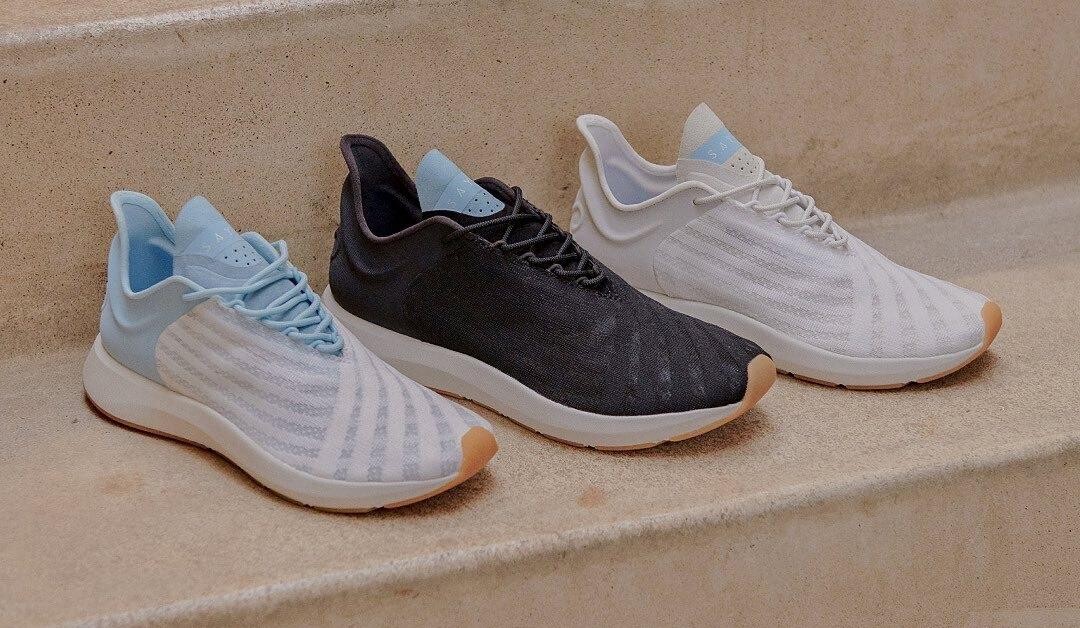
Since the split with Nike, Felix has become an activist for maternal protection for female athletes and for inequities for Black mothers in the health care system.
"No woman should have to choose between being a professional and being a Mother. Now, because of that fight, sponsorship contracts look different for a lot of athletes," Felix wrote on Instagram.
She continued: "During my pregnancy, I had complications. And I realized I needed to use my voice to bring awareness to another injustice: a racial injustice in our healthcase system. I spoke to the United States Congress about my experience — and I continue to use my words for change."
Saysh is a shoe brand designed "for and by women," the website reads. The Saysh One sneaker is for sale at $150.
by Edward Sutelan
Login to leave a comment
Sha'Carri Richardson to make track return at Prefontaine Classic
Sha'Carri Richardson will make her return to competitive athletics action on Saturday (August 21) at the Prefontaine Classic Diamond League meeting in Eugene, Oregon, USA.
The American is back after serving a one-month suspension handed to her when she tested positive for a cannabinoid at the U.S. Olympic Trials in June, where she had originally won the women's 100m race.
Her return will pit the world's third-fastest woman this year against the three Olympic medalists from Tokyo – Elaine Thompson-Herah, Shelly-Ann Fraser-Pryce, and Shericka Jackson, all from Jamaica.
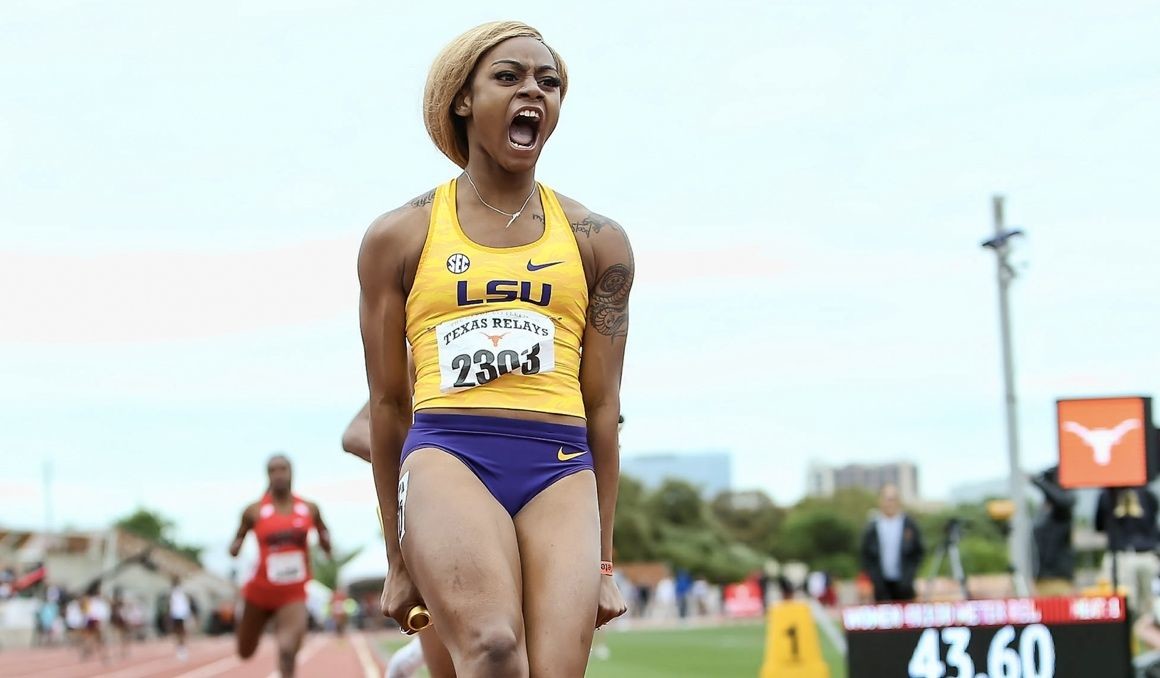
On July 1, the United States Anti-Doping Agency (USADA) announced that Richardson had accepted being suspended for "for an anti-doping rule violation for testing positive for a substance of abuse", having previously received a provisional ban on 28 June.
While competing at the Trials, Richardson provided a sample on 19 June that returned a positive test for a chemical found in marijuana, THC.
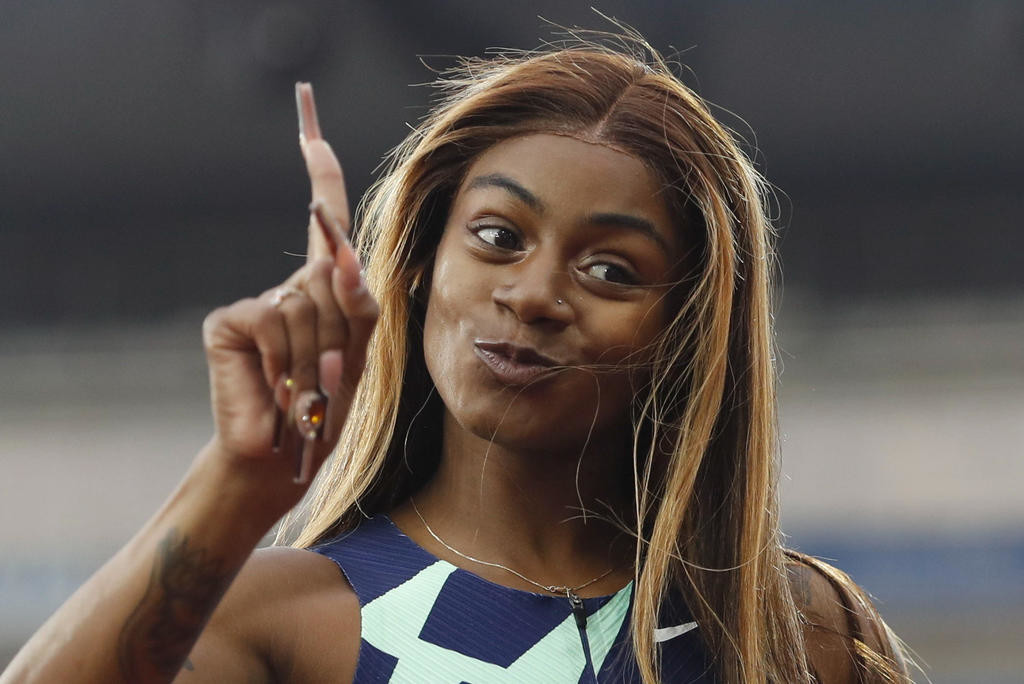
THC is a banned substance in-competition, although it is not prohibited out of competition, under World Anti-Doping Agency (WADA) rules which classify it as a substance of abuse.
Although Richardson consumed the drug out of competition, she returned an in-competition positive and was therefore sanctioned under USADA's own regulations, which state: "If an athlete tests positive for a substance of abuse during an in-competition test, but the athlete can establish that they used the substance out-of-competition and that their use of the substance was unrelated to sport performance, then the athlete’s period of ineligibility will be reduced to three months with no need to further analyse the degree of fault."
USADA added in handing out a one-month suspension: "Richardson’s period of ineligibility was reduced to one month because her use of cannabis occurred out of competition and was unrelated to sport performance, and because she successfully completed a counselling program regarding her use of cannabis."
The sanction meant her qualifying results at the trials were expunged.
Her suspension ended before the start of the athletics program at Tokyo 2020, but as USA Track & Field (USATF) selects its Olympic team based solely on results at Trials, Richardson was not considered for selection in either the 100m or 4x100m relay.
In Eugene, which was also the site of the U.S. Trials where Richardson had run 10.86 in the final, she and the three Tokyo 2020 medallists headline a world-class field in the women's 100m.
That start-list includes Tokyo relay silver medallists Teahna Daniels and Javianne Oliver of the USA and two other 100m finalists Switzerland's Mujinga Kambundji (6th) and Marie-Josée Ta Lou (4th) of Côte d'Ivoire. Briana Williams, the fourth member of the Jamaican 4x100m gold-winning relay team, completes the lineup.
Richardson ran a 10.72 at the Miramar Invitational in Florida in April, a time that made the 21-year-old the sixth-fastest woman ever over 100m and, at the time the world leader in 2021.
Since then this year, only two other women have gone faster – Richardson is surpassed by Fraser-Pryce (10.63 in June) and Thompson-Herah's Olympic record 10.61.
The clash between the young American talent and the Olympic medallists is tantalising after they were unable to race each other in Tokyo.
Indeed, the five fastest women this year will all be competing in the race – Jackson and Ta Lou are fourth and fifth respectively.
Richardson's last international 100m race was at a rainy Gateshead Diamond League in England in May, when she finished second in 11.44 seconds into a very strong headwind (-3.1 m/s). Earlier that month, the Texan sprinter also overcame a headwind to clock a rapid 10.77 (-1.2 m/s) at the USATF Golden Games.
The American is also down to race the women's 200m against the likes of Kambundji, Ta Lou, Olympic bronze medallist Gabrielle Thomas, relay silver medallist Jenna Prandini, world champion Dina Asher-Smith, and American track legend Allyson Felix.
Login to leave a comment
Prefontaine Classic
The Pre Classic, part of the Diamond League series of international meets featuring Olympic-level athletes, is scheduled to be held at the new Hayward Field in Eugene. The Prefontaine Classicis the longest-running outdoor invitational track & field meet in America and is part of the elite Wanda Diamond League of meets held worldwide annually. The Pre Classic’s results score has...
more...Nike wasn't 'giving me really what I needed,' U.S. Olympian says about jumping to LuluLemon
When her contract with Nike (NKE) was up for renegotiation, American Olympian Colleen Quigley chose to leave the athletic apparel giant for a different type of deal with Lululemon (LULU).
"I've been with Nike since 2015 when I graduated from Florida State University... and joined the team out here in Portland, then had a great five-year run with them,” Quigley said on Yahoo Finance Live. “But I think when I got to the end of that, I just decided that they weren't giving me really what I needed off of the track and not really seeing me as anything more than just a runner.”
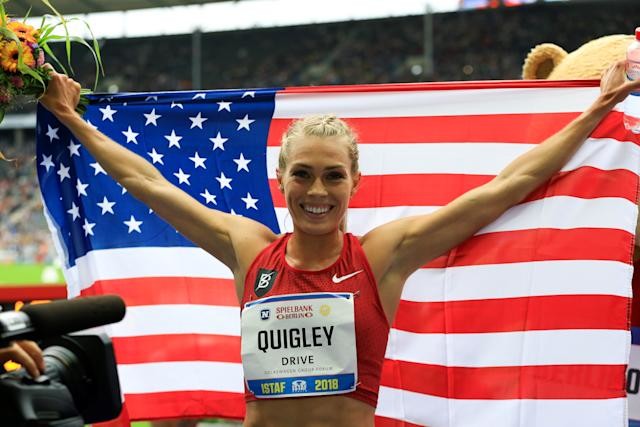
Quigley — a 2016 U.S. Olympic 3000m steeplechaser who withdrew from 2021 Olympic trials — joins a growing number of athletes who were dissatisfied with Nike endorsement deals. Other top runners that parted ways with footwear giant include Mary Cain and Allyson Felix, who respectively spoke out about the company's allegedly toxic culture and lack of maternity protections.
“I started to see myself as more than a runner, and I like to do a lot of different things," Quigley said. "I have different initiatives that I'm working on, really focusing on young athletes and young female athletes."
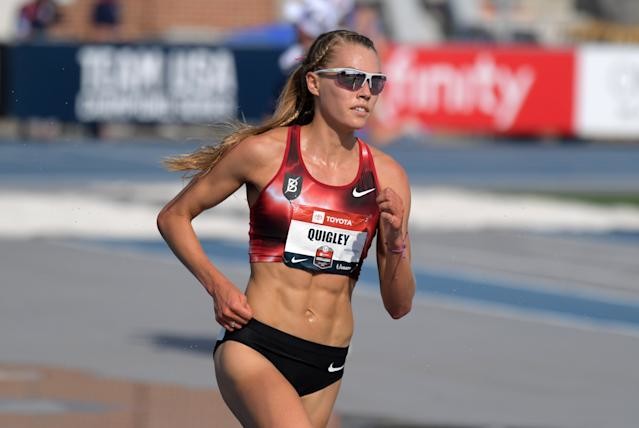
Lululemon "values me as that whole person," she added, "which is really what drew me to them."
Colleen Quigley places second in women's steeplechase heat in 9:53.48 to advance during the USATF Championships Jul 26, 2019; Des Moines, IA (Kirby Lee-USA TODAY Sports)
"You don't have to be on top of the podium to really send a strong message”
Professional athletes in sports such as track and field seek sponsorship deals for compensation since there are few leagues — particularly for women — that pay viable salaries. For college stars like Quigley, signing with a major brand represents the dream of taking one's running career to the next level.
When describing her contract with Nike, Quigley stressed that it was a “transactional relationship.”
“So you run this time, you qualify for this team, you place top three, and you get paid this amount, and if you don't perform and you don't make the team and you don't get a medal, then you don't get paid,” she said. “All of the traditional brands really just see you as a results machine and what you can perform, and what you can give them on the track is really the only thing that they value.” Nike estimated that it will spend $1.33 billion in endorsement contracts in fiscal year 2021, according to company filings. That figure varies based on how well athletes perform and doesn't include the cost of athletic gear provided to endorsers.
Despite the massive marketing machine, top women athletes are increasingly looking for sponsorships that go beyond rewarding athletic accomplishments.
In 2019, Olympic sprinter Allyson Felix departed from Nike after she said she felt pressure from the company to return quickly after her pregnancy and accept a significant pay cut.
“If we have children, we risk pay cuts from our sponsors during pregnancy and afterward," she wrote in an op-ed at the time. "It’s one example of a sports industry where the rules are still mostly made for and by men." (Nike updated its maternity policy to guarantee pay for pregnant athletes after Felix, as well as runners Alysia Montaño and Kara Goucher, went public with their pregnancy stories.)
by Grace O’Donnell
Login to leave a comment
NIKE TOP BRAND MEDAL TABLE, BUT PUMA ON THE RISE
The swoosh has been everywhere on the track and in the field in Tokyo. Nike was the spike of choice for 11 out of the 12 middle distance medallists, on the chest of the top-three in the men’s 200m final, while also sponsoring the stand-out sprint star in Jamaica’s Elaine Thompson-Herah, who took down Flo-Jo’s 100m Olympic record with their latest shoe technology.
It will come as no surprise that Nike was again the most dominant brand in Olympic athletics. The global sports giant was on the vest of 53 medallists and was on the feet of 73—and remains in the top spot that it had in Rio in our brands medal table.

Nike’s totals, however, have declined. Its shoe share is down 16 medals (89 to 73)—while Puma has made a surge (4 to 16, or a 300% increase). Nike it seems decided not to extend or renew contracts for the delayed Olympics with Puma sweeping up some of that talent. Puma’s longer-term deals also came to fruition, most notably with Canada’s Andre De Grasse, who inked a multiyear deal back in 2015 reportedly worth as much as $30 million.
This may be a shift in strategy from Nike that has had an impact beyond track and field, a sport in which it has deep roots. In football, stars like Sergio Ramos and Thiago Alcantara took to blacking out their boots earlier this year. The suggestion then was that Nike was focusing on a smaller number of elite athletes that could be at the core of their campaigns.
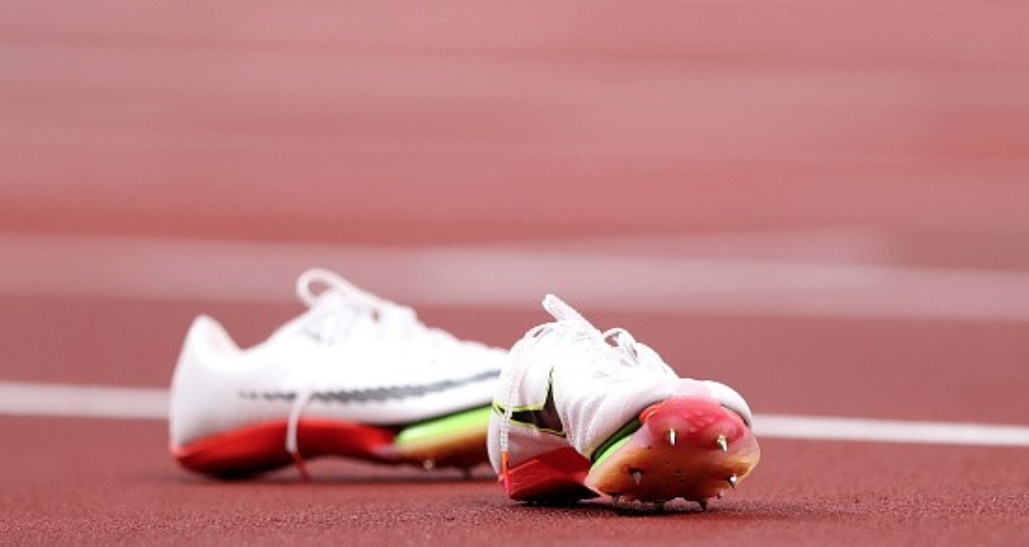
Just because an athlete is wearing a brand in track and field doesn’t mean that they are actually sponsored at all, or in any meaningful way. Some could be “kit drops”, others might have bought a product themselves. New Zealand’s Tom Walsh wore blacked out Nikes for his shot put final, but has had “SPACE FOR RENT” emblazoned on his vest in the Diamond League this season. Others may be ensuring that they don’t miss out on carbon-plated “super spikes”. Britain’s Josh Kerr—Brooks sponsored—wore “whited-out” Nikes for his bronze-medal-winning performance.
There was also room for two new brands; Allyson Felix’s Saysh and fellow American Joe Kovacs wore Velaasa, a shoe brand founded by Lynden Reder that ran a successful Kickstarter campaign back in 2018. New Balance stepped up a notch with their sponsorship of Sydney McLaughlin, Gabby Thomas and Femke Bol.
Nike topped the vests chart through its sponsorship deals with federations, but this was down (71 to 53) and again Puma had the most dramatic boost (15 to 22). This included a shoe and vest double with Norwegian Karsten Warholm’s 400m hurdles world record. Asics, a Japanese company and an official Olympic gold partner, also saw a boost (8 to 13).
Puma may have had one more medal, but decided to cancel its $2.7m sponsorship of the Nigerian team. (Apparently, this delighted Nigerian officials). For its only medal in the women’s long jump, Ese Brume wore the lesser-known sporting brand AFA on her chest. Of these smaller brands, AF’s position is entirely down to Poland’s performance, while Belgian sponsor Vermarc can once more thank Nafissatou Thiam for making the medal table.
Charts show individual track and field events, no relays or road races. One athlete wore different brands across the heptathlon, so her final shoe brand in the 800m was counted here. For the vest count, it is the competing vest and not the podium tracksuit where the brands may differ. Javelin Olympic champion, India’s Neeraj Chopra had no discernible logo on his vest. It is categorised here as “other”.
Login to leave a comment
The Four Races That Still Need to Happen in 2021
The Tokyo Olympics may be over, but the track & field season most definitely is not. We’ve still got five Diamond Leagues to go, including the final in Zurich on September 8-9. And while Tokyo produced a number of amazing races, there were a few that we didn’t get to see. Here are the four races that still need to happen in 2021. Diamond League meet directors, pay attention (and have your checkbook handy…these races won’t be cheap to organize).
Women’s 100 meters: Elaine Thompson-Herah vs. Shelly-Ann Fraser-Pryce vs. Sha’Carri Richardson
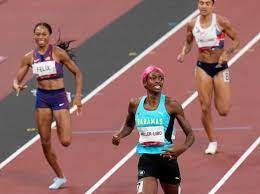
Of the six fastest women in history, three of them have run their personal bests this year: Thompson-Herah (10.61 in Tokyo), Fraser-Pryce (10.63 in Kingston), and Richardson (10.72 in Miramar). But we didn’t get to see the three of them in the same race at the Olympics because of Richardson’s positive test for marijuana at the US Olympic Trials.
There may be a bit of a rivalry brewing as well. Remember, after Fraser-Pryce ran 10.63 back in June, Richardson essentially took credit for pushing Fraser-Pryce to a pb (even though Richardson was not even in the race).
And when the Jamaicans were asked about Richardson following the Olympic final, they did not want to talk about her (though to be fair…they had just won Olympic gold and silver). But any mention of even the word marijuana quickly resulted in realizing they didn’t want to talk about Sha’Carri at all.
Chances that it happens: It’s already happening! The Pre Classic has announced its women’s 100m field and all three are entered.
Men’s 400: Karsten Warholm vs. Rai Benjamin vs. Steven Gardiner
Karsten Warholm’s mesmerizing 45.94 world record in the 400 hurdles generated a number of questions. One of the natural ones: how fast could he run without the hurdles? Warholm’s personal best in the flat 400 is 44.87, but that dates back to 2017, when his hurdles pb was 48.22. He’s over two seconds faster now in the hurdles, so it’s not unreasonable to think he’s in 43-second shape right now. Benjamin’s pb is 44.31 from 2019.
So let’s throw Warholm and Benjamin in against the Bahamas’ Steven Gardiner, who just ran 43.85 to win the flat 400 in Tokyo, and see how they really stack up.
Chances that it happens: 25%. Warholm has already committed to run the flat 400 in Lausanne on August 26. That’s a great start, but getting Benjamin and Gardiner as well could prove tricky.
Women’s 400: The “Dream Team” vs. Shaunae Miller-Uibo
It was a running joke for most of the 2021 season: America’s best 400-meter runners don’t even run the 400. I mean, just look at the “Dream Team” the US trotted out for its dominant victory in the 4×400 relay: Sydney McLaughlin, Allyson Felix, Dalilah Muhammad, Athing Mu. Only one of those women ran the open 400 in Tokyo.
As incredible as Felix was at the Olympics, taking bronze in the 400 in 49.46, she only had the third-fastest split on that relay (49.38), with Muhammad going 48.94 and Mu a ridiculous 48.32. What could be better than seeing all four Dream Teamers race each other head to head?
Well, how about throwing the two-time Olympic 400 champ into the mix in Shaunae Miller-Uibo? Assuming that field doesn’t collapse from the weight of its collective gold medals (all five of the women have won individual Olympic gold; their combined total is 15 career Olympic golds including relays), the race would be more stacked than the Olympic final we just witnessed.
Chances that it happens: 10%. This one seems like a pipe dream. With the Americans as the major draw, the Pre Classic would be the natural venue for this, but there are two problems. First, there is no women’s 400 at Pre this year (though it’s not too late to add one!). And second, the five athletes above are represented by four different shoe brands. It’s not as if Nike could just magically compel them all to run Pre.
Men’s 5,000: Jakob Ingebrigtsen vs. Joshua Cheptegei vs. Selemon Barega
We already saw Ingebrigtsen vs. Cheptegei in Florence in June, and it was no contest, with Ingebrigtsen pulling away to a world-leading 12:48 as Cheptegei faded late. But Cheptegei revealed in Tokyo that he has been battling a heel injury this year, and while he’s not completely over it, it’s definitely more manageable now (as evidenced by his gold and silver in Tokyo) than it was two months ago in Florence.
Then there’s Barega, who used a sick close (2:24 last 1k, 53 last lap) to win 10k gold but did not run the 5k in Tokyo. Let’s settle the title of best distance runner in the world and pit the Olympic 1500, 5k, and 10k champs together in a 5k on the circuit.
Chances that it happens: 30%. I could see Cheptegei and Barega racing each other in a 5,000 at the Diamond League final (or even the 2-mile at Pre). Getting Ingebrigtsen to join them could be more difficult, however. He’s running the Bowerman Mile at Pre and may opt for the 1500 at the DL final.
by Let’s Run
Login to leave a comment
Jamaican women win gold in womens 4x100m final
The Jamaican women brought out the big guns for the final of the 4x100m relay, and it paid off. Briana Williams ran the lead leg, handing off to Shelly Ann Fraser-Pryce, then Elaine Thompson-Herah and Shericka Jackson (who also ran in the heats) for the win in a national record of 41.02. They edged out the USA, who took silver in a season’s best 41.45, anchored by Gabby Thomas (with a lot of ground being made up in the third leg by Jenna Prandini).
Great Britain came through for bronze in 41.88. It was the third time in four Olympics that these three nations have stood on the podium in this event, in various configurations of gold, silver and bronze.
There were a few moments of doubt over whether the Jamaicans might have been out of position in the first hand-off, but ultimately the result stood, and the team started celebrating. Switzerland ran well, with 100m finalists Ajla del Ponte and Mujinga Kambundji racing hard to put their team on the podium, but ultimately it wasn’t enough. Team Netherlands fumbled the handoff from lead Nadine Visser to Dafne Schippers, and their race was done.
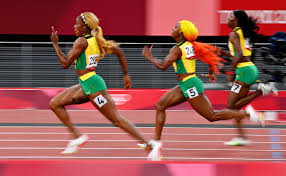
Miller-Uibo gets gold in 400m final
The women’s 400m final netted another gold for defending gold medallist Shaunae Miller-Uibo, who also won five years ago in Rio, in a personal best and area record of 48.36, after some doubt about whether the schedule would allow her to double. (Miller-Uibo also ran the 200m, but didn’t make the final.) Marileidy Paulino took silver in a national-record-setting performance for the Dominican Republic of 49.20. Allyson Felix, who won silver in this event in Rio, earned the bronze in 49.46, her fastest time yet this year and an unbelievable 10th Olympic medal for the American.
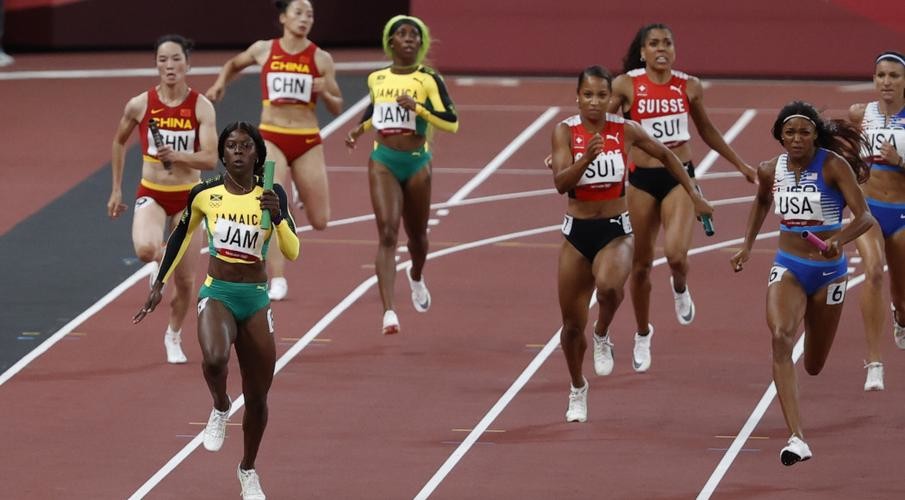
Team USA redeems itself in the men’s 4x400m relay heats
The first heat of the men’s 4x400m was fast and furious, with Team USA running well after its disastrous 4x100m performance. Anchor Michael Norman crossed the line first, in 2:57.77, followed by Botswana (who ran their fastest man, Isaac Makwala, as their lead leg, a strategy that paid off for them) and Trinidad and Tobago as the last auto-qualifier from this heat. Italy and the Netherlands, in fourth and fifth, had to wait and see if they would advance, but both qualified through to the final in the end. All five saw times under three minutes, and this heat produced three national or area records – for Botswana, the Netherlands and Italy.
The second heat was almost as fast, producing two national records (but in the fourth and fifth finishers, India and Japan, who did not advance). Poland and Belgium dominated, with the Poles crossing the line first in 2:58.55. Jamaica finished third, all of them running under three minutes. Going through to Friday evening’s final are USA, Botswana, Trinidad and Tobago, Poland, Belgium and Jamaica.
by Anne Francis
Login to leave a comment
Poland makes history with Olympic mixed 4x400m win
Poland’s first gold medal of the Tokyo Games came with a special bonus: a place in the Olympic history books.
Kajetan Duszynski raced to the front down the final straight and powered across the line to give his country the first gold medal in the inaugural Olympic mixed 4x400 relay on Saturday (31).
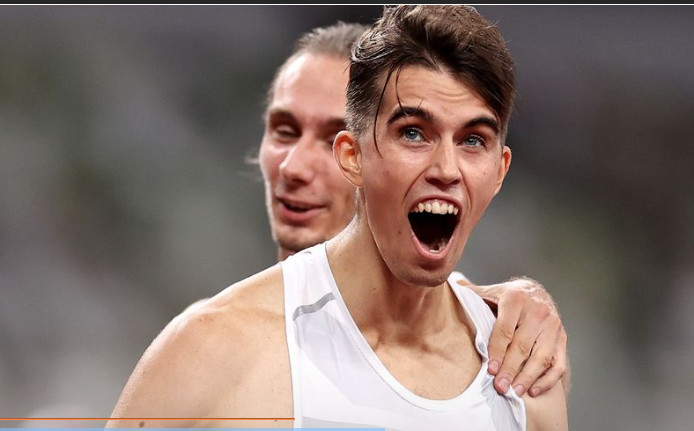

The Polish quartet of Karol Zalewski, Natalia Kaczmarek, Justyna Swiety-Ersetic and Duszynski clocked a European – and now Olympic – record of 3:09.87 to claim the title ahead of the Dominican Republic and the United States.
It was also Poland’s second Olympic gold in an athletics relay, coming 56 years after the Poles won the women’s 4x400m relay at the 1964 Games, which also happened to be held in Tokyo.
“We all believed we could manage to win the medal,” Zalewski said. “We were not sure if it was going to be gold or something else, but we knew that we could win something. We all left our hearts on the track.”
Duszynski, who ran the final leg in 44.38, held his arms outsretched wide as he crossed the line, then pulled his singlet over his head in celebration before being mobbed by his teammates.
"In the last 150 metres I felt I had a lot of strength still,” Dusynski said. “I'm that type of endurance athlete. It is my strength to run the first 200 metres slowly and then to attack towards the finish line. So I knew that I could make it. It's my strategy and it worked for me."
The Dominican Republic quartet of Lidio Andres Feliz, Marileidy Paulino, Anabel Medina Ventura and Alexander Oganda claimed the silver, with Paulino clocking a 48.7 split for her second leg. The bronze went to the US team of Trevor Stewart, Kendall Ellis, Kaylin Whitney and Vernon Norwood.
Oganda outleaned Norwood at the line to clinch the silver in 3:10.21, just 0.1 ahead of the US.
“It is so exciting to come here and run the first mixed relay at the Olympic Games, and to come out with a medal feels great,” Ellis said. “It feels like a win for us."
The race capped an eventful 24 hours for the US and Dominican teams. They had been disqualified after the qualifying rounds on Friday but were reinstated on appeal in time for the final.
The USA replaced their lineup from the heats, which was made up of Lynna Irby, Taylor Manson, Bryce Deadmon and Elija Godwin. The members of Saturday’s team said the controversy over the disqualification and reinstatement should not take away from their bronze-medal performance.
“It was events outside our control and we as a team stand behind our teammates and the United States, who we are proud to represent and bring home a medal for us,” Whitney said.
The mixed relay made its Olympic debut two years after being contested at the World Athletics Championships for the first time in Doha.
While teams can choose any order they want for the relay, all teams in Tokyo opted for the conventional order of man-woman-woman-man.
The Dominicans built up a large lead on the third lap until 21-year-old Dutch 400m and 400m hurdles star Femke Bol reeled them in going into the anchor leg.
Duszynski timed his kick perfectly, surging to the front after the final turn and pulling away down the home stretch. Norwood moved into second place and seemed poised to secure the silver for the US but was edged out by Oganda on the lean.
The US team did not include Allyson Felix, who had helped the USA win the mixed relay in Doha and was eligible to run the event in Tokyo.
It means that Felix, competing in her fifth Olympics at the age of 35, will have to wait a bit longer to bid for her 10th career medal. That would make her the most decorated woman in Olympic athletics history and equal Carl Lewis for the most medals by a US track and field athlete.
Felix, who holds six gold and three bronze medals, will run in the 400m and possibly the women's 4x400m relay.
by World Athletics
Login to leave a comment
Tokyo 2020 Olympic Games
Fifty-six years after having organized the Olympic Games, the Japanese capital will be hosting a Summer edition for the second time, originally scheduled from July 24 to August 9, 2020, the games were postponed due to coronavirus outbreak, the postponed Tokyo Olympics will be held from July 23 to August 8 in 2021, according to the International Olympic Committee decision. ...
more...A new generation of champions set to emerge in Tokyo
While some reigning Olympic and world champions might be missing from the Games in Tokyo, the extra year as a result of the postponement in 2020 has allowed a number of new talents to emerge.
For some it means a debut Olympic experience which may not originally have been expected until at least 2024, while for others it is a realistic opportunity to win medals and titles.
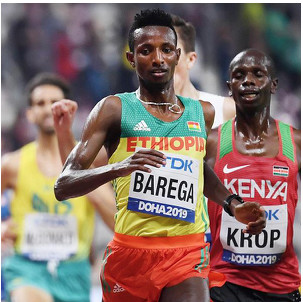
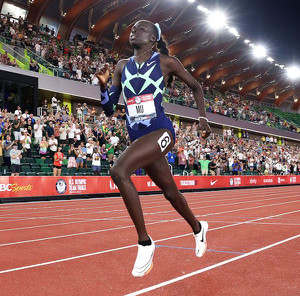
Of the 43 individual events contested at the Rio 2016 Olympics, the winners from just 18 of those will defend their titles in Tokyo.
The likes of world 800m champion Donavan Brazier and Olympic 110m hurdles champion Omar McLeod missed out on being selected for their national team, while other stars, such as world and Olympic triple jump champion Christian Taylor, are currently sidelined with injury.
But while those global champions won't be able to contend for top honours in Tokyo, here are some of the new generation of stars who are set to emerge.
Selemon Barega, 10,000m
After winning world U18 and U20 titles in 2017 and 2016 respectively, Ethiopia’s Barega stepped up to secure senior 5000m silver at the World Athletics Championships in 2019. Still aged just 21, he is now preparing for his debut Olympics, where he will race the 10,000m.
Barega started the season with intent, running an Ethiopian all-comers’ record of 27:58.5 at altitude in Addis Ababa in January. He then went even faster at the Ethiopian Trials in Hengelo in June, clocking 26:49.51 on the same track on which he ran his 26:49.46 PB in 2019. That, together with the speed he demonstrated by running PBs of 3:32.97 for 1500m and 7:26.10 for 3000m during the indoor season, means he is set to be a strong force in Tokyo
Jasmine Camacho-Quinn, 100m hurdles
Medal success in Tokyo would see Camacho-Quinn become the first Puerto Rican woman to secure an Olympic podium place in athletics and this season she has certainly demonstrated her ability to achieve that feat.
The 24-year-old improved her own national 100m hurdles record to 12.32 to move to equal seventh on the world 100m hurdles all-time list in Eugene in April and hasn’t been beaten since. She clocked 12.38 to win at the Wanda Diamond League meeting in Florence and 12.34 for success in Szekesfehervar, meaning she has the three fastest times in the world so far this year. “I'm looking forward to the Olympics this year - it will be like redemption from my fall in 2016,” she said after her Florence run as she reflected on missing out on the final in Rio. “I'm really excited. Training really hard, working really hard, but really looking forward to it.”
Tara Davis, long jump
Davis leapt into the seven-metre club in March, breaking the US collegiate long jump record with 7.14m at the Texas Relays. The longest jump in the world since the 2019 World Athletics Championships final, that mark moved the 22-year-old to fifth on the US all-time list.
The world U20 bronze medallist had also broken the collegiate indoor record with 6.93m at the NCAA Indoor Championships earlier in the year and finished second at the US Olympic Trials, going beyond seven metres again with a best of 7.04m. “I’m shocked still because seven metres as a jumper is the biggest thing ever. Hitting it in the Olympic Trials is unreal,” she said after her performance in Eugene, where she finished second to four-time world gold medallist and 2012 Olympic champion Brittney Reese. “I’m freaking jumping with my idol, Brittney Reese. Being with her and competing with her in 2016 I was so starstruck. I was like, ‘I see her on TV and now I’m jumping with her’.”
Alison Dos Santos, 400m hurdles
After running in the lane next to Karsten Warholm during his world record in Oslo, improving his South American record to 47.38 to finish second, Brazil’s Dos Santos went even quicker to win three days later in Stockholm, taking another 0.04 off that mark.
This season has seen the 21-year-old build on his 2019 breakthrough, having that year improved his PB and the South American U20 record seven times, eventually clocking 48.28 to finish seventh at the World Athletics Championships in Doha. Also a key member of Brazil’s relay team, he ran the fastest split of the mixed 4x400m final at the World Athletics Relays in Silesia, recording a 44.62 anchor leg. “I'm looking forward to the Olympics, and yes, I think I can get a medal,” he said with a smile after his run in Stockholm.
Mondo Duplantis, pole vault
While some may argue that a world record (or two) rules an athlete out from being considered part of a ‘new generation’, pole vault star Duplantis is still aged only 21 and has much more he hopes to accomplish during his career, including winning Olympic gold.
This season he has cleared six metres or higher in four competitions, capped by his 6.10m in Hengelo - a height only he, Renaud Lavillenie and Sergey Bubka have ever achieved. After winning 2019 world silver behind Sam Kendricks - who ended Duplantis’ 23-competition win streak in challenging conditions in Gateshead in May - Duplantis will be looking to go one better in Tokyo. He also believes he can go higher than his 6.18m world record this season and after attempting 6.19m in Oslo, he said: “I really think I can get that record soon. But for now I feel good, a month away from the most important meet of my life. I am in good shape, I am running well on the runway and keeping up the rhythm well.”
JuVaughn Harrison, long jump and high jump
Harrison secured his two Olympic spots in style at the US Trials, soaring over 2.33m and then leaping a PB of 8.47m to improve his own best-ever single-day high jump and long jump double. As a result, he will become the first male athlete to represent the USA in both events at the Olympics since Jim Thorpe in 1912. No other athlete has ever achieved both a 2.30m high jump and 8.40m-plus long jump.
The 22-year-old is no stranger to juggling both events on the same day and in March he cleared 2.30m and jumped 8.45m at the NCAA Indoor Championships. In Tokyo, the high jump final is on the evening of day three and the long jump final is on the morning of day four. He is expecting to rise to the challenge. “It will be harder competition which will make me push harder and jump farther,” he said.
Erriyon Knighton, 200m
Running 19.88 at the age of just 17, Knighton broke not one but two world 200m age-group bests which had previously been held by a certain Usain Bolt. At the US Olympic Trials, the former American football player ran 20.04 in the heats to improve Bolt’s world U18 best before taking 0.16 off that mark in the semifinals to break the world U20 record of 19.93 set by Bolt in 2004. In the final he went quicker still, clocking 19.84 to finish third and become the youngest man to represent the USA in athletics at the Olympics since Jim Ryun in 1964, also in Tokyo.
Racing outside of the USA for the first time, Knighton then placed third at the World Athletics Continental Tour Gold meeting in Szekesfehervar, running 20.03. “It hasn't sunk in, it’ll probably sink in when I get home,” he said after claiming his Olympic place. “I'm happy. I feel it's a really big achievement.”
Nicola McDermott, high jump
As an eight-year-old, McDermott dreamt of becoming a consistent two-metre-plus international high jumper and having already achieved the latter, this year her two-metre aim was accomplished, too. Clearing 2.00m at the Australian Championships in April, the 24-year-old broke Eleanor Patterson’s Oceanian record and then added another centimetre to the mark in Stockholm earlier this month, despite not feeling 100 percent.
McDermott didn’t manage to register a height when she made her World Athletics Championships debut in London and two years later the Commonwealth bronze medallist finished 15th in qualifying. This time, as she makes her Olympic debut, her mind is on medals. “I’m not going to say it’s impossible to get a medal,” she said. “I’ll be aiming and I think 2.01m will maybe get me in the medals so I am aiming and training for that and believing that I can do it.”
Sydney McLaughlin, 400m hurdles
Like Duplantis, McLaughlin is already a world record-breaker having taken the 400m hurdles to another level with her time of 51.90 at the US Olympic Trials. She also was no stranger to making history before that, with world U18 best and world U20 record times among her age-group accomplishments.
Now aged 21, she made her first Olympic team at just 16, finishing fifth in her semifinal nine days after her 17th birthday, and then secured silver at the 2019 World Athletics Championships in Doha, a race won by her compatriot Dalilah Muhammad in a world record of 52.16. It was that mark McLaughlin improved in Eugene. “So many amazing women have come before me and will come after me,” she said after her world record. “I'm excited for what the future holds. I just want to leave my mark and be part of such an amazing sport, because the glory isn't forever.”
Athing Mu, 800m
Mu is another athlete to have risen impressively through the ranks, having stormed into the spotlight in 2019 when as a 16-year-old she ran the second-fastest ever indoor 600m time of 1:23.57. This year she has broken the world U20 indoor 800m record with 1:58.40 and then dominated the two-lap final at the US Olympic Trials, running a world-leading 1:56.07 to improve her own North American U20 record.
The 19-year-old also ran an area U20 record in the 400m with 49.57 to win the NCAA title earlier in the month. “This is my first year coming out here running to my potential,” she said after her trials win. “I wouldn't want to say I'm dominant at it yet. My confidence takes a lot from it. In 2019, I wasn't confident, but I was good enough. Gaining confidence has contributed to my dominance thus far in the 800m. Being good at it, knowing it's my event.”
Great experience
While some reigning global champions may be missing out on Tokyo, there are a number of vastly experienced stars who will be adding another Olympics to their impressive tally of major events. The USA’s Allyson Felix has already won six Olympic gold medals and 13 world titles, while shot put star Valerie Adams has claimed two Olympic and four world titles for New Zealand, with Tokyo being a fifth Olympic Games for both athletes.
Spain’s 51-year-old Jesus Angel Garcia, meanwhile, will compete at his eighth Olympics – the most ever for a track and field athlete. Who knows whether some of this new generation of stars will still be in action come the Olympic Games in 2048!
by World Athletics
Login to leave a comment
The Weird and Wonderful Moments From the Olympic Trials That You May Have Missed
Want to run fast? Try wearing a pair of Doritos earrings, just like Christina Clemons.
During the 2021 Olympic Track and Field Trials, held at Hayward Field in Eugene, Oregon, we watched as the nation’s best athletes competed for spots to race at the Tokyo Games—the pinnacle for these runners. But we also some wacky, weird, and wonderful moments, reminding us that no matter how fast these athletes can run, they’re still human.
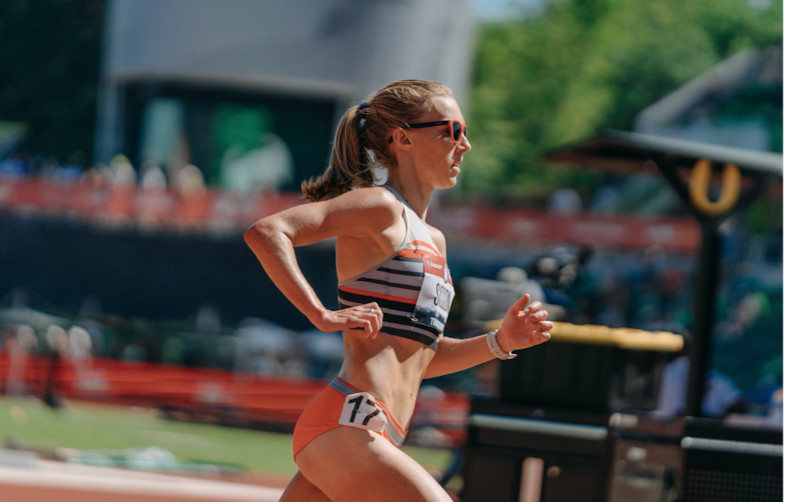
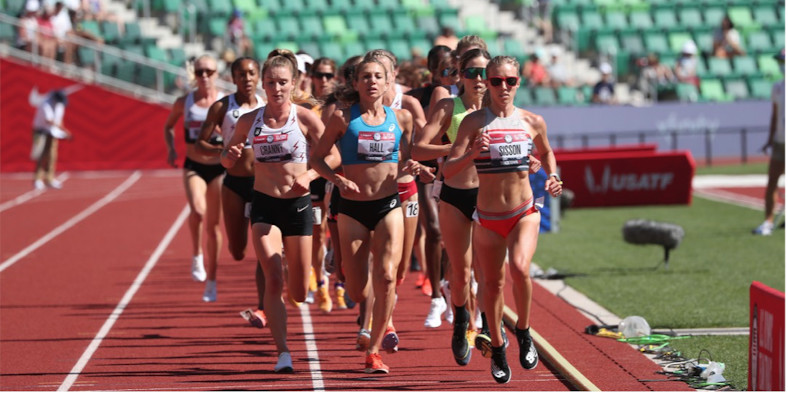
Lewis Johnson goes for a dip in the steeplechase water pit
Before the first round of the women’s 3000-meter steeplechase on Sunday, June 20, NBC broadcaster Lewis Johnson was tasked with explaining exactly what the steeplechase race is. (Runners jump over 35 barriers, seven of which are over a water pit. It also started as a horse race. Read more here!) Not only did he show viewers on TV all around the barriers, he actually took his shoes and socks off and waded into the water pit to show how deep it was. Talk about dedication to his craft.
A short time later, Allyson Felix qualified for her fifth Olympic team, finishing second in the 400 meters—and when Johnson was interviewing her trackside, his shorts appeared to be dry. Did he bring an extra pair of shorts and change? Was it so hot that his shorts dried? I haven’t stopped thinking about this for over a week. — Bette Canter
Christina Clemons makes the Olympic team wearing Doritos earrings
Forget the Wheaties cereal box. Christina Clemons, who made her first Olympic team in the 100-meter hurdles during the opening weekend of the Trials, has her face on a bag of Doritos!
How did this happen? According to The Washington Post, Clemons was looking for new earrings before the meet and purchased a pair of Cool Ranch Doritos bling at a Hot Topic. We’re so thankful that eagle-eyed viewers and on-site photographers spotted the awesome earrings, helping the selection go viral and providing Clemons this unique opportunity. May I suggest for her Olympic run, she get mini earrings of her favorite high-end car? — Brian Dalek
New England Pride in the Women’s 1500
I’m not a “real” New Englander—I’ve lived in Maine for only 18 years, or about 200 years shy of many natives’ standards for sufficient family roots. But from the fan boy angle, close enough. So it was a treat to see Vermonter Elle Purrier St. Pierre and Heather MacLean of Massachusetts finish first and third, respectively, in the women’s 1500 final amid the usual west-of-the-Mississippi-based candidates.
The moment was made sweeter by MacLean nabbing the Olympic standard, her and Purrier St. Pierre’s modest college running achievements, and the fact that they’re New Balance Boston teammates and close friends. Or, as their coach, Mark Coogan, told Runner’s World in his best southern Massachusetts intonation, “A girl from UMass and a girl from UNH are going to the Olympics, in the mile. Top that!” — Scott Douglas
Michelle Obama congratulates Sha’Carri Richardson
After Sha’Carri Richardson dominated the women’s 100-meter final with a winning time of 10.86, her performance and reaction afterwards (she ran into the stands to hug her grandmother right after the victory) went viral. Even former First Lady Michelle Obama took notice and tweeted a message congratulating the national champion. Obama tweeted a video clip of Richardson’s post-race interview in which the sprinter shared that her biological mother passed away before the championship. Richardson also thanked her family, especially her grandmother who witnessed Richardson become an Olympian.
“Without my grandmother, there would be no Sha’Carri Richardson,” Richardson told Lewis Johnson on NBC. “My family is my everything, my everything until the day I’m done.”
Richardson responded to the Becoming author’s tweet with a message of her own.
“I am up right now losing my mind!” Richardson wrote at 2:41 a.m. PDT on June 23. — Taylor Dutch
Even the pros sometimes borrow gear from their significant other
She’d sketched out her race plan lap by lap and even traded out her pre-race coffee for caffeinated gum to stay cooler. But there was one minor detail Emily Sisson realized she forgot as she was stepping onto the track to dominate the women’s 10,000 meters Saturday morning: shades. Fortunately, her husband, Shane Quinn, had a pair he was willing to part with.
“I stole them off him as we were walking into the warm-up area,” she said post-race. Those red-and-black frames—which appeared to be from goodr—made her look even more like a boss as she lapped nearly everyone en route to a new meet record and her first Olympic spot. — Cindy Kuzma
Runners warming up ... around a cemetery
Eugene Pioneer Cemetery, on the National Register of Historic Places, is also a destination for U.S. elite distance runners, warming up and cooling down for the races in Hayward Field.
The cemetery, which has a dirt trail around its perimeter that’s roughly 0.6 miles long, saw plenty of use during the Olympic Trials. Before the semifinal round of the women’s 1500, Runner’s World spotted Jenny Simpson, Dani Jones, Amanda Eccleston, Sarah Lancaster and others jogging the loop before heading one block east to the athlete entrance to the track. After the semis of the men’s 800, Bryce Hoppel went over for a cooldown.
The cemetery isn’t affiliated with the University of Oregon, but it’s adjacent to the campus, and many Duck track athletes over the years have used it for their runs. It’s an easy target for, well, gallows humor—as athletes hope warming up their doesn’t signal the death knell of their careers.
by Runner’s World
Login to leave a comment
130 athletes named on the team to represent the United States at the Tokyo Olympic Games
World outdoor record-holders Sydney McLaughlin, Ryan Crouser and Keni Harrison are among the 130 athletes named on the team to represent the United States at the Tokyo Olympic Games.
The squad includes 13 medalists from the 2016 Games in Rio and six defending world champions from Doha. Experienced headliners include five-time Olympians Allyson Felix in the 400m and Abdi Abdirahman in the marathon, while the youngest athlete on the team is 17-year-old Erriyon Knighton, who twice broke the world U20 200m record last month at the US Olympic Trials.
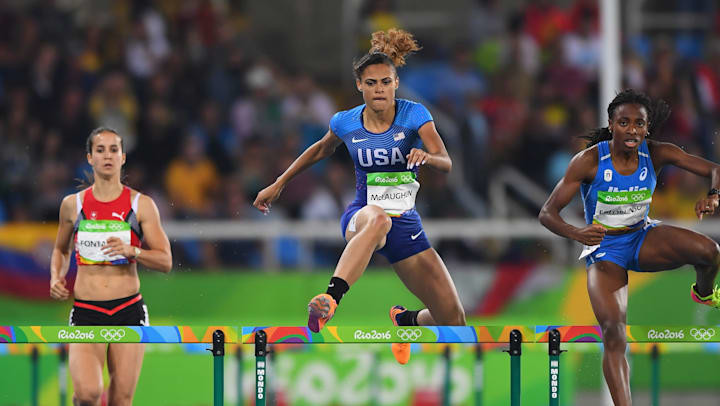
JuVaughn Harrison won both the long jump and high jump at the Trials in Eugene and he will be among the athletes contesting two events in Tokyo as he has been selected for both disciplines.
Other athletes announced on the team include world indoor 60m hurdles record-holder Grant Holloway, who was just 0.01 shy of breaking Aries Merritt’s world 110m hurdles record of 12.80 in Eugene, plus former world 400m hurdles record-holder Dalilah Muhammad, the second-fastest ever 200m sprinter Gabby Thomas and multiple global long jump gold medalist Brittney Reese.
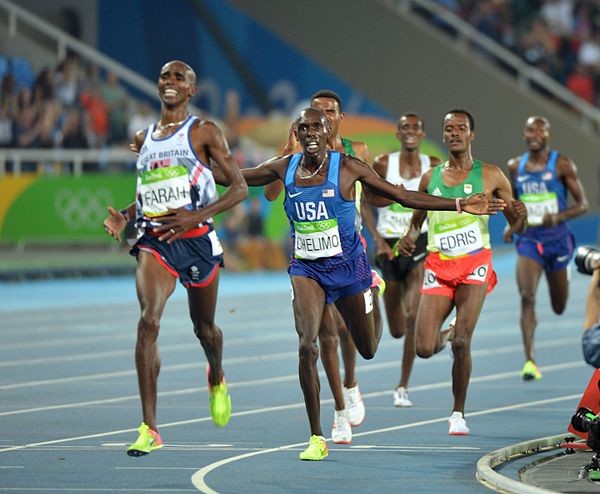
USA team for Tokyo
WOMEN
100m: Teahna Daniels, Javianne Oliver, Jenna Prandini
200m: Anavia Battle, Jenna Prandini, Gabby Thomas
400m: Allyson Felix, Quanera Hayes, Wadeline Jonathas
800m: Athing Mu, Raevyn Rogers, Ajee' Wilson
1500m: Heather MacLean, Cory McGee, Elle Purrier
5000m: Elise Cranny, Rachel Schneider, Karissa Schweizer
10,000m: Alicia Monson, Karissa Schweizer, Emily Sisson
Marathon: Sally Kipyego, Molly Seidel, Aliphine Tuliamuk
3000m steeplechase: Emma Coburn, Val Constien, Courtney Frerichs
100m hurdles: Christina Clemons, Gabbi Cunningham, Keni Harrison
400m hurdles: Anna Cockrell, Sydney McLaughlin, Dalilah Muhammad
20km race walk: Robyn Stevens
High jump: Tynita Butts-Townsend, Vashti Cunningham, Rachel McCoy
Pole vault: Morgann LeLeux, Katie Nageotte, Sandi Morris
Long jump: Quanesha Burks, Tara Davis, Brittney Reese
Triple jump: Tori Franklin, Jasmine Moore, Keturah Orji
Shot put: Adelaide Aquilla, Jessica Ramsey, Raven Saunders
Discus: Valarie Allman, Kelsey Card, Rachel Dincoff
Hammer: Brooke Andersen, Gwen Berry, DeAnna Price
Javelin: Ariana Ince, Maggie Malone, Kara Winger
Heptathlon: Erica Bougard, Annie Kunz, Kendell Williams
4x100m: English Gardner, Aleia Hobbs, Gabby Thomas (plus others selected in individual events)
4x400m: Kendall Ellis, Lynna Irby, Kaylin Whitney (plus others selected in individual events)
MEN
100m: Ronnie Baker, Trayvon Bromell, Fred Kerley
200m: Kenny Bednarek, Erriyon Knighton, Noah Lyles
400m: Michael Cherry, Michael Norman, Randolph Ross
800m: Bryce Hoppel, Isaiah Jewett, Clayton Murphy
1500m: Matthew Centrowitz, Cole Hocker, Yared Nuguse
5000m: Paul Chelimo, Grant Fisher, Woody Kincaid
10,000m: Grant Fisher, Woody Kincaid, Joe Klecker
Marathon: Abdi Abdirahman, Jake Riley, Galen Rupp
3000m steeplechase: Hillary Bor, Mason Ferlic, Benard Keter
110m hurdles: Devon Allen, Grant Holloway, Daniel Roberts
400m hurdles: Rai Benjamin, David Kendziera, Kenny Selmon
20km race walk: Nick Christie
High jump: JuVaughn Harrison, Shelby McEwen, Darryl Sullivan
Pole vault: Sam Kendricks, KC Lightfoot, Chris Nilsen
Long jump: Marquis Dendy, JuVaughn Harrison, Steffin McCarter
Triple jump: Chris Benard, Will Claye, Donald Scott
Shot put: Ryan Crouser, Joe Kovacs, Payton Otterdahl
Discus: Mason Finley, Reggie Jagers, Sam Mattis
Hammer: Daniel Haugh, Rudy Winkler, Alex Young
Javelin: Michael Shuey, Curtis Thompson
Decathlon: Steven Bastien, Garrett Scantling, Zach Ziemek
4x100m: Kenny Bednarek, Cravon Gillespie, Micah Williams (plus others selected in individual events)
4x400m: Elija Godwin, Vernon Norwood, Trevor Stewart (plus others selected in individual events)
MIXED
4x400m: Shae Anderson, Bryce Deadmon, Wil London, Taylor Manson (plus others selected in individual events).
by World Athletics
Login to leave a comment
Tokyo 2020 Olympic Games
Fifty-six years after having organized the Olympic Games, the Japanese capital will be hosting a Summer edition for the second time, originally scheduled from July 24 to August 9, 2020, the games were postponed due to coronavirus outbreak, the postponed Tokyo Olympics will be held from July 23 to August 8 in 2021, according to the International Olympic Committee decision. ...
more...Breastfeeding mothers will be allowed to bring their children to the Olympics
The International Olympic Committee (IOC) announced Wednesday morning that breastfeeding mothers will now be allowed to bring their babies to the Tokyo Olympics. This is a huge relief to several athletes who are mothers, who before this change would have been forced to choose between not competing, or leaving their infant children at home.
Among these relieved athletes is Aliphine Tuliamuk, winner of the U.S. Olympic marathon trials. In May, Tuliamuk petitioned the Olympic organizing committee to allow her to bring her four-month-old daughter Zoe to the Games, but had not received word on the decision.
At the time, she had not given an ultimatum but was still unsure of what she would do. With the IOC’s announcement today, she no longer has to make the difficult choice.

“We very much welcome the fact that so many mothers are able to continue to compete at the highest level, including at the Olympic Games,” the IOC said in a statement. “We are very pleased to hear that the Tokyo 2020 organizing Committee has found a special solution regarding the entry to Japan for mothers who are breastfeeding and their young children.”
Previously, organizers had barred all international spectators, including athletes’ families, which included their children. Several athletes have spoken out about the issues facing mothers, particularly those who are breastfeeding, including nine-time Olympic medallist, Allyson Felix, who recently qualified for her 5th Games. “I would be most sensitive to moms who are breastfeeding,” she said. “I know for me, when I competed when Cammy was under a year old — you need to be near your child.”
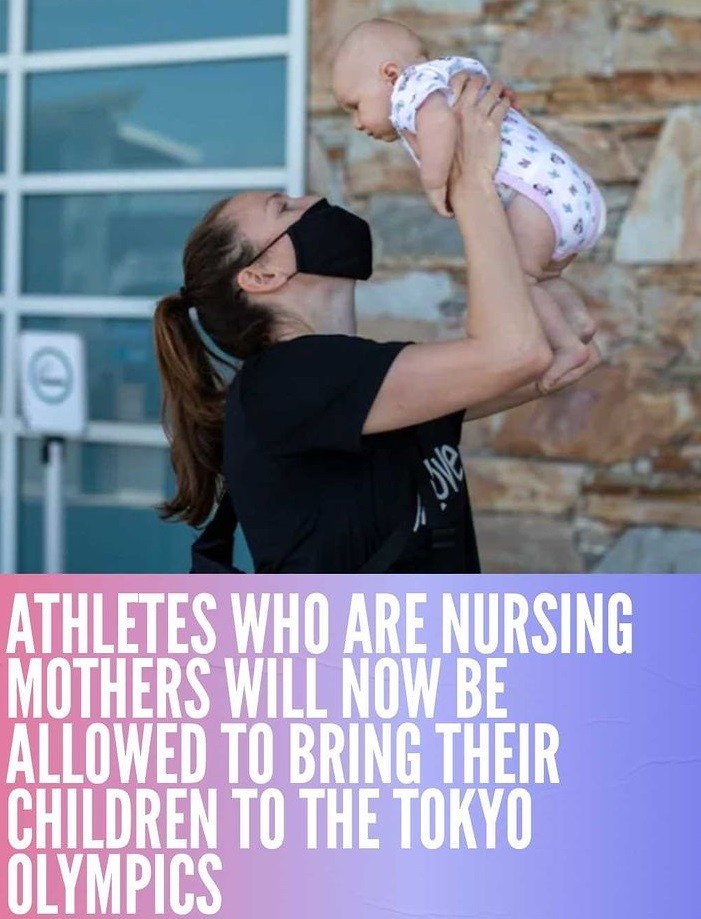
The organizers have now eased the restrictions, so women in this situation do not have to make such a difficult choice.
“Given that the Tokyo 2020 Games will take place during a pandemic, overall we must unfortunately decline to permit athletes’ family members or other companions to accompany them to the Games,” organizers said. “However, after careful consideration of the unique situation facing athletes with nursing children, we are pleased to confirm that, when necessary, nursing children will be able to accompany athletes to Japan.”
According to Reuters, these children will be staying in approved hotels outside of the Olympic Village because that area is under strict restrictions due to the ongoing pandemic. Only athletes and Olympic officials will be permitted to enter that residential area.
by Brittany Hambleton
Login to leave a comment
Tokyo 2020 Olympic Games
Fifty-six years after having organized the Olympic Games, the Japanese capital will be hosting a Summer edition for the second time, originally scheduled from July 24 to August 9, 2020, the games were postponed due to coronavirus outbreak, the postponed Tokyo Olympics will be held from July 23 to August 8 in 2021, according to the International Olympic Committee decision. ...
more...Track star Allyson Felix launches her own shoe brand after breaking up with Nike
After breaking up with Nike in 2019 and landing a sponsorship deal with Gap’s Athleta, the brand’s first, track and field star Allyson Felix is launching her own shoe business.
On Wednesday, Felix debuted Saysh, which she pitches as a lifestyle brand designed with women in mind. Saysh’s first product, the Saysh One sneaker, retails for $150 and is currently available for preorder in three colors. Other products are in the works, according to the company’s website.

Customers are also able to buy membership to the “Saysh Collective,” which comes with workout videos and occasional interactions with Felix. An annual membership costs $150, while a monthly pass goes for $10.
The announcement comes after Felix finished second in the 400 meter at the U.S. Olympic Track and Field trials this past weekend, clinching her spot in the Tokyo Olympics. Felix is the most decorated female track and field star in U.S. history.
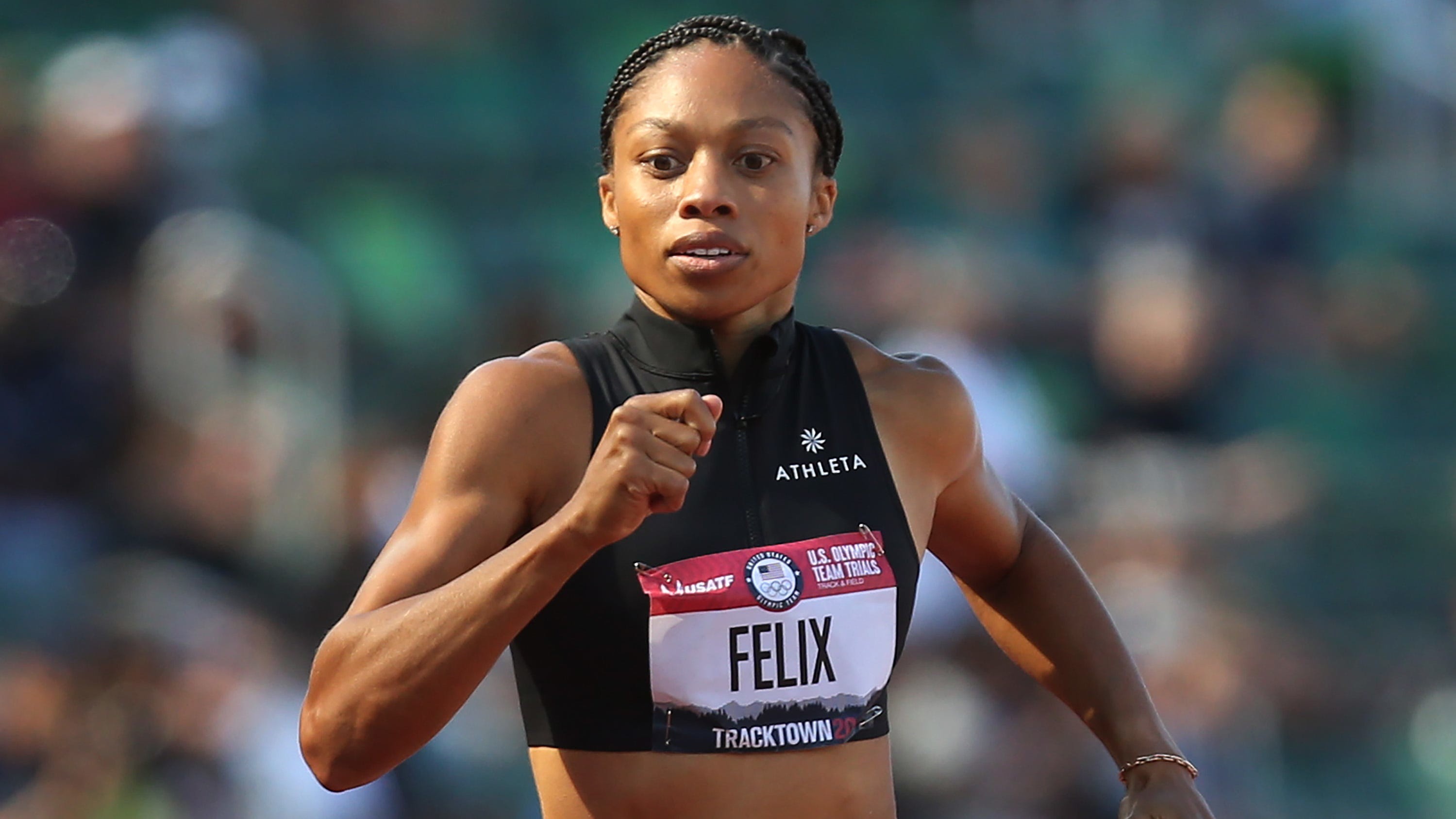
Time first reported on Felix’s shoe launch. In an interview with the magazine, Felix said the women’s footwear market is underserved, and that the mentality has often been to “shrink it and pink it.”
“It’s really about meeting women where they are,” Felix said. “It’s for that woman who has been overlooked, or feels like their voice hasn’t been heard.”
Felix departed a deal with Nike in 2019 after she said the company wanted to pay her 70% less following her pregnancy. She has since been invested in raising awareness around health-care inequities facing Black mothers.
Felix serves as Saysh president, while her brother and business partner Wes holds the CEO title. The company has raised $3 million in seed money from a broad range of venture investors, according to Time.
It’s unclear if Athleta, where Felix has a multiyear sponsorship deal to design clothing, will begin to carry the shoes in the future.
by Lauren Thomas
Login to leave a comment
Bromell back to his best while Felix and Winkler make history in Eugene
Three years ago, it seemed implausible that Trayvon Bromell and Allyson Felix would represent the United States at a 2020 Olympic Games. Bromell was coping with a debilitating sequence of injuries, and Felix was coming off a difficult childbirth.
Now that it is the 2021 Olympics, they will be running for medals in Tokyo.
Bromell won the 100m in 9.80 (0.8m/s), and Felix made her fifth Olympic team during the USA Olympic Trials on Sunday night (20) in Eugene, Oregon.
The 25-year-old Bromell once thought his end had come. He left the Rio Olympics in a wheelchair after aggravating a heel injury.
He has had two achilles surgeries over the past five years, and in a span of three-and-a-half years ran three races. He was effectively out of athletics. He credited religious faith for turning around his life, on and off the track.
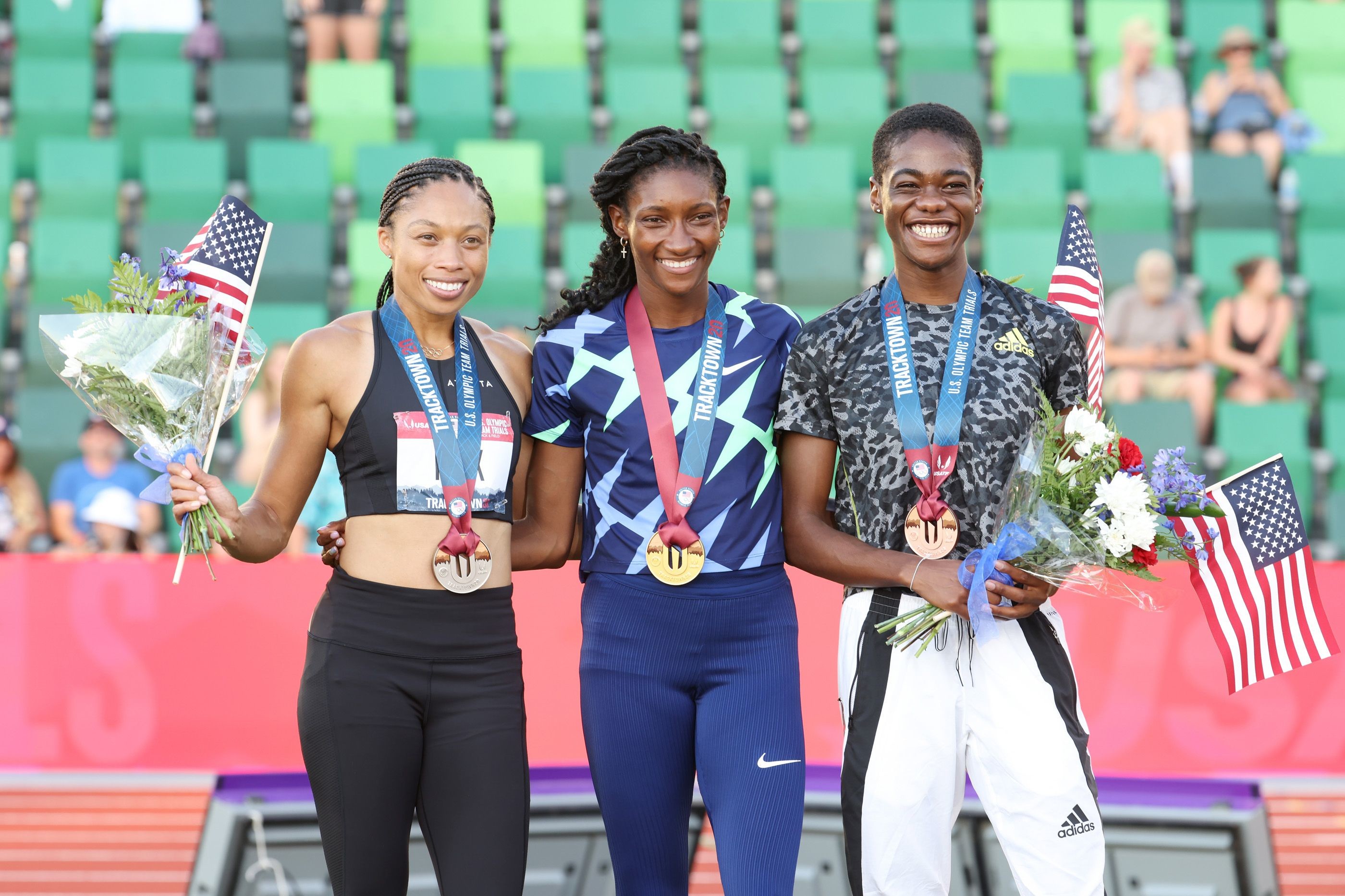
“When I went down in 2016, I realised I didn't know what was going on,” he said. “In 2018, I wondered if I wanted to live anymore. What resource am I not going to for this change?
“My mom told me to try God. Since devoting myself, things have changed.”
In a high-quality final, the top four men finished inside 9.90, and 9.91 – recorded by teenager Micah Williams of host University of Oregon – was only sufficient for fifth place. It was the fastest first five in trials history.
Ronnie Baker and Fred Kerley, the latter dropping down from the 400m, claimed the two other Olympic spots, finishing second and third respectively in 9.85 and 9.86. 200m specialist Kenny Bednarek was fourth in 9.89. World 200m champion Noah Lyles started poorly and was seventh in 10.05.
Following this victory and his world-leading 9.77 from earlier this month, Bromell will head to Tokyo as a gold-medal favourite.
“I feel with confidence sometimes comes complacency. And for me, I don't like to get complacent,” he said. “For me, I'm still going to go home and train as if I'm not being talked about at all.”
On a day celebrated as Father’s Day, the top two in the women’s 400m were both mothers.
Quenara Hayes – who became a mother in October 2018 and has this year returned to sub-50-second form – finished first in 49.78, just 0.06 shy of the PB she set when winning the 2017 US title.
Felix closed rapidly to clock 50.02. Third spot was taken in 50.03 by Wadeline Jonathas, who was fourth at the 2019 World Championships. Kendall Ellis clocked 50.10 for fourth place, narrowly missing a team spot by just 0.07.
“When your body is out for eight to nine months, plenty of nights I would cry,” said Felix. “I was trying to rush the process.”
Felix made the team, 17 years removed from winning a 200m silver medal in Athens in 2004. She gave birth to a daughter in 2018, and she was at Hayward Field to see her mother race.
“There has been so much that has gone into this,” Felix said, “and there were many times where I didn't think I would get to this moment.”
She said she was “absolutely sure” she would not try for Paris 2024.
by World Athletics
Login to leave a comment
What to Watch For in the U.S.A. Track & Field Olympic Trials
For months, they have trained in relative isolation. They have triple jumped in empty stadiums and chased qualifying standards on high school tracks. You may have heard this before, but the pandemic created challenges for American track and field athletes.
For those who managed to push through the long delay, a meet five years in the making has finally arrived: The U.S. Olympic track and field trials are set to start on Friday afternoon at the University of Oregon’s Hayward Field, a freshly renovated stadium that — barring something else unforeseen — will also host the world championships next year.
But first come the trials. As athletes from across the country bid to compete at the Tokyo Games this summer, here is a look at what to watch over the coming days:
What’s the schedule?
Glad you asked. It is a long meet — 10 days, with two rest days built in the middle — running from Friday through June 27. There are 40 events in all (20 for the women, 20 for the men), with preliminary rounds for most of them. On Friday, for example, there are preliminary rounds in events ranging from the women’s discus to the men’s 800 meters. There are also two finals scheduled for the first day, in the men’s shot put and the men’s 10,000. On Sunday, eight more champions will be crowned, including in the men’s 100. (More on that later.)
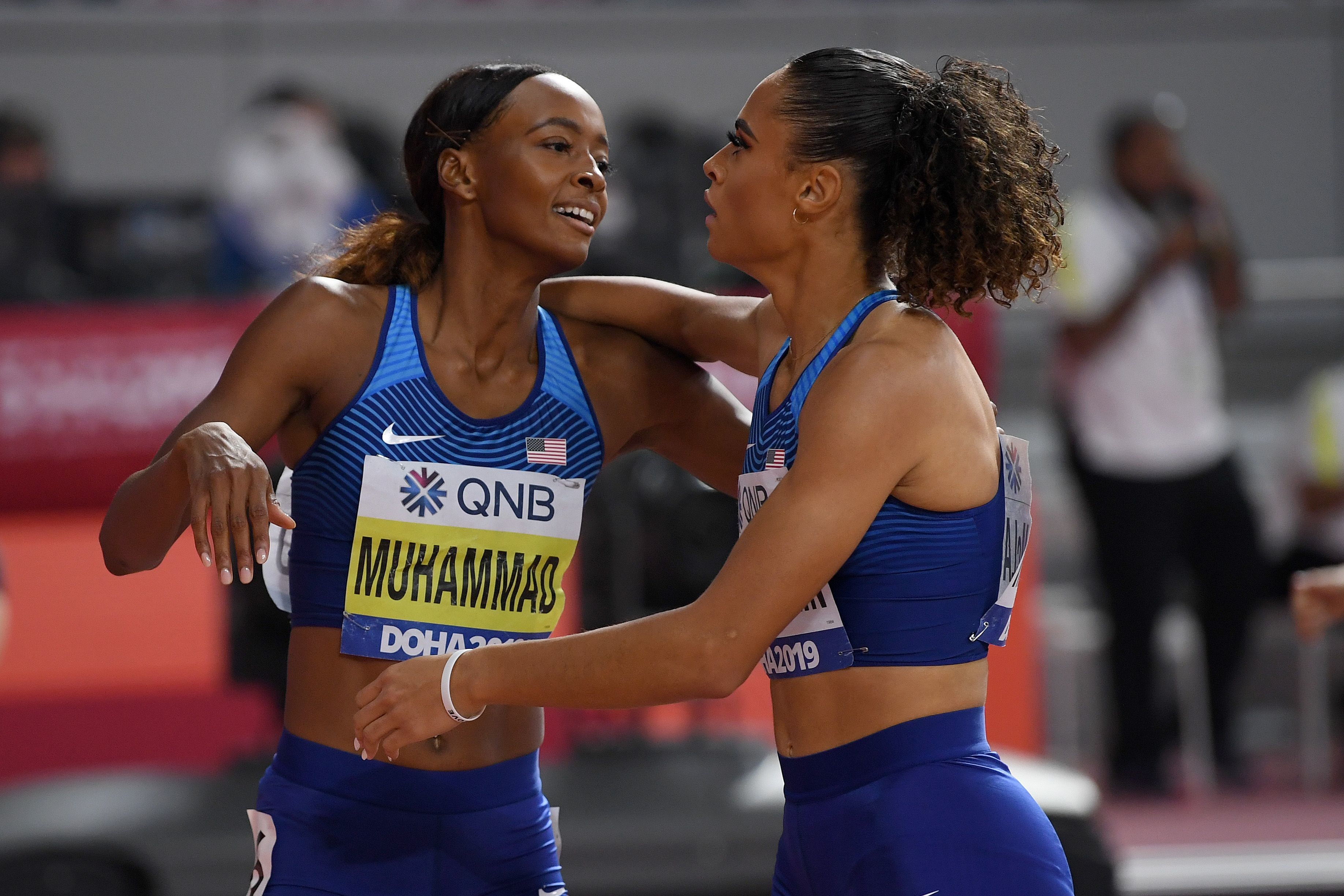
So who gets to go to the Olympics?
The top three finishers in each event qualify, provided they have reached the Olympic standard. If not, they have until July 1 to attain it.
Who are some of the most compelling athletes to watch?
Any list like this has to start with Allyson Felix, the nine-time Olympic medalist who is aiming to compete in her fifth and final Olympic Games. A onetime prodigy who is entered in the 200 and 400 meters, Felix, 35, long ago secured her place as one of the sport’s most revered and respected figures. She has advocated for gender equality since giving birth to her first child in 2018.
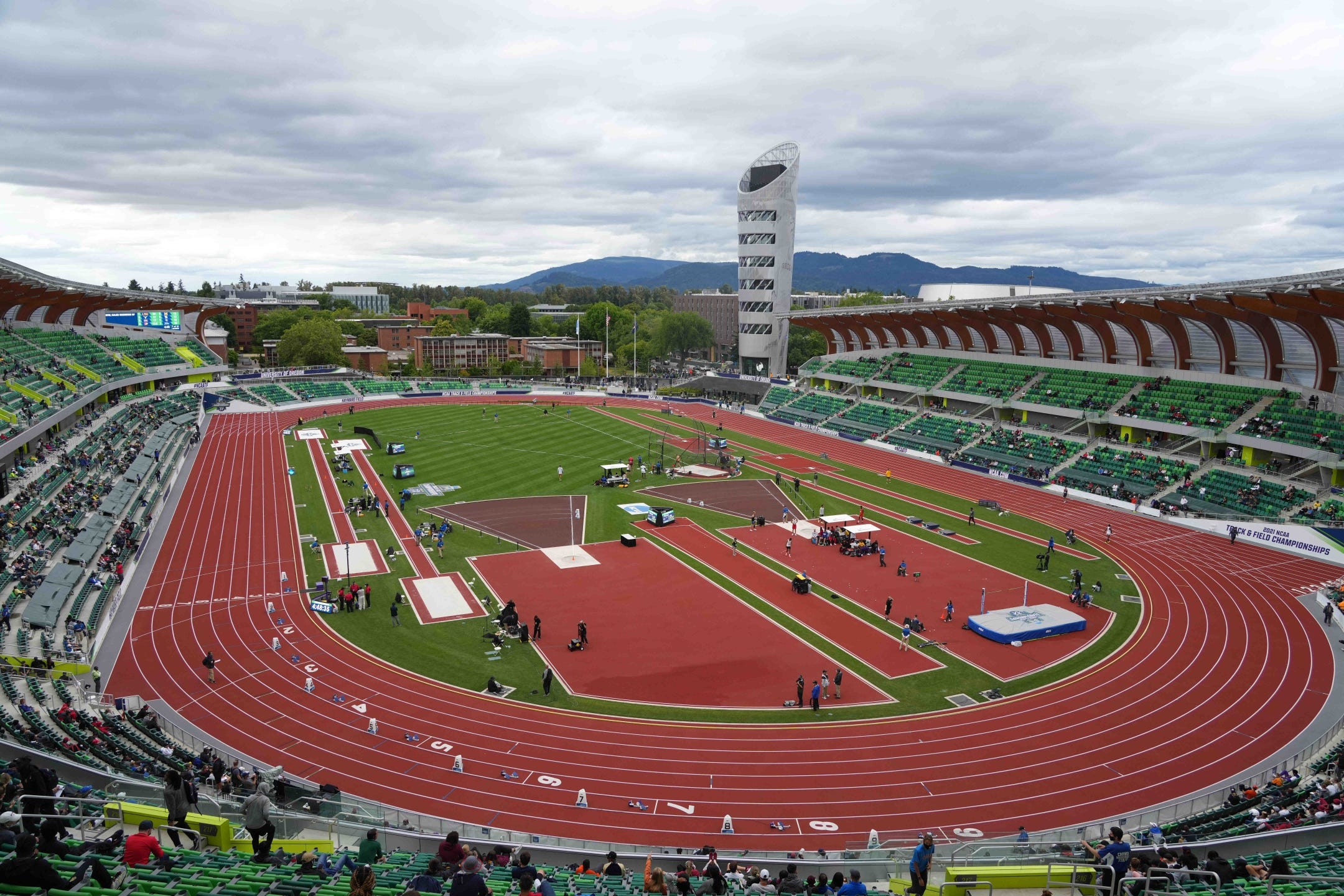
Felix’s retirement will leave a void among the American women, and Sha’Carri Richardsonseems prepared to help fill it. In April, she ran the sixth-fastest 100 in history. Richardson, just 21, is unapologetically brash while consistently coming through with fast times and big performances. She is easy to spot, too: Just look for her colorful hair.
In the women’s 1,500 meters, Elle Purrier St. Pierre is the favorite after a string of convincing victories this season. She grew up on a dairy farm in Vermont, where she would train by running to the Quebec border and back. Her sponsors include Cabot Cheese.
Donavan Brazier is the American record-holder and reigning world champion in the men’s 800. He seems determined after failing to qualify for the Olympics in 2016.
And Sam Kendricks, who has won back-to-back world men’s pole vault championships, is the heavy favorite in Oregon. His toughest competition figures to be in Tokyo, where Mondo Duplantis, who grew up in Louisianabut competes for Sweden, will be waiting. Duplantis, 21, already owns the world record but is seeking his first Olympic gold.
How about a few must-see events?
No, we didn’t forget about Noah Lyles, the world champion in the men’s 200 meters. Lyles wants to double in the 100 and 200 meters in Tokyo, and his 100-meter form has been coming along slowly. He will face a loaded 100-meter field in Eugene, Ore., headlined by the likes of Trayvon Bromell, who has run the fastest time in the world this year, and Justin Gatlin, the five-time Olympic medalist who has twice been suspended for doping. Americans have the six fastest 100-meter times in the world this year — and Lyles is not among them.
The field in the men’s 1,500 is also competitive. Matthew Centrowitz, the 2016 Olympic champion, was injured last year and benefited from the postponement. Craig Engels is the 2019 national champion, but he is equally renowned for his mullet. There is also a group of up-and-comers headlined by Cole Hocker, fresh off an N.C.A.A. title at Oregon, and Hobbs Kessler, the fastest high school miler ever.
The most anticipated showdown, though, could materialize in the women’s 400-meter hurdles. At the 2019 world championships, Dalilah Muhammad, 31, had to break her own world record to outrun Sydney McLaughlin, one of the sport’s rising stars. Muhammad, the Olympic champion in Rio, has been working in recent weeks to return to form after injuring her hamstring. McLaughlin, 21, spent much of the spring fine-tuning her speed and technique while competing in the 100-meter hurdles. If both athletes are healthy, their final — held on the final day of the meet — should be a highlight.
Who’s missing?
The trials got a harsh dose of reality this week when Shelby Houlihan, the American record-holder in the women’s 1,500 meters, was suspended from competing for four years after she had tested positive for an anabolic steroid. Houlihan has maintained her innocence, claiming she ate tainted pork from a food truck. For about eight hours Thursday, it seemed that Houlihan might still be able to run while she appealed the ban, but ultimately the U.S. Olympic & Paralympic Committee stepped in and said that she could not participate in the trials.
Speaking of suspensions, that deep field in the men’s 100 meters is missing an important name: Christian Coleman, who won the 2019 world championship under a cloud of suspicion, and was subsequently suspended for missing a series of drug tests.
Also absent will be Christian Taylor, the two-time Olympic champion in the men’s triple jump. Taylor ruptured his Achilles’ tendon at a meet last month and underwent surgery. He has vowed to make a comeback in time for next year’s world championships.
On the bright side, several American runners will not be at the trials — but only because they have already punched their tickets for Tokyo. We are referring, of course, to the marathoners, whose trials were staged all the way back in the prepandemic era, in February 2020. Galen Rupp, Jacob Riley and the seemingly ageless Abdi Abdirahman, 44,qualified for the men, while Aliphine Tuliamuk, Molly Seidel and Sally Kipyegomade the women’s team. (Rupp, a two-time Olympic medalist, is expected to compete in the 10,000 on Friday, though he told OregonLive.com last month that he would treat the race as a rigorous training run and appears to have no intention of running the track event in Tokyo.)
Is it on television?
NBC and NBCSN will provide live daily coverage of the meet.
by Scott Cacciola (NY Times)
Login to leave a comment
Some Veteran Pro Runners Are Making Less This Year, and They're Ditching the Sport
Many athletes are confronting a bleak financial reality. Some are quitting the sport entirely.
What do Noah Droddy, Ben True, and Andy Bayer have in common?
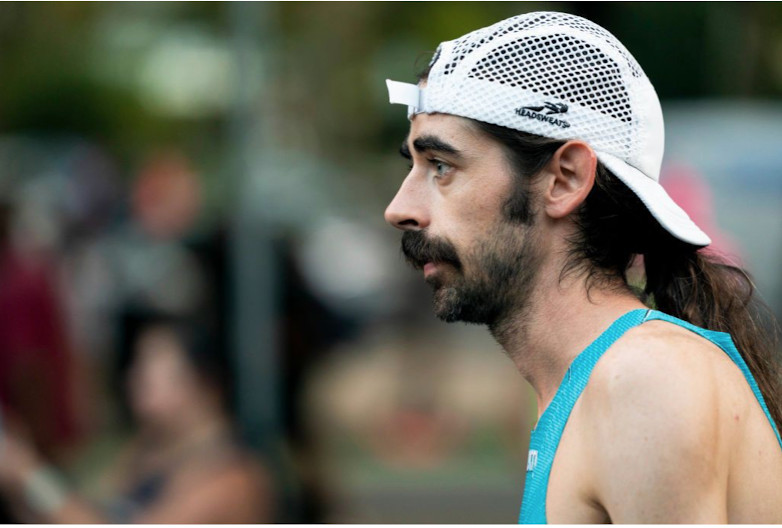

They’re all ranked among the top 10 Americans of all time in their events—Droddy in the marathon, True in the 10,000 meters, Bayer in the steeplechase.
How Much Do Pro Runners Make? For Some Veterans, It’s Less This Year
And they were all dropped by their sponsors at the end of 2020.
This news took a while to seep out—after all, athletes don’t tend to publicize it when their sponsors reduce their pay or stop supporting them altogether. But Droddy, 30, and True, 35, have been open about their status and confirmed it in calls with Runner’s World (both had been sponsored by Saucony), and Bayer told the Indy Star that Nike dropped him and he has left the sport, at age 31, for a job in software engineering.
Droddy—one of running’s most recognizable figures in races with his long hair, backward baseball cap, and habit of losing his lunch at marathon finish lines—summed up his situation in a tweet on February 19.
Is he right? Is it typical for top runners, at the height of their careers, to lose financial backing from shoe companies? Or is this an anomaly at the end of an unusual, pandemic-marred 15 months?
Runner’s World had conversations with eight athletes, four agents, two marketing employees at brands, and three coaches to get a sense of the current economics for athletes. They painted a complex picture.
Are most pro runners broke?
Many are just getting by. For years, America’s pro runners have been on shaky financial footing. With the exception of those who win global medals or major marathons, distance runners often struggle to earn enough money to pay for their essentials (rent and food), plus cover all their running-related expenses, such as coaching, travel to races and altitude camps, health care, gym membership, and massage.
Over the past year, the pandemic has erased lucrative racing opportunities. Additionally, shoe companies have been reevaluating their sports marketing budgets, from which runners are paid. Experts say that the result has been an increasing bifurcation between the sport’s haves and have nots.
The most successful, those destined for the Olympic team or starring on the roads, are earning generous base payments and bonuses for setting records or winning. Many of the rest are scraping by, with smaller contracts, if any, and they’re supplementing their shoe company earnings with jobs.
Running’s middle class, much like America’s, is shrinking.
The exception is runners who belong to a single-sponsor training group, like those in Flagstaff, Arizona (Hoka); Boston (New Balance); and Portland, Oregon (Nike). In those cases, coaching, travel, and training camp costs are absorbed by the club, easing the financial pressure on athletes and making it possible for them to pursue the dream.
Brands these days appear to be more eager to devote dollars to groups and the athletes who train with them, rather than individual athletes training on their own in different locations. That presents a quandary for midcareer runners who have achieved a level of success. Faced with the loss of a sponsorship, they aren’t always willing to pick up and move to a new town and a new coach.
What do contracts look like?
If you’re a top runner in the college ranks, and you’ve won multiple NCAA titles at the Division I level, shoe companies—Nike, Adidas, Brooks, Saucony, Hoka, and others—will usually come calling, offering more than $100,000 a year for multiple years, with a spot in a group or a stipend to pay your coach. Those companies are betting on those NCAA champions to be Olympians of the future.
Dani Jones, for instance, won three individual NCAA titles at the University of Colorado, and she signed with New Balance at the end of last year. Her agent, Hawi Keflezighi, said she entertained competing offers from other companies.
A midcareer athlete with a breakthrough performance—hitting the podium at a major marathon or making an Olympic team, for instance—might also be rewarded with a base contract worth $50,000 to $100,000.
The top sprinters earn even more (although their careers are typically shorter). Usain Bolt famously made millions, and Canadian sprinter Andre De Grasse was 21 when he signed a deal worth $11.25 million—before bonuses—from Puma in 2015, the Toronto Star reported.
The payouts drop significantly after that. Let’s say you’re a distance runner, but you haven’t been able to get a big win in college, although you’ve come close. The lucky ones are looking at deals for about $30,000 to $75,000 per year.
Your agent takes a 15 percent cut of that. And this base salary most often comes without benefits: no health insurance, no 401(k). As independent contractors, pro runners are paying all their own taxes. (In contrast, traditional full-time employees have half of their Social Security and Medicare taxes paid by the employer.)
Many young runners out of college join pro groups, and they’re not making anything beyond free gear and coaching. Others might get a stipend worth $10,000 or $12,000 a year.
The contracts typically sync with the Olympic calendar. At the end of 2020, many athletes’ contracts were expiring—even though the Olympics didn’t happen. That’s how Droddy, True, and Bayer were dropped. Shannon Rowbury, a three-time Olympian, told Track & Field News her deal with Nike was extended for one year, two if she makes the Olympic team this summer.
If an athlete has a good Olympics, the sponsoring company often has an option to extend the deal for an additional year, which includes the world track & field championships. It’s at the company’s discretion—not the athlete’s.
Parts of the sponsorship model appear to be changing, but slowly. When NAZ Elite announced a new deal with Hoka last fall, it included health insurance for the runners. Similarly, members of Hansons-Brooks in Rochester, Michigan, get health insurance if they work in the Hansons running specialty stores. And last May, Tracksmith brought Mary Cain and Nick Willis on as employees at the company—Cain in community engagement, Willis as athlete experience manager—with the plan that both would continue to train and race at an elite level.
Why doesn’t anyone know exactly how much runners are making?
As part of these deals, athletes have to sign non-disclosure agreements (NDAs), promising to keep the terms quiet. If an athlete violates the NDA, the sponsor can void the contract—or sue for breach of contract.
This is, in fact, similar to other sports. In basketball, LeBron James is being paid $39.2 million this season by the Los Angeles Lakers. But he also has an endorsement deal with Nike, and the exact structure of that is unknown.
In running, prize purses are publicized—$150,000 for winning the Boston Marathon, $25,000 for being the top American at New York in 2019, $75,000 for winning the Olympic Marathon Trials.
But as in other sports, the terms of the sponsor deals are kept mum. And appearance fees at major races, as well as time bonuses within those appearance fees, which represent a major source of income for road runners (mainly marathoners), are also mostly unknown.
Athletes feel that the silence around sponsor contracts and appearance fees puts them at a disadvantage—it’s hard to know their market value. Yes, they can—and do—have quiet conversations with peers about it. But lacking broad knowledge, they lack power.
And as a result, the industry is rife with rumors and assumptions. Athletes’ values are often inflated through the grapevine.
“I think it is very similar to the dynamic that would occur if no one knew the price of home sales,” Ian Dobson—a 2008 Olympian who ran for Adidas and Nike during his pro career, which ended in 2012—told Runner’s World. “How could you ever be confident in a sale price if you didn’t know what any other homes in your neighborhood were selling for? Granted, we don’t know every detail of every home sale in the neighborhood, but it’s certainly helpful to know in general terms the dollar amount that these are going for so that we can all understand what value our home might have.”
Also, athletes keep quiet when their circumstances change. They feel embarrassed. One athlete told Runner’s World, “No one in track wants to be the one to say, ‘I got dropped,’ or ‘I got reduced.’ It's all taboo.”
Even so, $30,000 is nothing to sneeze at—especially for a job that’s about pursuing individual goals.
No, it’s not. But not every contract is structured the same way.
Some pay that base amount, no matter what. Other contracts penalize athletes with reductions if, for instance, they don’t finish in the top three in the country in Track & Field News rankings, or if they get injured and can’t race a certain number of times per year.
That’s why numerous Nike athletes seemed to be eagerly seeking racing opportunities of any kind last summer amid the pandemic. Marathoner Amy Cragg raced a 400 meters at an intrasquad meet on July 31, and finished in 90.15 seconds—6:00 pace—presumably to check a box on her contract. On August 7, she ran 800 meters in 3:03.85. The record of those races are in her World Athletics profile.
A Nike spokeswoman, when asked about athletes racing in 2020 to meet contractual obligations, responded: “We do not comment on athlete contracts.”
Time bonuses, once seen as a reliable way to beef up athletes’ base payments, are also becoming less frequent or harder to hit, as shoe technology improves and fast times become more common, according to one agent.
What role do agents play?
For athletes who have never previously had a sponsorship deal, it’s almost impossible to secure one without the help of an agent, who can get in the door at all the major brands.
For American distance runners, there are nine main agents—all men—negotiating the deals (Keflezighi, Josh Cox, Paul Doyle, Ray Flynn, Chris Layne, Dan Lilot, Tom Ratcliffe, Ricky Simms, and Mark Wetmore). Karen Locke, one of the few female agents in track and field, represents a few distance runners among her roster of clients in field events.
Of course, all the prominent agents—who have multiple clients across multiple brands and at various stages of their athletic careers—have data about what athletes are worth. But they have a duty to each one to maintain confidentiality about the specifics of that deal.
Agents bring to their athletes a broad picture of the market and what each might command, providing advice to those considering offers: Yes, this a fair offer, a solid deal. Or no, you can do better.
They also help get athletes into competitive track races like the Diamond League and elsewhere, or into the World Marathon Majors. They can handle travel arrangements to meets and help to make sure records get ratified. Generally, their role is to go to bat for athletes, no matter what they need.
For their services, they take 15 percent of everything an athlete earns: sponsor deals, appearance fees, and prize money, no matter how small the race or winnings.
Agents are supposed to negotiate on behalf of each client individually, but athletes have no idea if that’s happening. Are they being used as part of a package deal? Thrown in at a minimal rate as a thank you to a brand for giving a generous deal to a superstar? Or, on the upside, getting a small appearance fee from a major marathon that they wouldn’t be able to get into on their own, because they have the same agent as a mega-star?
“Agents want to bring in the most money for their combined athletes—if they manage 20 athletes, they’re trying to bring in the maximum money they can across 20 athletes,” one athlete told Runner’s World. “That doesn’t necessarily mean they’re trying to maximize for each individual. The difference between earning $20,000 a year and $30,000 a year is profound in terms of your ability to actually train as a professional. But it translates into a small amount [$1,500] for the agent.”
Why is the market tricky right now?
The pandemic caused upheaval in marketing budgets. Also, the people who work in marketing at shoe brands can be inexperienced in the running industry, and turnover often runs high at those positions, jeopardizing relationships between athletes and brands that have lasted years.
The marketing budget questions are not limited to running, said Matt Powell, a sports business analyst and vice president for NPD.
“I think brands are taking a more circumspect view of endorsement contracts in general—whether it’s teams, leagues, or individual athletes,” he said. “They’re [questioning whether] they’re getting the return on that investment.”
Nike is rumored to have cut its marketing budget for running, amid layoffs at the company. Nike did not return an email from Runner’s World seeking clarification on the budget or the numbers of runners it currently sponsors.
Although Nike’s superstars are said to be fine and not facing any reductions in their deals, one Nike athlete, a 2016 Olympian, told Runner’s World, “It’s pretty much assumed that everyone is getting less.”
And it’s believed that several of these contracts are for shorter periods of time than they might have otherwise been: through the world championships in 2022 in Eugene, Oregon, instead of through the next Olympics in 2024.
In answer to questions from Runner’s World about True and Droddy—as well as rumors about a new Saucony-sponsored training group—Saucony responded with an emailed statement from Fábio Tambosi, Saucony’s chief marketing officer:
“At Saucony we believe you cannot have a sports brand without the inclusion and authentic connection with athletes. We are excited about the evolution of Sports Marketing as a brand pillar for years to come, and remain committed to building an athlete strategy that aligns with this goal.” 

Good news abounds, too
On the positive side for distance runners, Puma has re-entered the distance running market. Molly Seidel was lured from Saucony to Puma, and Aisha Praught Leer told Women’s Running she signed a “big girl contract” with Puma. Additionally, the company started a group in North Carolina, coached by Alistair Cragg and with three athletes so far.
The shoe company On has also invested heavily, starting a new team in Boulder, Colorado, coached by Dathan Ritzenhein and with athletes like Joe Klecker and Leah Falland.
Keira D’Amato, 36, signed her first pro contract, with Nike, after a string of impressive performances during the pandemic on the track and roads. She has kept her job as a realtor.
Keflezighi sees an opening for apparel brands that don’t have footwear to sponsor more athletes. Women’s apparel company Oiselle has done this for years, and Athleta is now sponsoring Allyson Felix. Could a menswear company be far behind? These arrangements leave athletes free to choose their own running shoes, which can be advantageous as shoe technology advances so quickly.
Why do brands have pro runners anyway?
Beyond the individual dollar amounts in contracts, brands seem to be rethinking what the role of a professional athlete is. Is it to inspire with performances, and hope those performances translate into shoe sales? Or is it to connect with fans on social media and promote product sales that way?
“You have to kind of look at it big picture,” True told Runner’s World. “These companies aren’t giving athletes money for charity; they’re doing it for a marketing investment and they’re looking for a return on their investment. And currently—and this is not ideal, in my mind—you look at the rise of social media and influencers. They are very inexpensive for marketers to go after and they get their products in front of a lot of eyeballs.”
A 2:20 male marathoner who also has a drone and a great Instagram account or YouTube channel might be gaining followers, True said, while a 2:05 marathoner is training hard and devoting his craft toward the next race.
“The average person, they don’t understand that 15-minute difference,” he said. “One historically will cost that company a lot of money. The other does not cost much at all and will get a whole lot more eyeballs on the product. You have to understand that.”
In his nine years with Saucony, True, training on his own in Hanover, New Hampshire, was part of only one ad campaign the company ran. The company preferred to use models for its ads and catalogs.
In February, True ran 27:14 for 10,000 meters, a personal best and faster than the Olympic standard. He wore Nike spikes and a plain yellow singlet. If all goes according to plan, he’ll race the U.S. Olympic Track and Field Trials in June and try to make his first team. His wife, professional triathlete Sarah True, is pregnant and due in July. And after that, he’ll run a fall marathon. True intended to debut at the marathon last fall, before the pandemic canceled all the races.
He’s moving ahead and training hard, despite the financial uncertainty. “I would have loved to have spent my entire career with Saucony,” he said. “I very much enjoyed working with them. I’ve been fortunate enough that I have had probably a lot more support than many other people in my position. That’s been nice.”
At this point, he is hoping another company will pick him up to take him through the next few years. “If a company just gave me a bonus structure that is fair for the result, I’d be happy with that,” he said. “It’s not like we’re looking for huge amounts of money. I’m very pragmatic and very realistic. I don’t think you should be paid for potential; I think you should be paid for results.”
by Runner’s World
Login to leave a comment
U.S. Olympic Marathon Trials winner, Tuliamuk Has Petitioned to Have Her Daughter Accompany Her to the Tokyo Olympics
Aliphine Tuliamuk, the winner of the U.S. Olympic Marathon Trials, has petitioned organizers of the Tokyo Olympics to allow her four-month old baby to come to the Games with her, according to The Washington Post.
Tuliamuk, who secured her Olympic berth on February 29, 2020, and her fiancé Tim Gannon were planning to start a family after the Summer Games. But when the Games were postponed because of the coronavirus pandemic, they moved their timeline up, and Tuliamuk gave birth to their daughter Zoe on January 13.
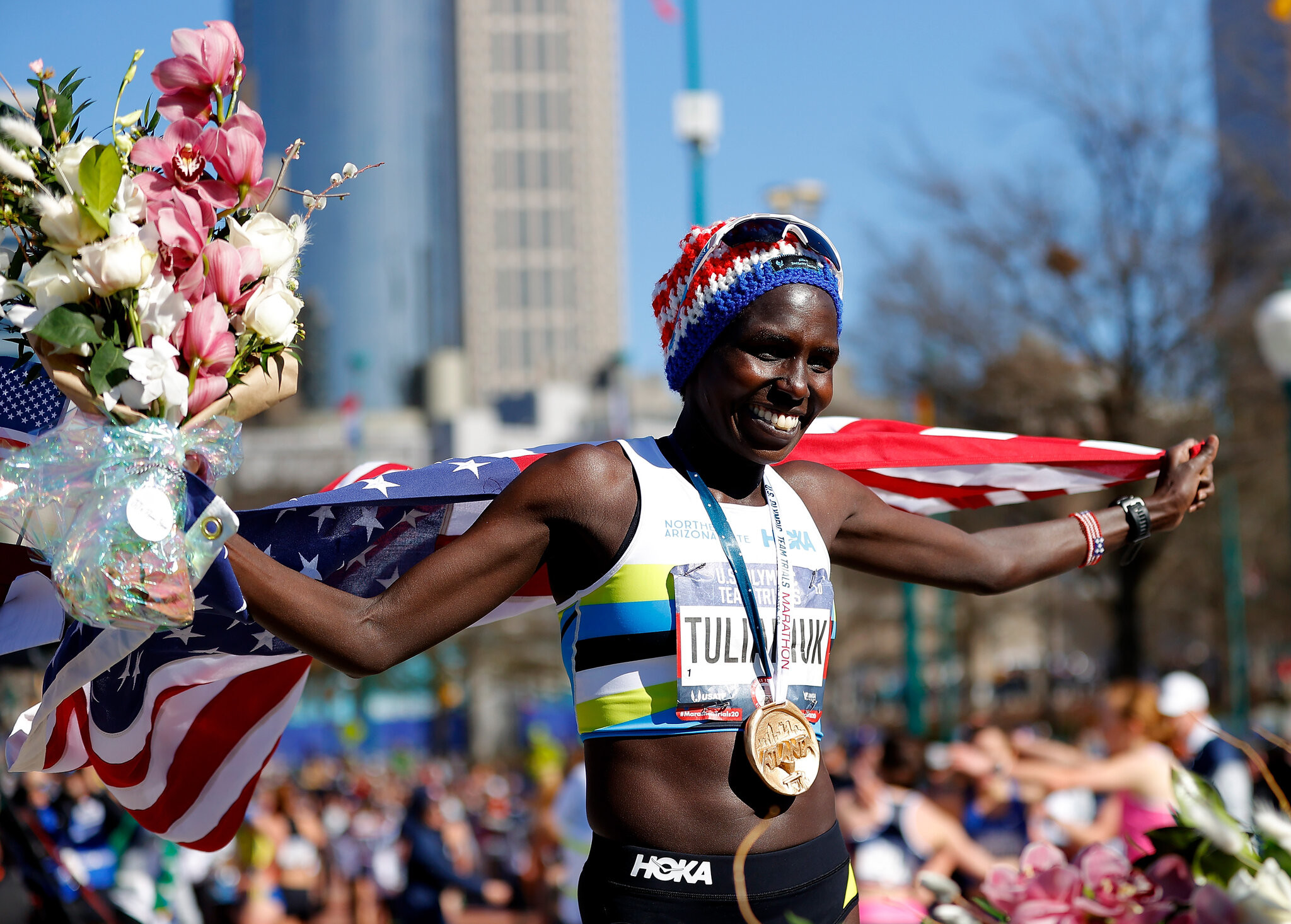
In March, the International Olympic Committee announced that no foreign spectators would be allowed at the Games in August. At the moment, this means that Zoe and Gannon wouldn’t be allowed to travel to the event.
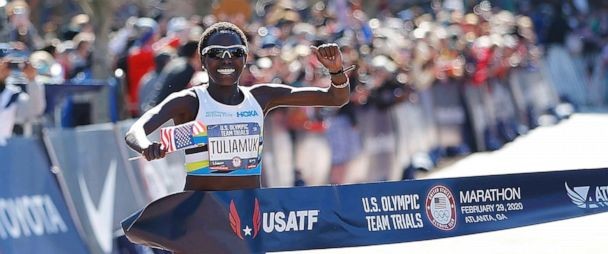
“If I’m going to perform my best, she’s going to have to be there with me—and I hope she will be,” Tuliamuk said to The Washington Post.
Tuliamuk added that Zoe is still breastfeeding and has spent very little time away from her.
In a statement to the Washington Post, the IOC said, “National Olympic Committees [NOCs] are responsible for the composition of their delegations at Games time and the IOC is aware that a small number of them have been dealing with requests from athletes to bring their children on a case-by-case basis.”
The way things are set up now, Team USA is allowed to being around 600 persons to the Games, which includes athletes, trainers, coaches, and more. If Zoe and Gannon attended, two people would have to be removed from the current roster, according to The Washington Post. No family or visitors are allowed to attend as the local government stipulations state.
The USOPC said in a statement to the Washington Post that it is handling the case, but not decision has been made yet.
Tuliamuk likely isn’t the only athlete in this situation. Other mothers in sports—such as tennis star Serena Williams, soccer star Alex Morgan, and nine-time Olympic medalist Allyson Felix—have raised similar concerns.
Tuliamuk will wait until a decision is rendered to decide what to do.
“I’m grateful to know everyone is working really hard to help make this work,” Tuliamuk said. “I’m just not ready to leave her behind.”
by Andrew Dawson
Login to leave a comment
Tokyo 2020 Olympic Games
Fifty-six years after having organized the Olympic Games, the Japanese capital will be hosting a Summer edition for the second time, originally scheduled from July 24 to August 9, 2020, the games were postponed due to coronavirus outbreak, the postponed Tokyo Olympics will be held from July 23 to August 8 in 2021, according to the International Olympic Committee decision. ...
more...COVID-19 restrictions for Tokyo Olympics shouldn't apply to female athletes' infants, toddlers
A few days shy of her first birthday, Alex Morgan’s daughter Charlie is already more well-traveled than most adults.
There were the two-plus months in England, when Morgan was playing for Tottenham. The week in the Netherlands, followed by a few days in France, for U.S. women’s matches. There’s likely to be another trip in June for pre-Olympic warm-up games.
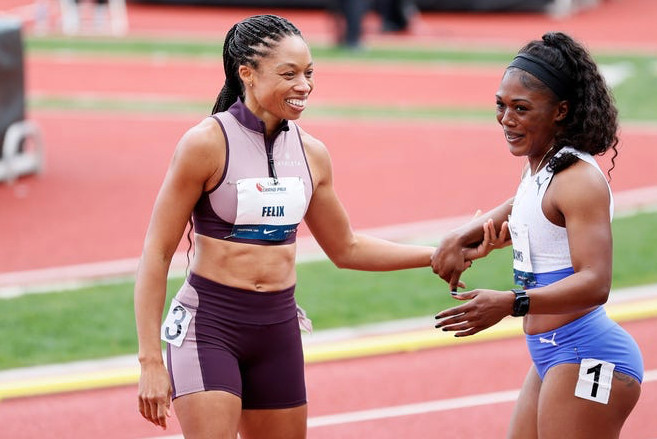
“It’s important to allow mothers that option, to have their kids with them while they compete. I’ve been lucky to be able to do that with every single camp and matches with Charlie,” Morgan said last month. “It’s incredibly important to feel supported as a mom. I hope I continue to feel that way leading into the Olympics and in the Olympics.”
But COVID-19 restrictions for the Tokyo Games could force Morgan and a small number of other athletes who are mothers of small children to choose between their dreams of competing at the Olympics and their families.
At previous Olympics, children of competing athletes would come to the Games like any other family member. Visas, if necessary, would be arranged, and they would travel with their other parent, another family member or caregiver. The family would either stay together outside the Olympic village, or moms would arrange to see their children between training and competitions.
That won’t be possible this summer. Japan is desperately trying to keep the Olympics and Paralympics from turning into a superspreader event, and the International Olympic Committee and Tokyo organizers have already said foreign fans won’t be allowed at the Games.
Japan also currently bars entry to residents of 152 countries “unless special exceptional circumstances are found,” meaning someone from the United States – and pretty much every other country sending athletes to the Games – can’t simply get on a plane and go to Tokyo.
But if allowing female athletes to bring their infants and toddlers to the Tokyo Games doesn’t qualify as a “special exceptional circumstance,” I don’t know what would.
“I would be most sensitive to moms that are breast-feeding, new moms, moms with very small babies,” sprinter Allyson Felix, whose daughter Camryn turned 2 in November, said last month. “I know how crucial that is. I know for me, when I competed when Cammy was under a year old, you need to be near your child. That needs to be taken into consideration for those mothers.”
Tokyo organizers did not respond to questions about whether female athletes will be allowed to bring their young children. IOC spokesman Christian Klaue said women athletes who want to bring their children to Tokyo will be dealt with on a case-by-case basis, without pr
Of course it will be crushing for partners, parents and siblings to miss what is, for many athletes, a once-in-a-lifetime event, and if any family members are allowed, no doubt everyone will be clamoring to go. But prohibiting babies and toddlers from accompanying their mothers to the Games is not remotely the same, and the IOC and Tokyo organizers need to acknowledge that.
This isn’t a matter of, “Oh, I want to have a selfie with my baby at the finish line.” For female athletes with an infant or a toddler, not having them in Tokyo can have a direct impact on their child-rearing decisions.
And their children’s health.
Breastfeeding benefits a child’s physical and cognitive development, and the World Health Organization – which the IOC relies on for medical advice – recommends children be breastfed “up to 2 years and beyond.” Research also indicates that mothers who have been vaccinated are passing COVID antibodies to their babies through breast milk, but that immunity only lasts so long as the child is nursing.
It’s possible athletes who are nursing and want to continue to do so could pump at the Games. But depending on the age of the child, that could require several hours each day.
“I am still nursing Zoe and cannot imagine her not being with me,” marathoner Aliphine Tuliamuk, whose daughter was born in January, told USA TODAY Sports in a statement. “There are many more challenges than usual at this Olympic Games, but I do hope that the needs of mothers, families and children are given full consideration and support."
Everyone is sympathetic to the challenges of holding an Olympics during a pandemic, as well as the concerns of the Japanese people. But allowing women athletes to bring their infants and toddlers to Tokyo, along with a caregiver, would not add a significant number of people.
The United States typically has the largest team at the Olympics, 500-plus for a Summer Games, and this affects only a handful of its athletes. So at most we’re talking, what, a few dozen additional people?
It’s not a large number, but the impact is.
The IOC has made a big show in recent years of elevating women and promoting gender equity, and will proudly tout its statistics on female representation at the Games and in its leadership roles. In March, Tamayo Marukawa, Japan’s minister in charge of the Tokyo Games, said in a statement that the “active participation of women will lead to the creation of a prosperous, vibrant and sustainable society and the realization of a society in which everyone can live comfortably.”
By telling female athletes to leave their young children behind, however, the IOC and Tokyo organizers show how empty those words are. You cannot claim to value and respect women if you are not supporting and empowering them to make choices that are in the best interest of their families.
by USA Today
Login to leave a comment
Shaunae Miller-Uibo smashes stadium record in Eugene
World-leading marks achieved at this stage of the season don’t tend to leave too much of an imprint on the world all-time lists, but Shaunae Miller-Uibo’s 49.08 to win the 400m at the USATF Grand Prix in Eugene – the first World Athletics Continental Tour Gold meeting of 2021 – broke the stadium record for an iconic venue.
The Bahamian Olympic champion ran a well-timed race. She held a slight lead at half way and still had USA’s Lynna Irby for company on the final bend, but she opened up a clear margin on the rest of the field down the home straight to cross the line in 49.08, the fourth-fastest time of her career.
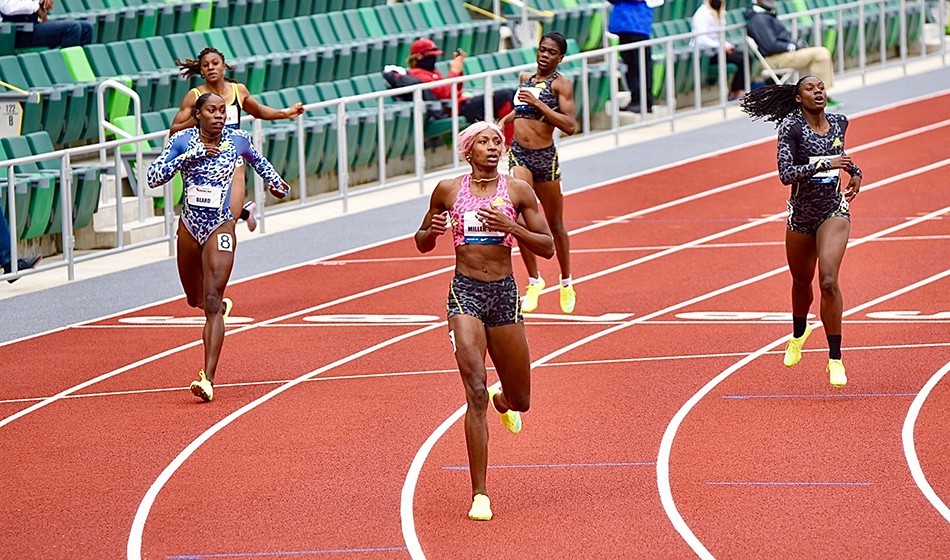
It also chopped 0.26 from the previous stadium record, set in 2003 by Ana Guevara. Global champions Sanya Richards-Ross, Allyson Felix and Tonique Williams-Darling are among the other past winners on the Hayward Field track, so Miller-Uibo will gain a boost in confidence knowing that she has out-performed such legendary athletes at this venue.

“The 400 is my favorite event, so I love coming in and trying to figure it out and having some fun with unravelling the secrets of it,” said the world silver medalist. “We’ve been really working on getting our strength up and now that we are in the middle of the season we are going to work on speed and getting ready to put down some great performances in the 200s.”
Irby finished second in 50.28, holding off Jessica Beard (50.38).
by World Athletics
Login to leave a comment
Athletes have reacted to Nike's pregnancy announcement
Decorated Olympic sprinter Allyson Felix calls it "beautiful and heartbreaking".
Nike’s latest advertisement is receiving mixed reactions from athletes and sports fans on social media. The ad, which includes the caption, “To every mother, everywhere: you are the toughest athlete,” features several clips of pregnant women and mothers participating in sports, and appears to be the company’s way of showing their support to pregnant athletes.
While the ad is a step in the right direction for the company, many athletes, including Allyson Felix, Kara Goucher and Alysia Montaño, are criticizing Nike for not acknowledging their past treatment of pregnant female athletes.
In 2019, Felix, Goucher and Montaño publicly criticized Nike for its treatment of sponsored athletes during and after pregnancy, and they called the company out for having no pregnancy protections in their contracts. Since then, Nike has announced a new pregnancy policy that protects female athletes from pay reductions for 18 months surrounding pregnancy. This new ad showing support for pregnant women is a welcome change and a step in the right direction, and while many athletes are supportive of it, they are pointing out one thing it’s missing: an apology.

Felix was among the first to express her opinion, which she shared in a Twitter thread. She began by praising the ad for its content, calling it powerful and saying it celebrates mothers and reminds them that they are athletes. She goes on to encourage her followers to watch the ad, but for a different reason.
“I agree with every word in this ad,” she said in a Tweet. “I also think you should watch this ad so that you will hold Nike accountable for it.”
She continues by saying that the ad was hard to watch, given her personal experience as a formerly Nike-sponsored athlete. She points out that it was she, along with several other athletes, who pushed Nike to support athletes’ maternity — a fact the ad fails to mention. Felix calls the ad “beautiful and heartbreaking,” saying that while it celebrates all the right things, it ignores the struggle it took to get to this point.
Goucher echoed Felix’s statements in a response to her thread, saying she appreciates the ad’s sentiment, but this level of support was not a reality for her or dozens of other mother runners.

“Acknowledging the way we were treated and receiving an apology (let alone the money withheld from us) would go so far,” she added.
Montaño added her comments in an Instagram post, saying while she is grateful for all the positive changes happening in the world of women’s sports, it is infuriating to watch Nike seemingly dismiss the past and fail to apologize for the experiences of past athletes.
“Yes. We want Nike to sponsor athletes and support them through pregnancy, and thereafter, but we want them to acknowledge the fight and the struggle that it took to get them to make a change,” she said. “We DO NOT WANT them to use our women to make money and while doing so forcing their athletes that have been mistreated to post advertisements as a way of sweeping their struggles under the rug.”
She goes on to highlight the work of other companies, organizations and brands who have a history of supporting women, including her own nonprofit, &Mother, and her partner brand, Cadenshae. Montaño concludes by saying that she and other athletes welcome Nike’s desire to support female athletes, but says they must rectify their former actions if they wish to do that.
Many others on Twitter and Instagram are commenting with support for the athletes, while also acknowledging the beauty and the power of the ad. This new ad by Nike is exactly the type of imagery we need to see, but coming on the heels of controversy over their treatment of pregnant athletes, it comes across as disingenuous to those who are familiar with the backstory.
by Brittany Hambleton
Login to leave a comment
Amy Hunt looks forward to the Olympics in Tokyo
The delay of the Games to sprinter Amy Hunt and the teenage sprinter’s eyes light up and she smiles. “We’ve been given this extra year and it’s a year to get fitter and faster before trying to make our first Olympic team. So I think it’s worked out really well for me.
“There are no negatives for young athletes like me when it comes to having the Olympics pushed back because we’ll have a better chance of being selected when those trials come around.”

In 2019 Hunt won the European under-20 200m title and set world under-18 and British under-20 records at the distance. This year another great sequence of results has led to her being named AW readers’ junior female athlete of the year again in 2020.
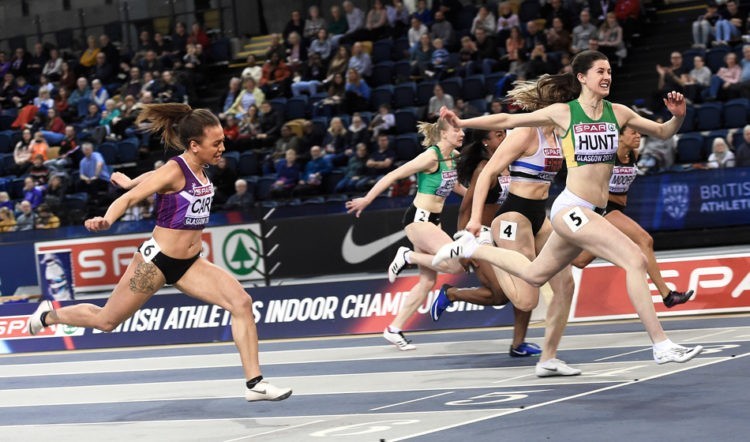
In February she won the British indoor 60m title in 7.39 before improving to 7.36 for fourth at the Müller Indoor Grand Prix in Glasgow. Then, when outdoor track meets started, she raced exclusively at 100m instead of 200m at events ranging from the British Champs in Manchester, where she was fourth, to her first Diamond League in Doha, where she placed sixth.
“I can’t describe how good it was to go to my first Diamond League in Doha,” she says. “To experience the hype and energy there was really fun.”
She turns 19 in May and is looking forward to returning to her specialist distance of 200m after spending 2020 working on her ability get out the blocks quickly. “We also felt the biggest gains were to be made over 100m and we treated it almost as a freebie year,” she explains.
“We stripped back and focused on that start again and it definitely really helped and I saw an improvement in my start. At the British Champs I felt really confident and able to put together a first 20m.”
She adds: “It was interesting to have the focus on the 100m because going into an event knowing it’s not your favorite event and to be one of the slowest was an interesting process for me to learn. It was good to head into a race not being too star-struck and to just focus on my lane.”
She has also stepped up her training on the track and in the gym. “Heading into next year I’m in a really good position,” she says.”I have more confidence in my technical abilities and during what has been effectively a free year I’ve upped the amount of time I’ve done in the gym. Now three a week and I’m seeing a lot of gains from that.”
She adds: “This winter increased track sessions and gym so I now train six days a week. It was rough for my body to deal with for the first two weeks but I’m not getting used to that kind of exertions and I’m discovering recovery techniques that work for me.
“I really do enjoy winter training in a bit of a sadistic way. I’ve liked being back on the track and in the gym this winter. If you want to get to a certain level, you have to love what you’re doing. My coach Joe is always cracking jokes and creates a really good environment to be in.”
So what really motivates her to put on her kit and start training? Is it the Olympics or World Under-20 Championships next year? Or the idea of improving her PBs?
“I think it’s a combination,” she says. “But the most important to me is putting the work in so my idols become my rivals. That’s what gets me out of bed in the morning. I want to be the best that I can be and be up there with those people who I used to idolize and now want to race.”
As for those idols, she says: “A younger me definitely looked up to Allyson Felix a lot. I’ve always looked up to Dina (Asher-Smith) because she’s always such an amazing role model for the sport. She encompasses a lot of values that I hold dear to myself too.
“Shaunae Miller-Uibo is an amazing athlete and people like Shelly-Ann Fraser-Pryce have gone away and had a baby and returned to run well so there are lots of amazing female role models out there.”
So far she has not spent much time with any of them. The only time she has bumped into Asher-Smith, for example, was the Great CityGames in 2017. But she adds: “Hopefully I’ll be meeting most of them next year in Tokyo!”
by Jason Henderson
Login to leave a comment
Tokyo 2020 Olympic Games
Fifty-six years after having organized the Olympic Games, the Japanese capital will be hosting a Summer edition for the second time, originally scheduled from July 24 to August 9, 2020, the games were postponed due to coronavirus outbreak, the postponed Tokyo Olympics will be held from July 23 to August 8 in 2021, according to the International Olympic Committee decision. ...
more...No Millrose Games in 2021 due to the coronavirus pandemic
The iconic meet had been scheduled to take place on February 13.
The 2021 Millrose Games has been cancelled due to the coronavirus pandemic.
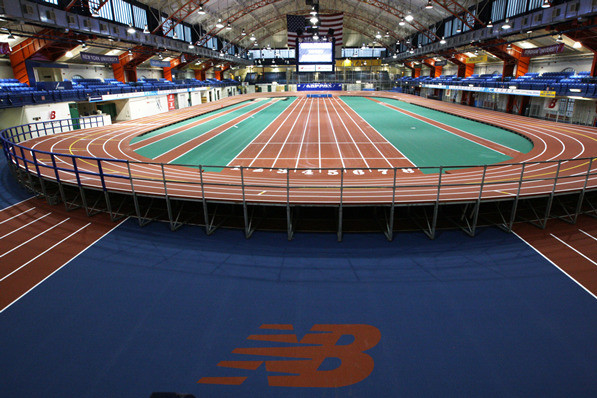
The 114th edition of the iconic meeting, which was first held in 1908, had been scheduled to take place on Saturday February 13 at The Armory in New York City.
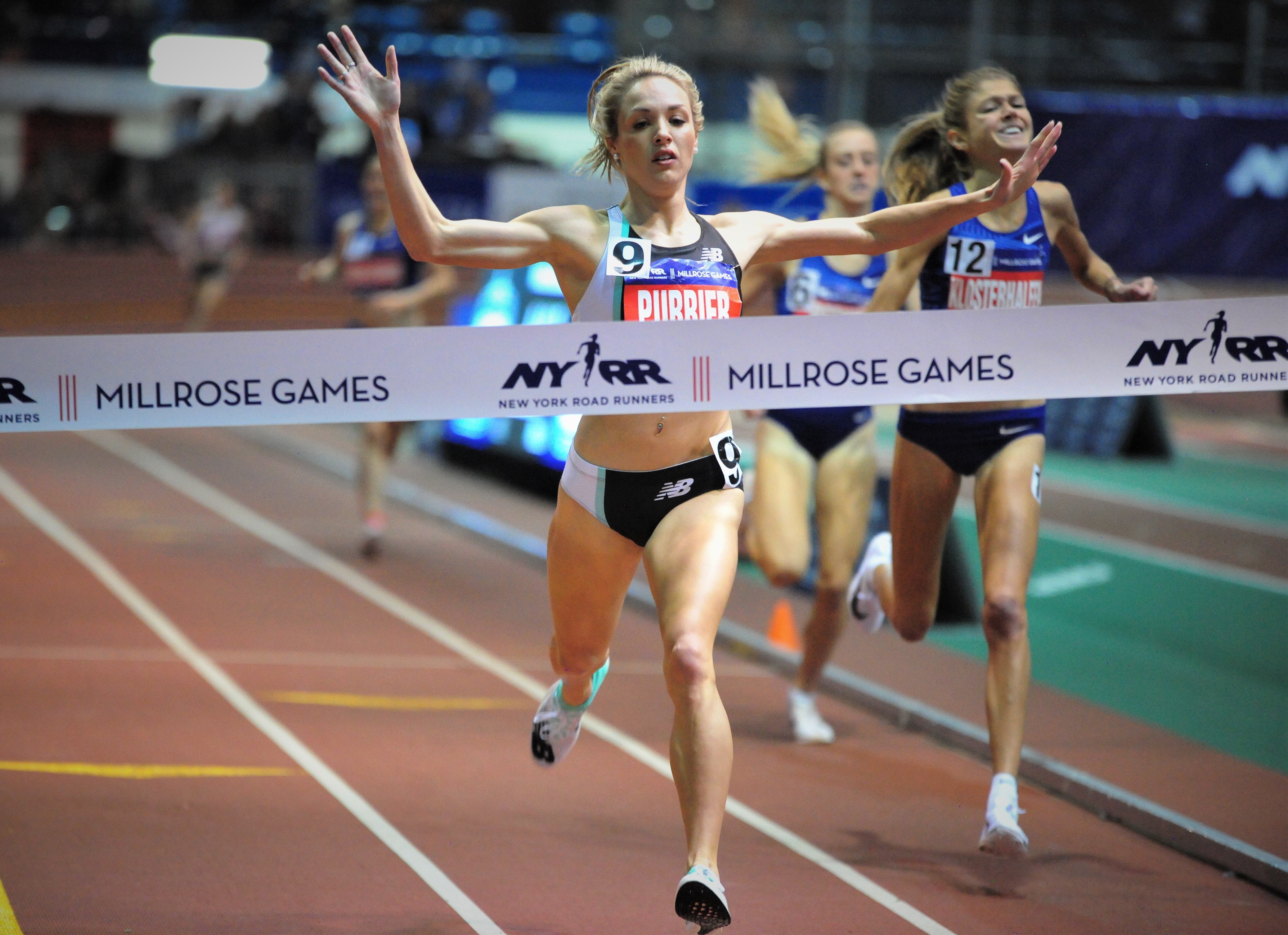
But the event will now return on February 12, 2022.
“The Armory Foundation has decided after extensive consultations with health experts that, due to rising cases nationally of Covid-19, it is advisable to cancel the 114th Millrose Games, previously scheduled for February 13, 2021 at The Armory in New York City,” reads a press release.
“First run in 1908, the Millrose Games has featured legends such as Paavo Nurmi, Eamonn Coghlan, Allyson Felix, Joetta Clark, Carl Lewis, Jackie Joyner-Kersee, Bernard Lagat and many others. However, given the health situation in New York and across the country, the prudent thing to do is to abstain this coming year.”
Britain’s Chris O’Hare (pictured) is a Millrose Games regular, with the multiple European medallist having won the famous Wanamaker Mile in both 2018, when he became the first British man to win the prestigious indoor race since John Whetton in 1965, and in 2020.
Meet director Ray Flynn said: “Canceling the iconic Millrose Games was a very difficult decision, but with all the health concerns surrounding an event of this complexity, rather than risking the athletes, officials, meet personnel, media and others, we have decided to wait until February 12, 2022, for the next edition of the Millrose Games."
by Athletics Weekly
Login to leave a comment
NYRR Millrose Games
The Pinnacle of Indoor Track & Field The NYRR Millrose Games, first held in 1908, remains the premier indoor track and field competition in the United States. The 2025 edition will once again bring the world’s top professional, collegiate, and high school athletes to New York City for a day of thrilling competition. Hosted at the New Balance Track &...
more...Shannon Rowbury just might make her fourth US Olympic Team post-pregnancy
Shannon Rowbury proved she can run elite times post-pregnancy. Next year, she hopes to be the latest example that an Olympic career doesn’t end with motherhood.
“Having a child isn’t a death sentence,” she told fellow Olympic runner and mom Alysia Montaño in a recent On Her Turf interview. “You can come back even better.”
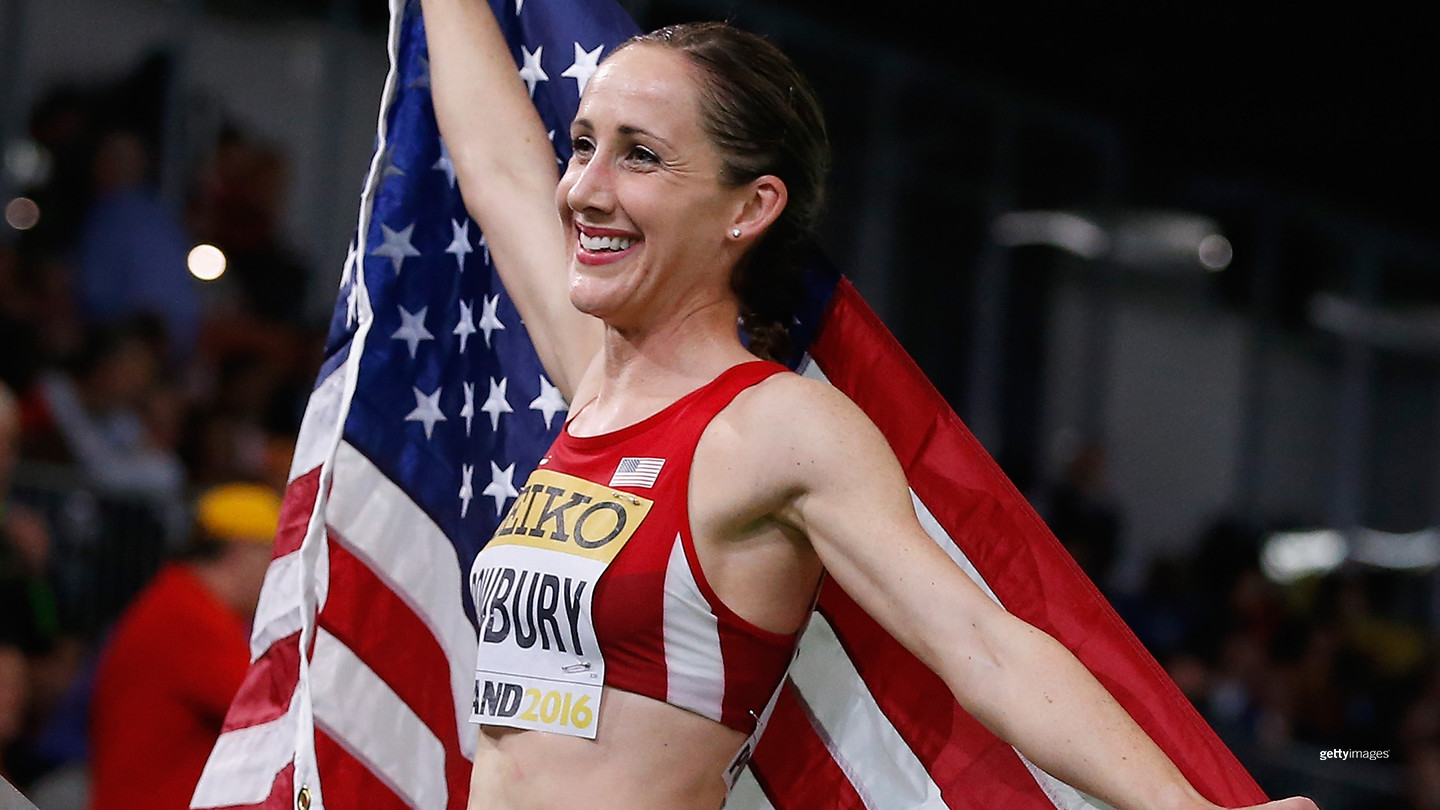
Rowbury, a 35-year-old, three-time Olympian, raced this month on the Diamond League circuit for the first time in three years and since having daughter Sienna in June 2018.
It went pretty well. She clocked her second-fastest 5000m ever, a 14:45.11 to place fifth in Monaco.
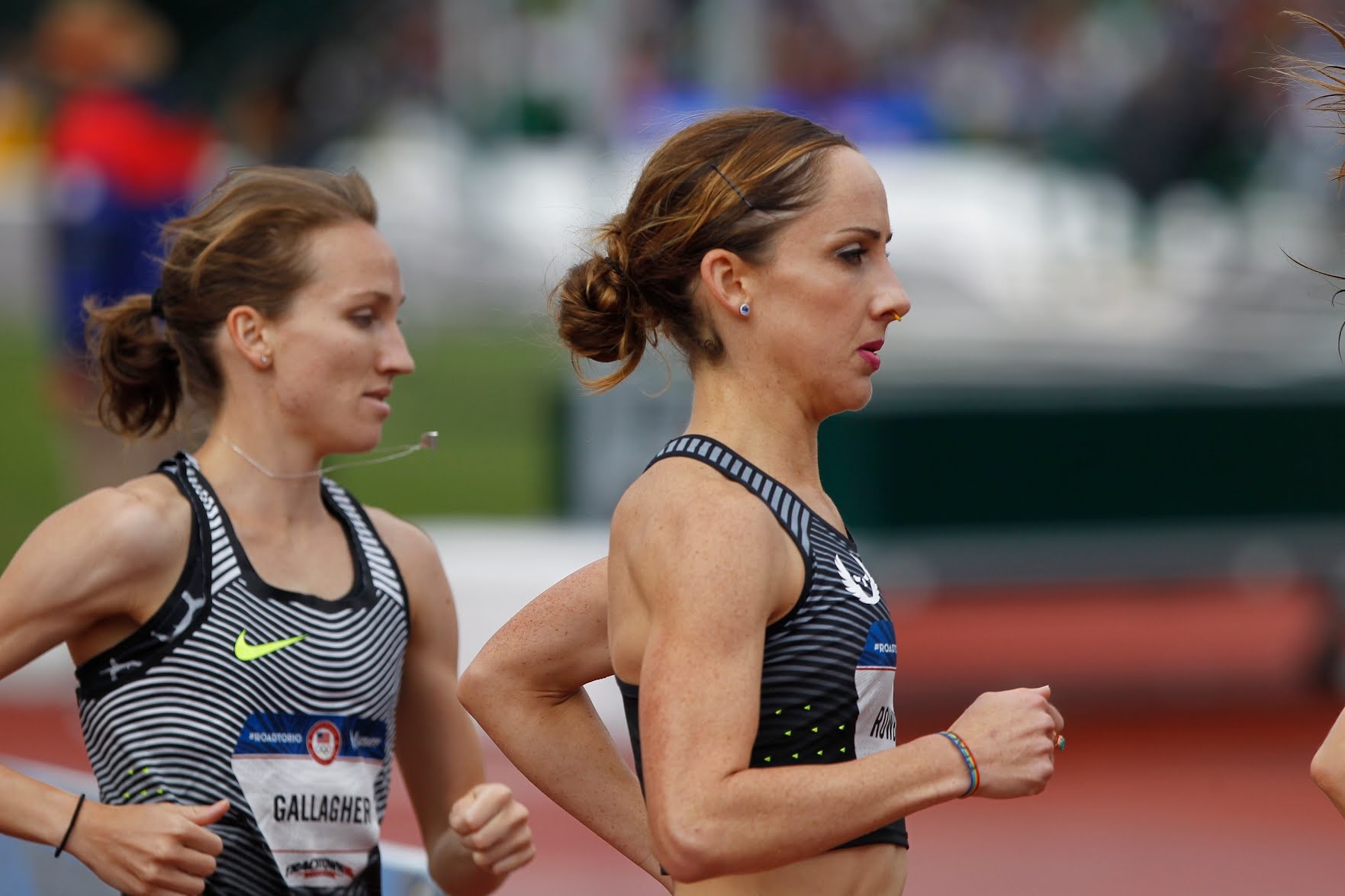
Only four other Americans have ever gone faster. One is retired (Shalane Flanagan). It’s very possible that two of the others could focus on other distances next summer (Shelby Houlihan and Molly Huddle).
Rowbury is right in the mix to make a fourth straight Olympics, given three U.S. women qualify per event. She can become the oldest U.S. woman to race on an Olympic track since Gail Devers in 2004, and one of the few moms to do so.
Rowbury is the former American record holder at 1500m and 5000m with a pair of fourth-place finishes from racing the former at the last three Olympics.
In 2018, she returned to training eight weeks after having Sienna. Ramping up too quickly led to a stress fracture in early 2019. She felt fatigued from sleep deprivation and breastfeeding and struggled with her identity.
Will I ever be the same? How much do I have left? Who am I without sport?
“I love my daughter,” she said last year, “but I loved my life before as well.”
She kept running. Rowbury placed sixth in the 5000m at the 2019 USATF Outdoor Championships, racing on a lack of training due to the injury. She missed an Olympic or world championships team for the first time since 2007, when she graduated from Duke.
Then in November, she won the U.S. 5km title on the roads in New York City. Rowbury raced for the first time this year in July and is still in Europe, torn while spending three weeks away from Sienna and husband Pablo Solares, a former middle-distance runner from Mexico.
“I felt very strongly that I would never prioritize my career over my family and over my daughter,” she said. “My performance right now is testament to the fact that you can have a healthy, natural weaning process, and you can still compete at a very high level.”
Rowbury partly dismissed motherhood earlier in her career because she was afraid of potential consequences. In more recent years, runners including Rowbury, Montaño and Allyson Felix fought for maternity protection in the sport, such as with health insurance through USA Track and Field and in sponsor contracts.
“I don’t think that any woman should be told she needs to do something in order to compete as an athlete or to pursue her dreams,” Rowbury said.
by Yahoo Sports OlympicTalk
Login to leave a comment
Tokyo 2020 Olympic Games
Fifty-six years after having organized the Olympic Games, the Japanese capital will be hosting a Summer edition for the second time, originally scheduled from July 24 to August 9, 2020, the games were postponed due to coronavirus outbreak, the postponed Tokyo Olympics will be held from July 23 to August 8 in 2021, according to the International Olympic Committee decision. ...
more...Noah Lyles’s world record tease
It looked like Noah Lyles had set a 200m world record, but it turned out he ran a little short
The second modified event of the 2020 Diamond League schedule, the Inspiration Games, was held on Thursday, and the penultimate event of the day, the men’s 200m, produced a lot of drama. Current 200m world champion Noah Lyles was one of three competitors lining up for the race, and he dominated, crossing the line in 18.91 seconds, absolutely smashing Usain Bolt‘s world record of 19.19. Except… it turned out that he’d run in the wrong lane and only covered 185m. For a few minutes, though, Lyles set the track world on fire.
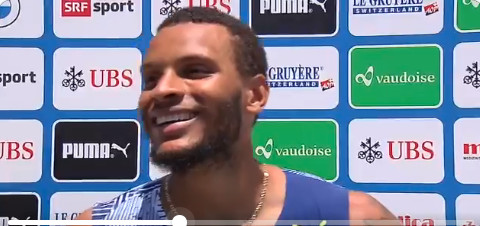
World record tease
When Lyles first crossed the line and everyone still believed he had broken the world record, there was talk on track Twitter that it had been a wind-aided run and wouldn’t count as an official record. Even if it had been wind-aided, that would still be an incredible run. He wouldn’t have just beaten Bolt’s record, he would have obliterated it. Unfortunately for everyone (Lyles, the track world and whoever put him in the wrong lane), there was a mistake and he ran 15m short. Once everything was sorted out, Lyles tweeted, “You can’t be playing with my emotions like this … Got me in the wrong lane.” We think it’s safe to assume that he was not amused by the error.
De Grasse and Felix
Lyles’s run and all of the confusion that came with it stole the show on Thursday, but there were some other great (and legit) race results before that mishap occurred. Canada’s Andre De Grasse raced the 100-yard dash against Jimmy Vicaut of France and Olympic 110m hurdles champion Omar McLeod of Jamaica, grabbing the win in 9.68. This time equates to about a 10.59 100m run, which is far off his personal best at the distance. Still, a win is a win, and De Grasse continues to show he’s in good shape as the world creeps back toward a regular racing schedule.
Another big result came from U.S. Olympic champion Allyson Felix, who won the 150m race and set her PB at the distance with a time of 16.81. She upset pre-race favourite Shaunae Miller-Uibo of the Bahamas for the win. Felix ran alone in Walnut, Calif., while Miller-Uibo raced in Florida and the third competitor, Swiss world championship 200m bronze medallist Mujinga Kambundji, raced in Zurich. After the race, Felix said it was “very strange” racing alone on the track. “It feels sort of like practice, but not even that, because there are no teammates.”
2020, the year of off-distance racing
Since races slowly began to return, there have been a lot of irregular, off-distance events being contested. At the Impossible Games in June, Karsten Warholm set the 300m hurdle world record and the Ingebrigtsen brothers ran a 2,000m race. Thursday saw the men’s 100-yard and women’s 150m races, as well as a women’s 300m hurdle event. Who knows, maybe the Diamond League will end up adopting some of these rare events and using them in the official 2021 schedule.
by Running Magazine
Login to leave a comment
Allyson Felix notched a pair of impressive victories to highlight the Inspiration Games
The Zurich Diamond League organisers' entertaining and innovative answer to the global coronavirus pandemic that brought together 30 athletes competing in seven venues across two continents on Thursday (9).
Felix, competing in Walnut, California, near Los Angeles, kicked off the meeting with a solid victory in the 150m and brought it to its conclusion with her anchor leg on the victorious squad in the closing 3x100m relay. All without another competitor on the track.
Felix’s immediate reaction to this first in her storied career?
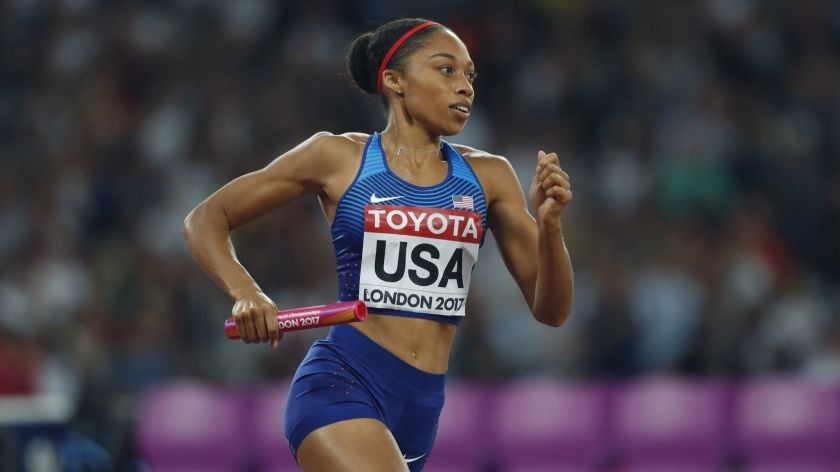
"Very strange,” she said, with a wide smile. “It’s kind of like practice but not really, with no teammates.”
Running alone, she said, “It's hard to challenge yourself. But I love this sport so any chance to get out here and run. I'm all about that.”
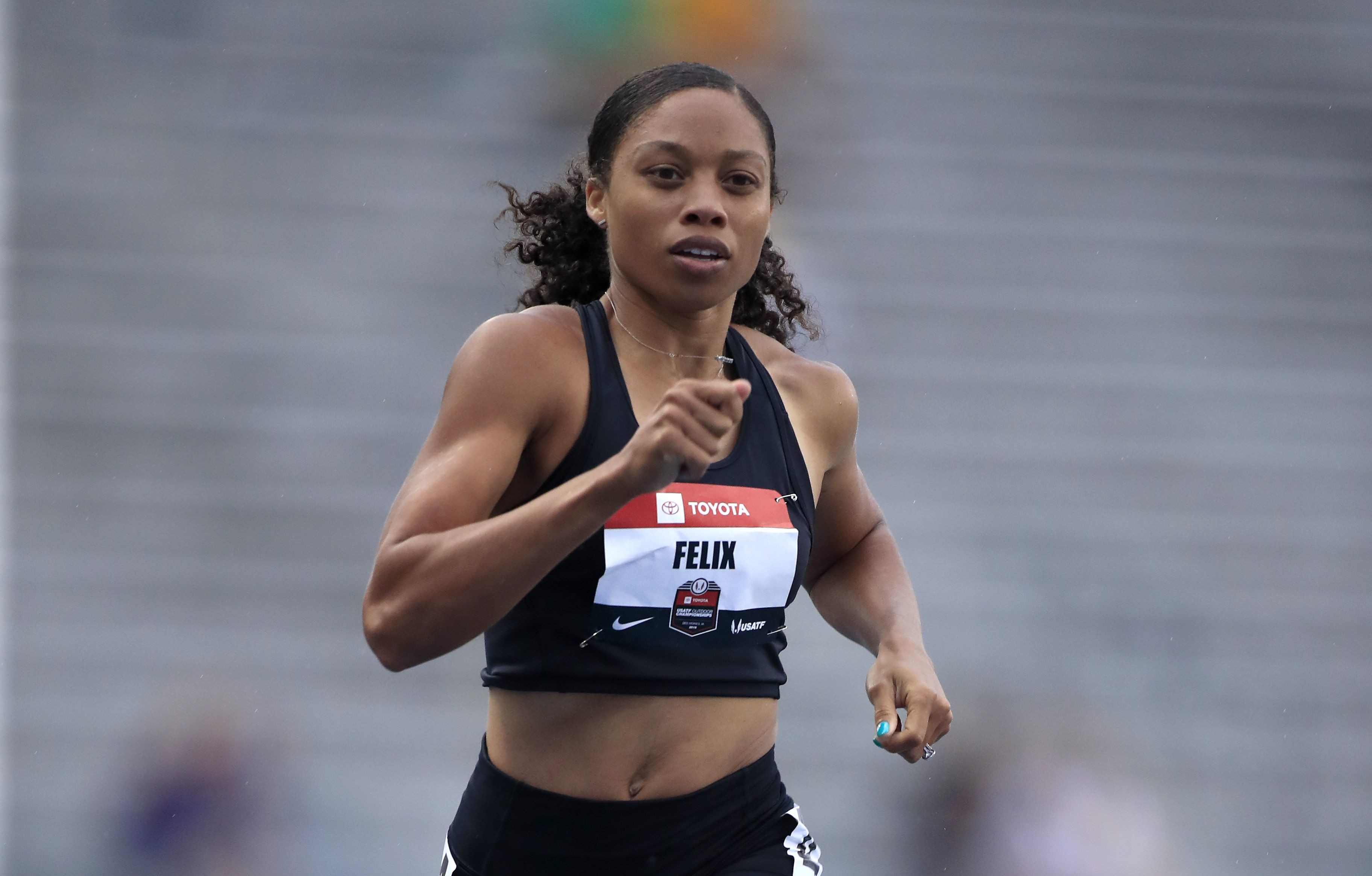
Action on the tracks kicked off with the women's 150m, with Swiss star Mujinga Kambundji competing in Zurich, Olympic 400m champion Shaunae Miller-Uibo in Bradenton, Florida, 8000 kilometres and six time zones west, and Felix, another 4000 kilometres to her west.
With track configurations and the camera angles on the synchronized stream varying slightly, it was difficult to follow who was leading until moments before the three approached the finish line. Felix crossed hers first in 16.81, well clear of Miller-Uibo who stopped the clock in 17.15. Kambundji clocked 17.28.
Oddly enough, even as they raced from tracks on opposite coasts of the United States, the winds in their respective races were nearly identical. Felix battled a 2.6 m/s headwind and Miller-Uibo a 2.5.
Felix returned to the track to team with Candace Hill and Tianna Bartoletta to collect another dominant victory in the meet-capping 3x100m relay, the trio clocking 32.25 ahead of a Swiss team that clocked 32.50 in Zurich and a Dutch squad that clocked 32.94 in Papendal.
"This is fun," Felix said. "I can't wait until we can do it in person."
Conversely, the men's 100yd was the day’s only on-site face-off, with Jimmy Vicaut of France, Canadian Andre de Grasse and Olympic 110m hurdles champion Omar McLeod meeting on the Bradenton track where they faced a 3.4m/s headwind. For the first half, it was an evenly matched affair until de Grasse, running in the middle of the track, and Vicaut, running on the inside, broke away. De Grasse closed best to nab the narrow victory in 9.68, 0.04 ahead of Vicaut. McLeod was a distant third in 9.87.
by World Athletics
Login to leave a comment


